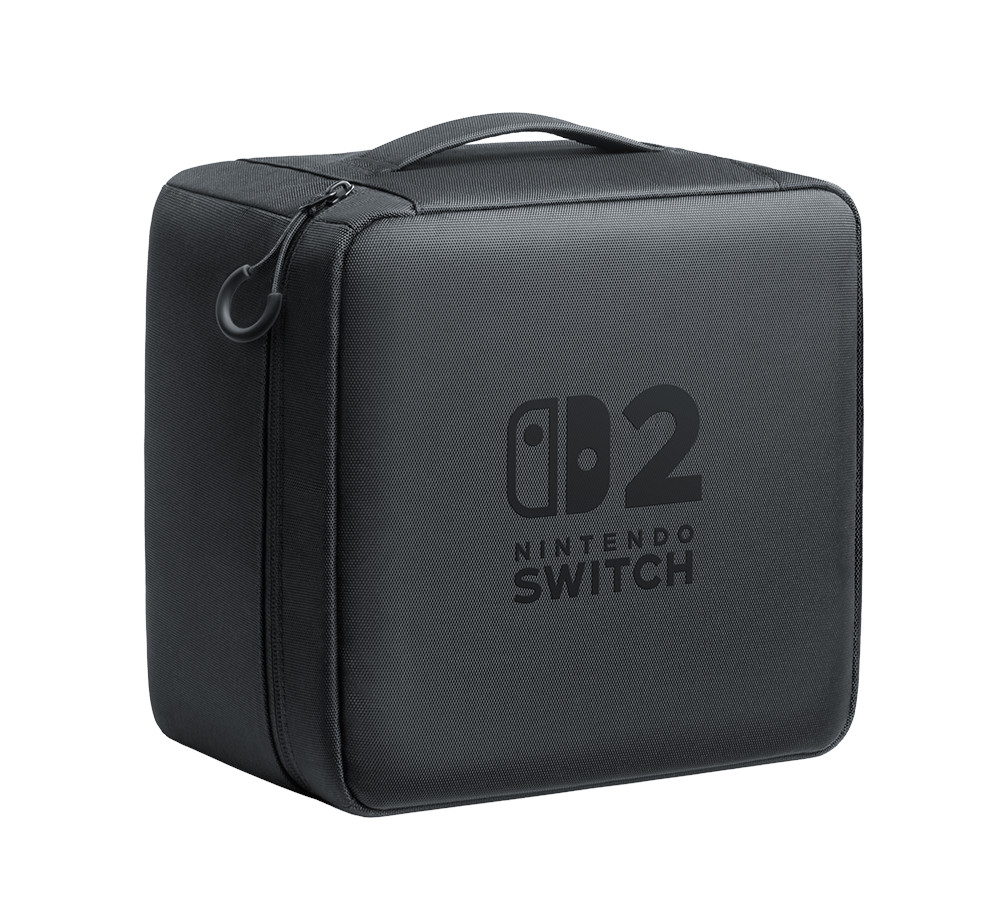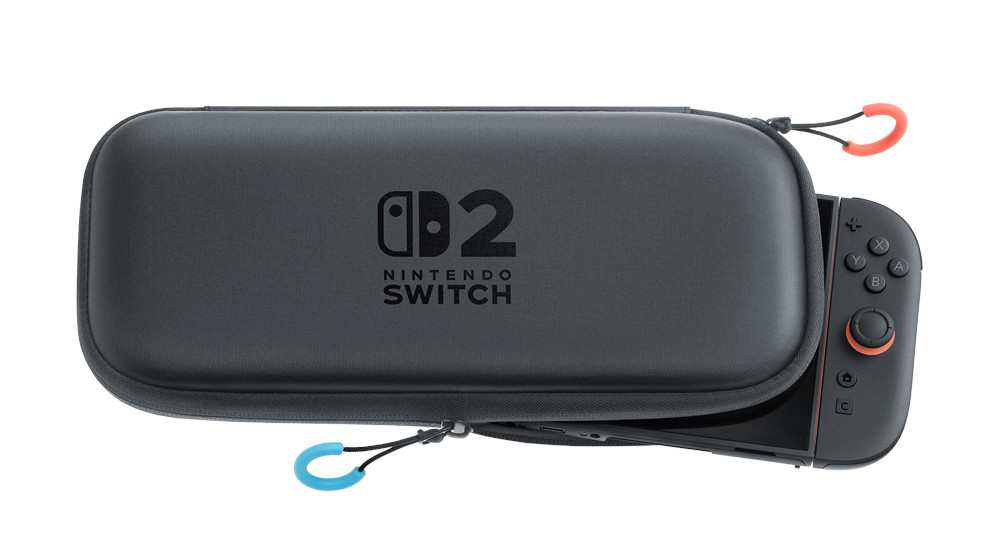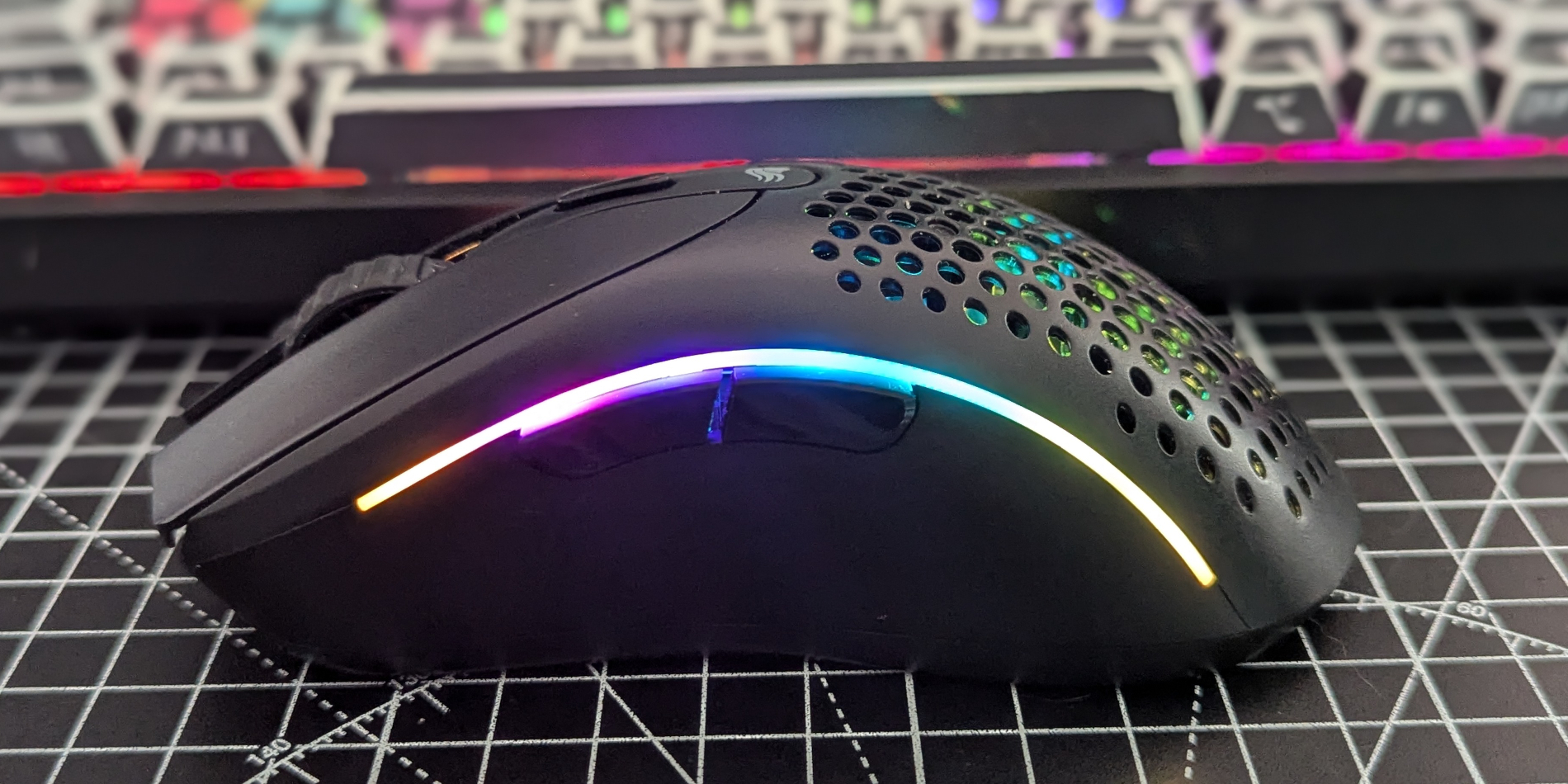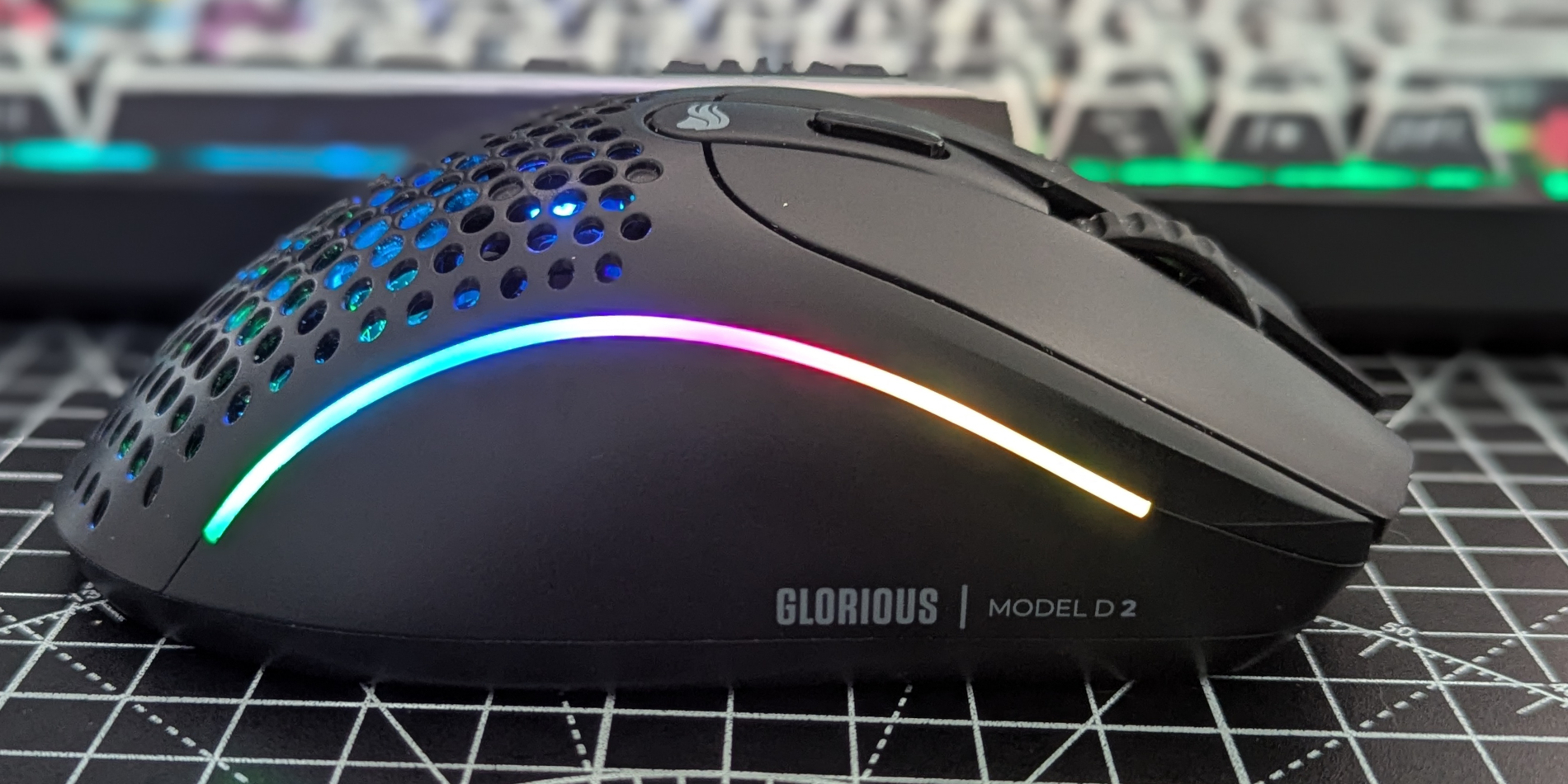Everything Announced in the Nintendo Switch 2 Direct
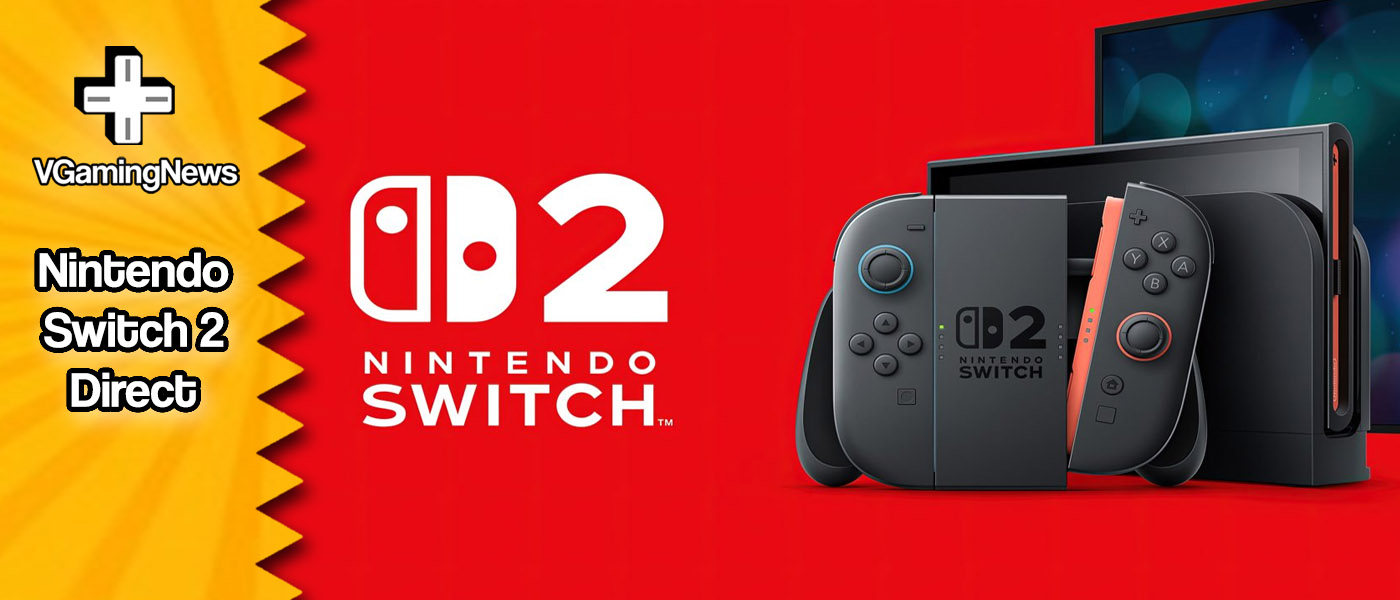

There we have it! It’s been a long time coming, but we finally have concrete info on what Nintendo has in store for their next hybrid console.
We’ve broken down all the talking points from the presentation, along with the thoughts of the VGamingNews team on the really juicy topics. Click on any of the buttons below if you want to jump into a specific section.
If you didn’t catch the Direct, you can check out the whole thing here.
Nintendo Switch 2 At A Glance
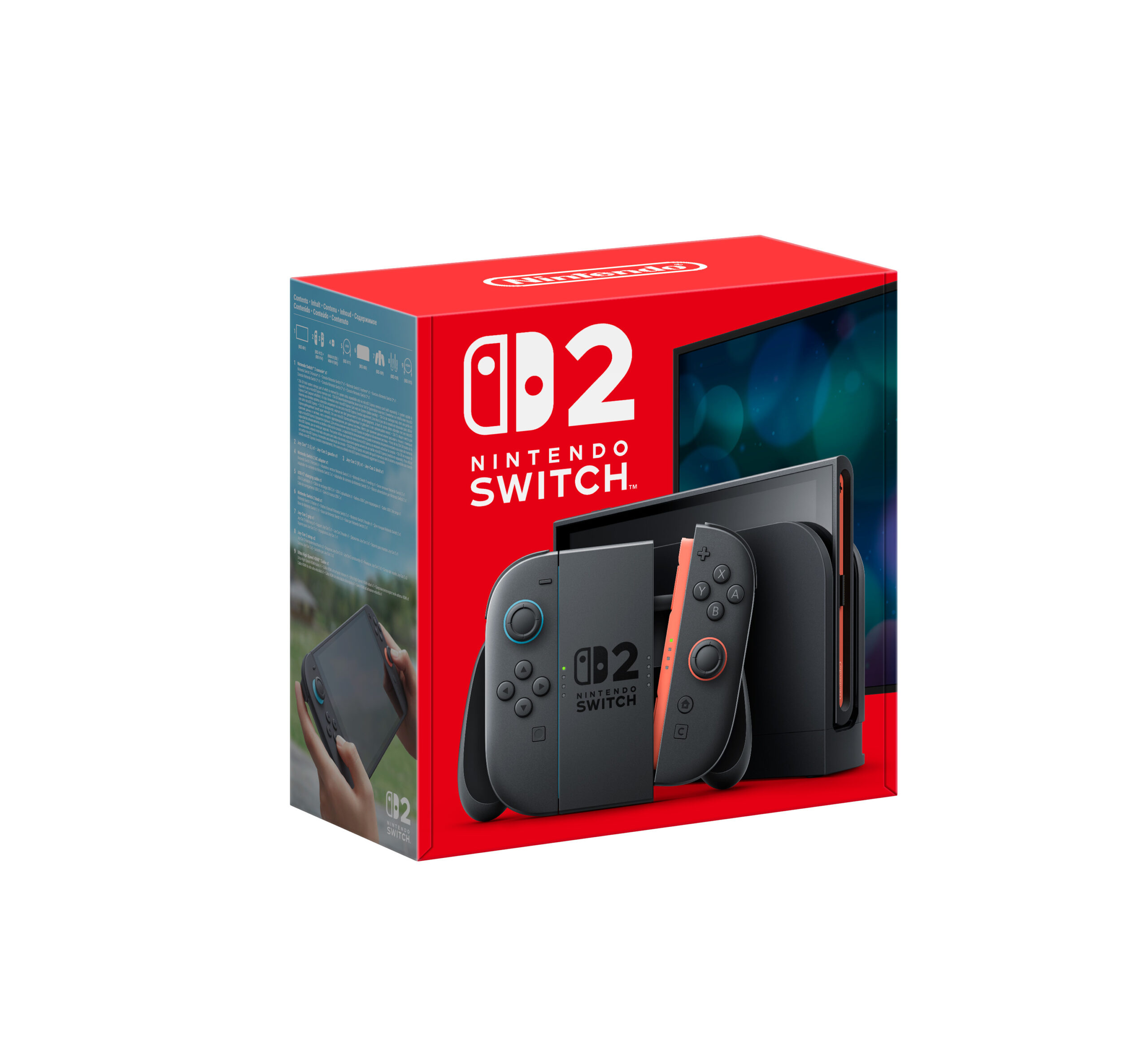
The Nintendo Switch 2 will release on Thursday 5th June 2025, at the price of £395.99 for the console alone, or £429.99 if you want it bundled with a digital copy of Mario Kart World.
From a price perspective, the Switch 2 is almost right in line with the cost of their original hybrid. When it was released back in March 2017, the Switch retailed for £279.99 in the UK – that works out at £367.39 if you adjust the cost for inflation, so the new release doesn’t reflect much of a price increase at all.
Pre-orders go live on Tuesday 8th April 2025, from the My Nintendo Store and are… complicated. In an attempt to see off the greedy scalpers who practically held the PS5 hostage upon its release, Nintendo has decided that pre-orders for their new console will be by invite only.
There are a few criteria that will decide whether Big N is going to offer you the chance to get a pre-order for the Switch 2:
- First up are Nintendo Switch Online members who have had a continuous subscription for two years by 31st March 2025. They will also have to have an active membership on the day that the pre-order is placed. For those with family memberships, only the person who has purchased the membership will be eligible. Other members of the family will not be considered as eligible.
- Those who “have spent a certain amount of time playing purchased/paid Nintendo Switch games, prioritising those with more playtime” will also get an invite. Those who choose to share usage information with Nintendo and have opted in to share usage information will also be considered.
- Finally, those who have opted in to receive promotional emails and messages from Nintendo have a boosted chance of a preorder invite.
Unlike the original Switch, there’s been no mention of alternative colour schemes for the Switch 2 at the moment, with only the single black console and blue/salmon highlighted Joy-Con version available at launch.
Our take
Drew Sherratt, Features Editor
“The console price is right in the sweet spot, I reckon. It’s clearly a more powerful unit than the original Switch and looks to much more well thought out from a design perspective, so to have a price within 10% of the first console (after inflation) is decent.
I’ve got really mixed feelings on the pre-order situation though – perhaps because I’m in a family membership and I’m not the one who pays the bill! I think it’s admirable for Nintendo to put restrictions on pre-orders that would certainly seem to prioritise real players over bots and blaggers, but there’s something in me that doesn’t trust Nintendo to get this right. I foresee a lot of grumpy Nintendo-lifers on release day.”
Nintendo Switch 2 Hardware
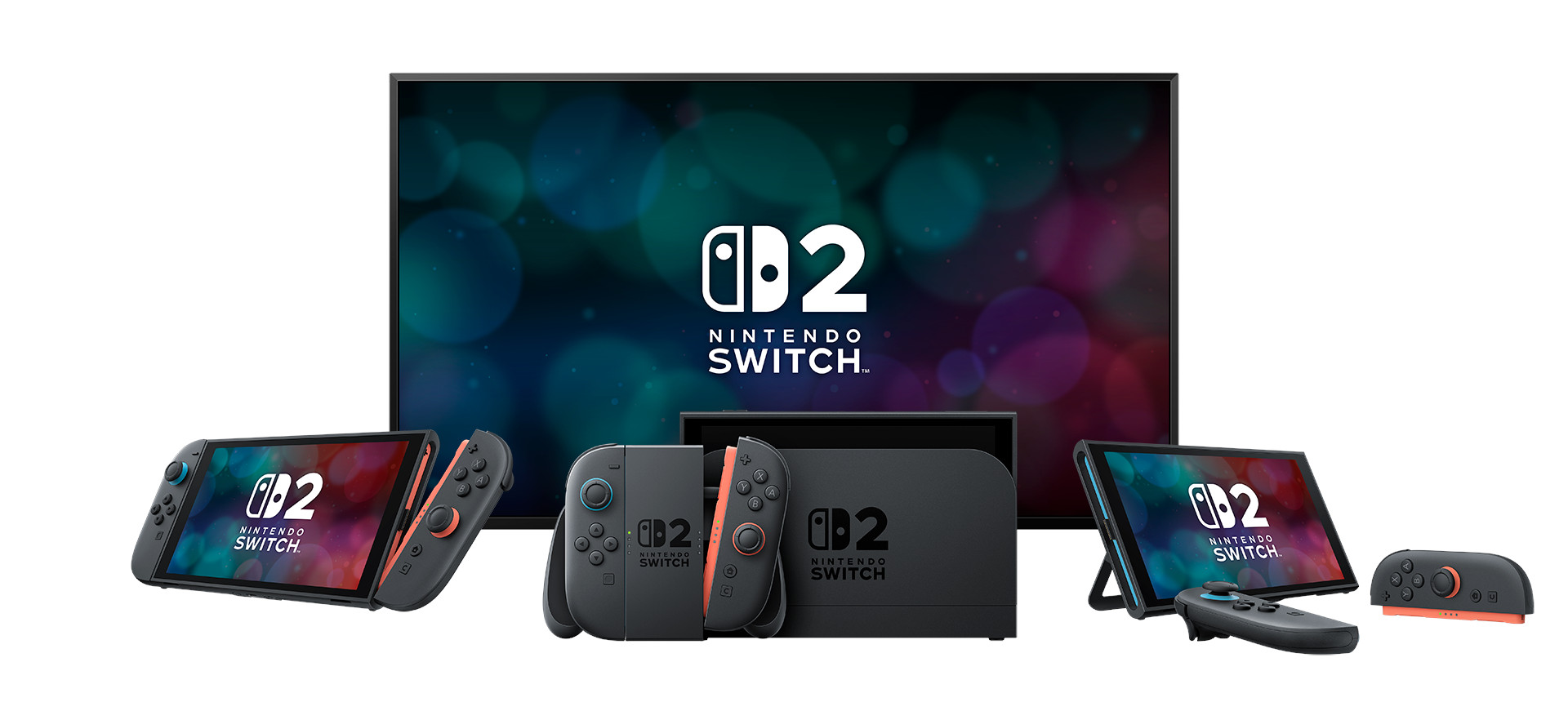
The Nintendo Switch 2 may look almost identical in appearance to its predecessor, but there are several key upgrades to find within the hybrid console.
The Switch 2 boasts a 7.9″ LED screen that is capable of outputting at 1080p. With HDR10 support, the Switch 2 has a maximum of 120fps and will offer more eye catching visuals in particularly bright or dark areas on screen.
In addition to the USB-C port on the bottom of the console, Nintendo has learned from their mistakes and have also added another USB-C port to the top of the console. No more fiddling with rickety stands with spaces cut out to accommodate a charger, instead, you can just plug straight into the top port without any fuss. The rear kickstand has also been redesigned; the new stand is entirely adjustable and runs the length of the console, making it significantly more robust than on the original model.
Perhaps the biggest upgrade from the Switch 1 is in the internal memory size, which leaps from a paltry 32GB (64GB for the OLED model) to a much more chunky 256 GB. But if the juiced up internal storage isn’t enough for you, the Switch 2 still lets you add some removable storage too, in the form of a microSD Express Card up to 2TB in size. Sadly, you won’t be able to reuse your microSD from your original Switch, as the Switch 2 only supports Express Cards.
One of the key new features of the Switch 2 is GameChat, a function that lets you voice- and video-chat with other players while you’re gaming. To make this feature useable right out of the box, Nintendo have added a microphone into the top of the console. The Direct made some pretty bold claims about just how effective the noise cancelling aspects are, suggesting it would single out your voice over the top of a blender in the same room… colour me sceptical!
In the box
The Nintendo Switch 2 will come packaged with:
- Nintendo Switch 2 console
- Joy-Con 2 controllers (L+R)
- Joy-Con 2 Grip
- Joy-Con 2 Straps
- Nintendo Switch 2 Dock
- Ultra High-Speed HDMI Cable
- Nintendo Switch 2 AC Adapter and USB-C Charging Cable
The redesigned dock allows the Switch 2 to plug into the TV and output games in 4K. It also retains the handy ethernet connection from the OLED dock. Using the included high-speed HDMI 2.1 cable, players can get up to 120FPS out of Nintendo’s new hybrid, which is perfect for fast-paced shooters that need precision aiming. Like the Switch 1 dock, two additional USB-A sized ports are tucked away on the side.
The Nintendo Switch 2 Joy-Con 2 improves on the original controllers rather than reinventing the wheel. The sticks and buttons are larger on the Joy-Con 2, allowing for better control in games. Optical sensors have been added to give each controller mouse functionality and the new ‘C’ button on the right Joy-Con allows players to be able to chat with other players. NFC transmission for scanning amiibo also remains intact.
The Joy-Con grip is included in the box, although it does not offer any charging facility for the Joy-Con 2.
A new magnetic system is employed to keep your controllers firmly in place. The controllers are locked in place with redesigned metallic SL/SR buttons. A button close to the shoulder buttons can be pressed to release the controllers from the side of the console. It remains to be seen if Nintendo has improved the control sticks by eliminating stick drift.
WE THINK
Joe Whitfield, Editor
“I’m a big fan of the larger Joy Con. I don’t like the feel of the original ones due to having hands like Donkey Kong. It’s interesting to see how the mouse functionality pans out. It seems with the focus on 120fps and mouse controls, Nintendo is looking to appeal to the hardcore shooter fans.
The lack of colour bugs me. I can understand Nintendo’s decision to sacrifice colour to make sure the Switch 2 stands apart from the current model, but that was part of Nintendo’s charm. It made the console stand out when placed next to the PS5 and Xbox Series X.“
Accessories
Pro Controller 2
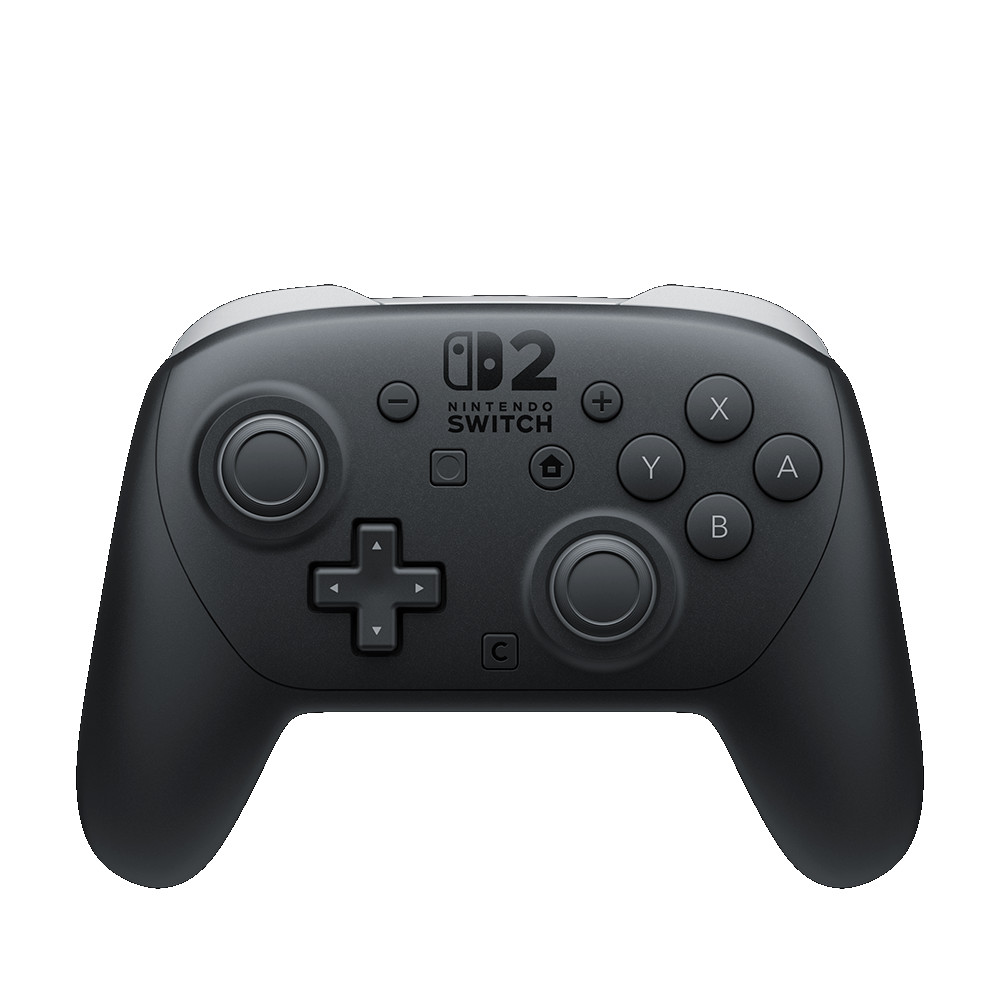
Of course, a new video game console needs a wealth of additional peripherals, and the Switch 2 already has you covered. We have a new pro controller that takes into account the new C button, but also comes with a pair of mappable GL/GR buttons on the rear of the controller and an audio jack too. The RRP is £74.99.
microSD Express Card
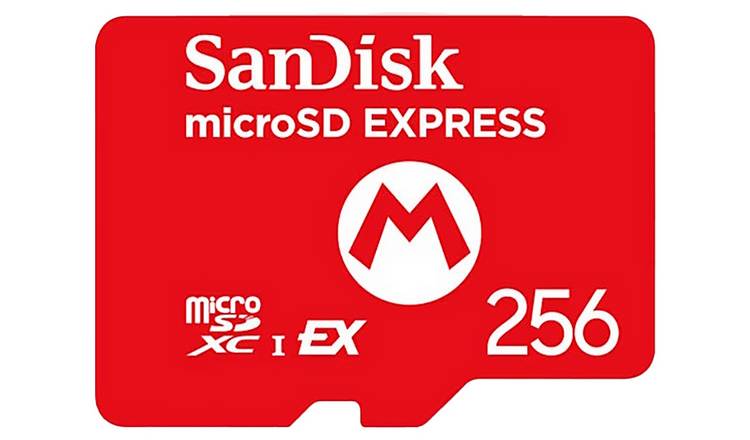
Since you’ll need to upgrade your existing microSD to an SD Express card, you might want to look at the Nintendo-branded 256GB SD cards, which will be available for an RRP of £49.99.
Nintendo Camera
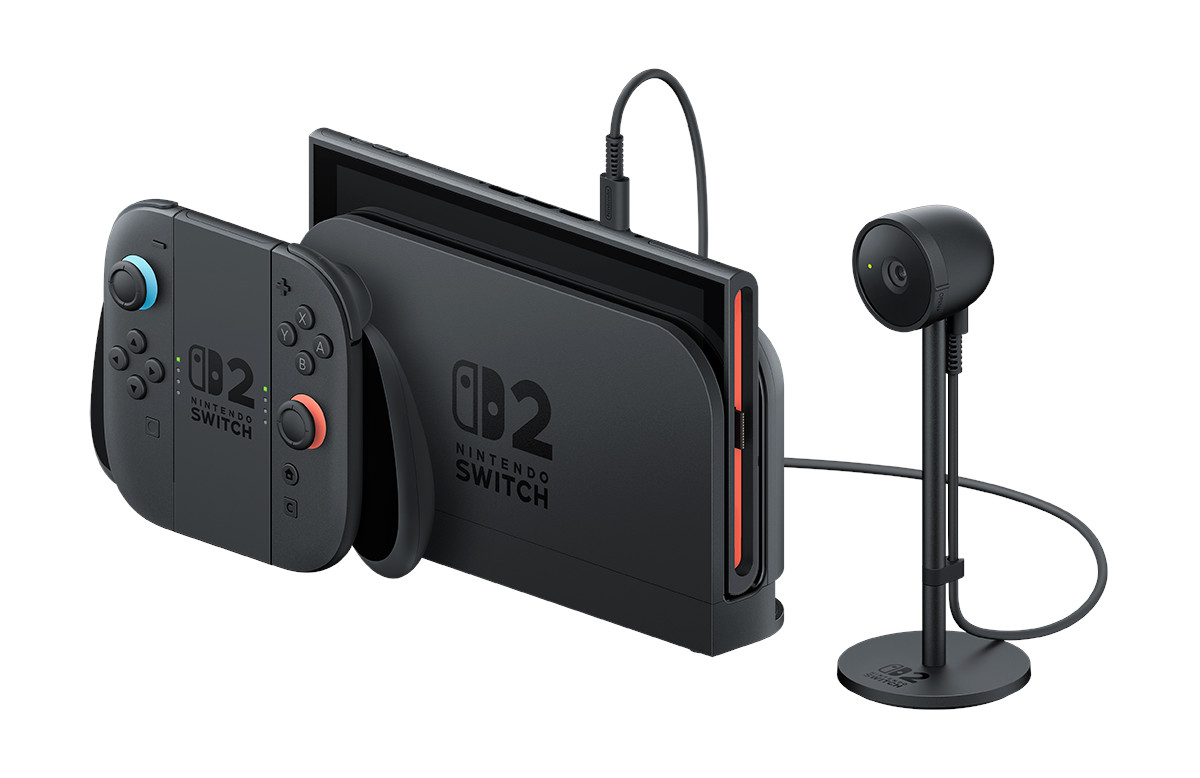
For gamers looking to use the new chat functions of the Nintendo Switch 2, the Nintendo Camera is available for £49.99. This USB-C webcam is powered through the top USB port on the Switch 2 and can identify solo players to clip them into the chat or immerse them in certain games.
Joy Con 2 Charge Grip
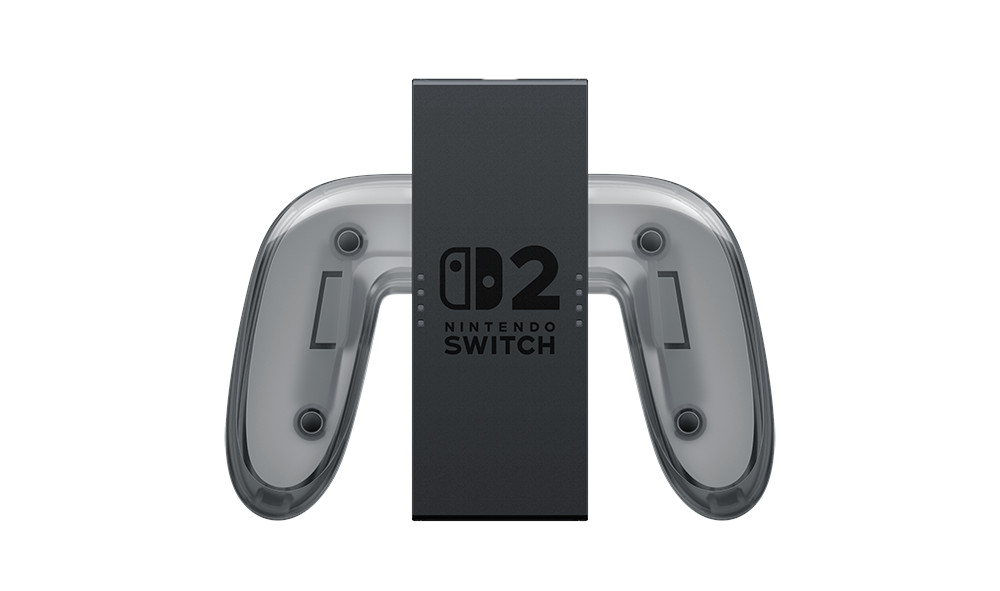
The Nintendo Charge Grip makes a return for the Switch 2. This Joy-Con 2 grip allows players to charge their controllers without them being attached to the console. This also includes GL/GR buttons that have been added to the Pro Controller. These mappable buttons are not on the standard grip, so could be worth the £25-£30 asking price.
Joy Con 2 Wheel
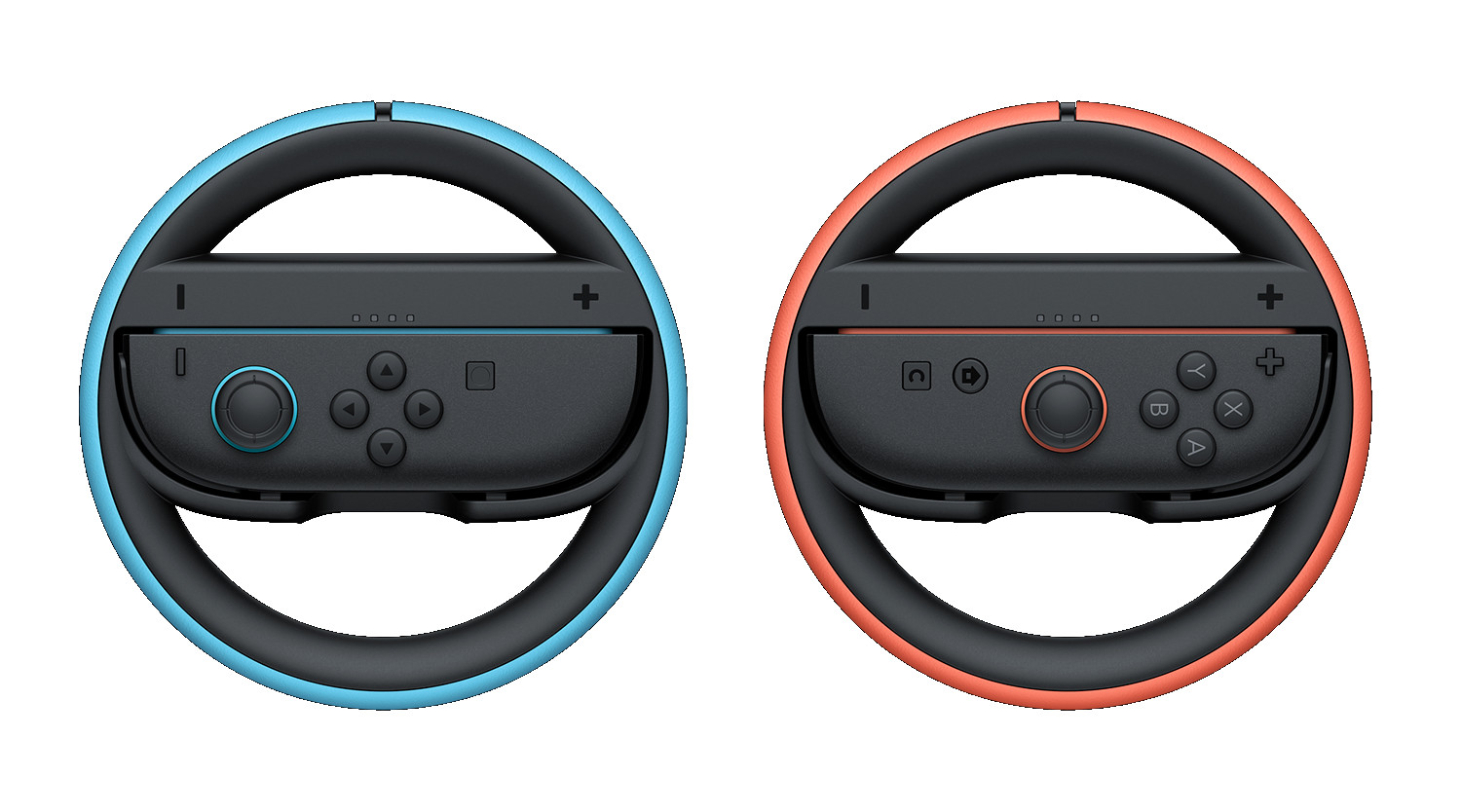
Joy Con Wheels also make a return, with a set of two costing around £15. The design is pretty close to the original but accommodates the larger controllers.
Carry Cases
Nintendo will also release two carry cases for the Nintendo Switch 2. The first is a slim carry case for the console and Joy-Cons, while a larger, cube-shaped one will be available to bundle up the dock, cables and pro controller along with the console.
Nintendo GameCube Controller

A wireless GameCube controller will also be available to Nintendo Switch Online subscribers so they can get the authentic experience when GameCube games are added to the NSO + Expansion Pass subscription on 5th June. The RRP is set at £58.99. The controller combines the wireless capability of the Wavebird but includes rumble. The controller will be charged via USB-C and includes the Share and C buttons.
Nintendo Switch 2 Games
Now that we’ve got the boring stuff out of the way, let’s dive into the best thing about a new console – the games.
The games releasing for Nintendo Switch 2 on 5th June 2025 currently look like:
- Mario Kart World (Nintendo)
- Nintendo Switch 2 Welcome Tour (Nintendo)
- Arcade Archives 2 Ridge Racer (Hamster)
- Bravely Default Flying Fairy HD Remaster (Square Enix)
- Civilization 7 (2K)
- Cyberpunk 2077: Ultimate Edition (CD Projekt Red)
- Deltarune Chapters 1-4 (Toby Fox)
- Fast Fusion (Shin’en)
- Fortnite (Epic Games)
- Kunitsu-Gami: Path of the Goddess (Capcom)
- Hitman World of Assassination – Signature Edition (IOI Industries)
- Hogwarts Legacy (Warner Bros Games)
- Nobunaga’s Ambition: Awakening Complete Edition (Koei Tecmo)
- Puyo Puyo Tetris 2S (Sega)
- Rune Factory: Guardians of Azuma (Marvelous)
- Street Fighter 6 (Capcom)
- Survival Kids (Konami)
- Split Fiction (EA)
- Yakuza 0 Director’s Cut (Sega)
Nintendo Switch Online + Expansion Pass
On 5th June, any Nintendo Switch Online + Expansion Pass subscribers who pick up a Switch 2 will have access to GameCube games as part of their subscription. The GameCube – Nintendo Classics service will launch with a handful of games with popular hits like Mario Sunshine, Luigi’s Mansion and Pokemon XD later in the year.
The launch line-up is set as:
- F-Zero GX
- The Legend of Zelda: Wind Waker
- Soul Calibur 2
Switch 1 Enhanced Games
Nintendo also plans to roll out Upgrade Packs for existing games, adding higher resolutions and frame rates, as well as a host of additional upgrades. For example, Kirby and the Forgotten Land will see a boost to the graphics, along with a new Star Crossed World expansion, which will only be available on the Switch 2.
These games will be available as standalone Switch 2 purchases or paid upgrades if players already own the title. In the case of both Zelda games, if players own the Nintendo Switch Online + Expansion Pass subscription, then the upgrade packs will be included at no extra cost.
- The Legend of Zelda: Breath of the Wild (5th June 2025)
- The Legend of Zelda: Tears of the Kingdom (5th June 2025)
- Super Mario Party Jamboree – Nintendo Switch 2 Edition + Jamboree TV (25th July 2025)
- Kirby and the Forgotten Land – Nintendo Switch 2 Edition + Star-Crossed World (28 August 2025)
- Metroid Prime 4 Beyond (available when the game launches)
- Pokemon Legends: Z-A (available when the game launches)
Switch 2 Post Launch Plans
The future of the Switch 2 post-5th June looks a little less pinned down, but there are things players can look forward to.
- Donkey Kong Bananza (17 July 2025)
- Drag X Drive (Summer 2025)
- Kirby Air Riders (2025)
- Hyrule Warriors: Age of Imprissonment (Winter 2025)
Third-party support for Switch 2 is also starting strong, with the following games announced for the console:
- 2K NBA (2025)
- 2K WWE (2025)
- Borderlands 4 (2025)
- Daemon X Machina Titanic Scion (5 Sept 2025)
- Duskbloods (2026)
- EA Sports FC (2025)
- Elden Ring: Tarnished Edition (2025)
- Enter the Gungeon 2 (2025)
- Final Fantasy VII Remake: Intergrade Edition (TBA)
- Hades 2 (TBA)
- Human Fall Flat 2 (TBA)
- Madden NFL (2025)
- No Sleep for Kaname Date – From AI: The Somnium Files (25 July 2025)
- Professor Layton and the New World of Steam (2025)
- Project 007 (TBA)
- Silksong (2025)
- Sonic x Shadow Generations (2025)
- Starseeker: Astroneer Expeditions (2026)
- Star Wars: Outlaws (2025)
- Story of Seasons: Grand Bazaar ( 27 August 2025)
- Tamagotchi Plaza (27 June 2025)
- Tony Hawks Pro Skater 3 + 4 (Summer 2025)
- Two-Point Museum (2025)
- Wild Hearts S (July 2025)
- Witchbrook (Winter 2025)
Switch 1 Upgrades
Along with the paid upgrades for some games (outlined above), other Switch 1 games will get free upgrades in the coming months. The upgrades will vary from game to game, but you can expect higher frame rates and faster loading times as these titles will make use of the Switch 2’s increased power.
The confirmed list at the time of writing is:
- Arms
- Big Brain Academy: Brain vs. Brain
- Captain Toad: Treasure Tracker
- Clubhouse Games: 51 Worldwide Classics
- Game Builder Garage
- New Super Mario Bros. U Deluxe
- Pokemon Scarlet and Pokemon Violet
- Super Mario Odyssey
- Super Mario 3D World + Bowser’s Fury
- The Legend of Zelda: Link’s Awakening
- The Legend of Zelda: Echoes of Wisdom
Other bits
There’s a lot of information to take in from the Switch 2 reveal. Here are a few of the nitty-gritty bits that don’t really fit into the above categories.
Backward compatibility
The Switch 2 is backward-compatible with most Switch 1 games both physically and digitally. Currently, the only title that will not work is the Labo VR game. Nintendo is testing all 16,000 games to make sure they have no issues running on Switch 2. Most of the games that have been tested do work, but some encounter some problems, which are being ironed out. It’s best to link out to their website as it’ll be constantly updated, so click here to be taken to the Nintendo Website.
Some games rely on Joy Con 1 features, such as the IR sensor or accessories like the Ring Fit Ring-Con. These will work on Switch 2, but players will have to connect the old Joy Con to make use of these features.
Nintendo Switch Online
Nintendo Switch Online will be available from Day One. The current NES, SNES, Mega Drive, N64, Game Boy and Game Boy Advance apps can be transferred from Switch 1 or downloaded from the e-shop. Nintendo will also release GameCube games as part of the Expansion Pass subscription exclusively for Switch 2.
GameChat
When the ‘free trail period’ for GameChat expires, players will only be able to access the service as part of the Nintendo Switch online service.
Game Key Cartridges
These look set to replace the Code-in-Box titles and offer players a physical Switch 2 cartridge instead. Rather than the game’s data being stored on the cart, a one-time download will be needed when the game is plugged into the console. Once the game is downloaded to the system, players can boot up the game, so long as the cartridge is inserted.
Unlike code-in-box games, Game Key titles are not linked to the player’s profile, meaning they can swap and trade with friends if they no longer want to play the game.
Thanks for taking the time to read our site. If you’d like to support us further, please consider buying us a coffee!
Pokemon That Need An Evolution
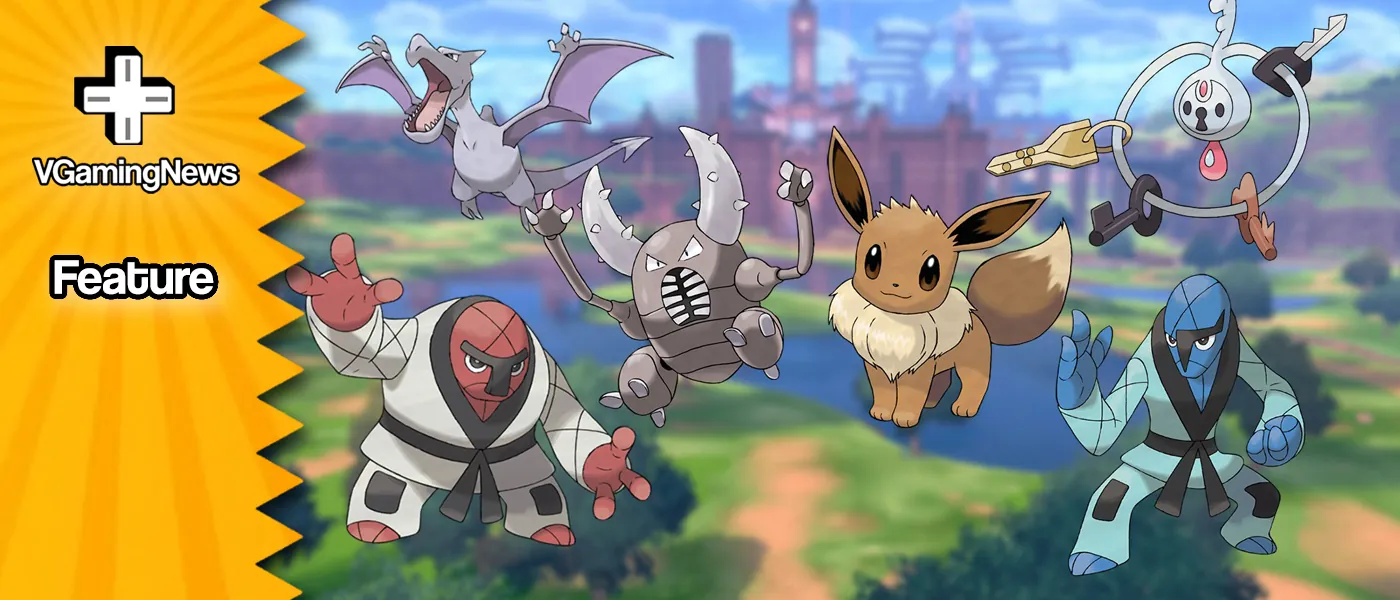

With Pokemon Day fast approaching, anticipation for the next generation of Pocket Monsters is building. It’s likely fans will get the first look at Pokemon Legends: Z-A, the mainline spinoff and sequel to Legends Arceus. We might even be lucky enough to get the first look at the 10th Generation of games.
While Game Freak will undoubtedly introduce new monsters for players to fall in love with, we took a look at a few monsters we feel could benefit from an evolution step and how we think it could work. We’ve tried to keep within the parameters of Game Freak’s current evolutions, so we won’t be adding a 4th evolution, mentioning Legendary / Mythical / Ultra Beasts or Paradox Pokemon, or evolving any creature past their Mega Evolution phase.
Let’s dive in!
Disclaimer: If the Pokemon Company, Game Freak or Nintendo are reading this and think these are good ideas, all we ask is a name in the Special Thanks section of the credits at the end of your next game.
Pinsir
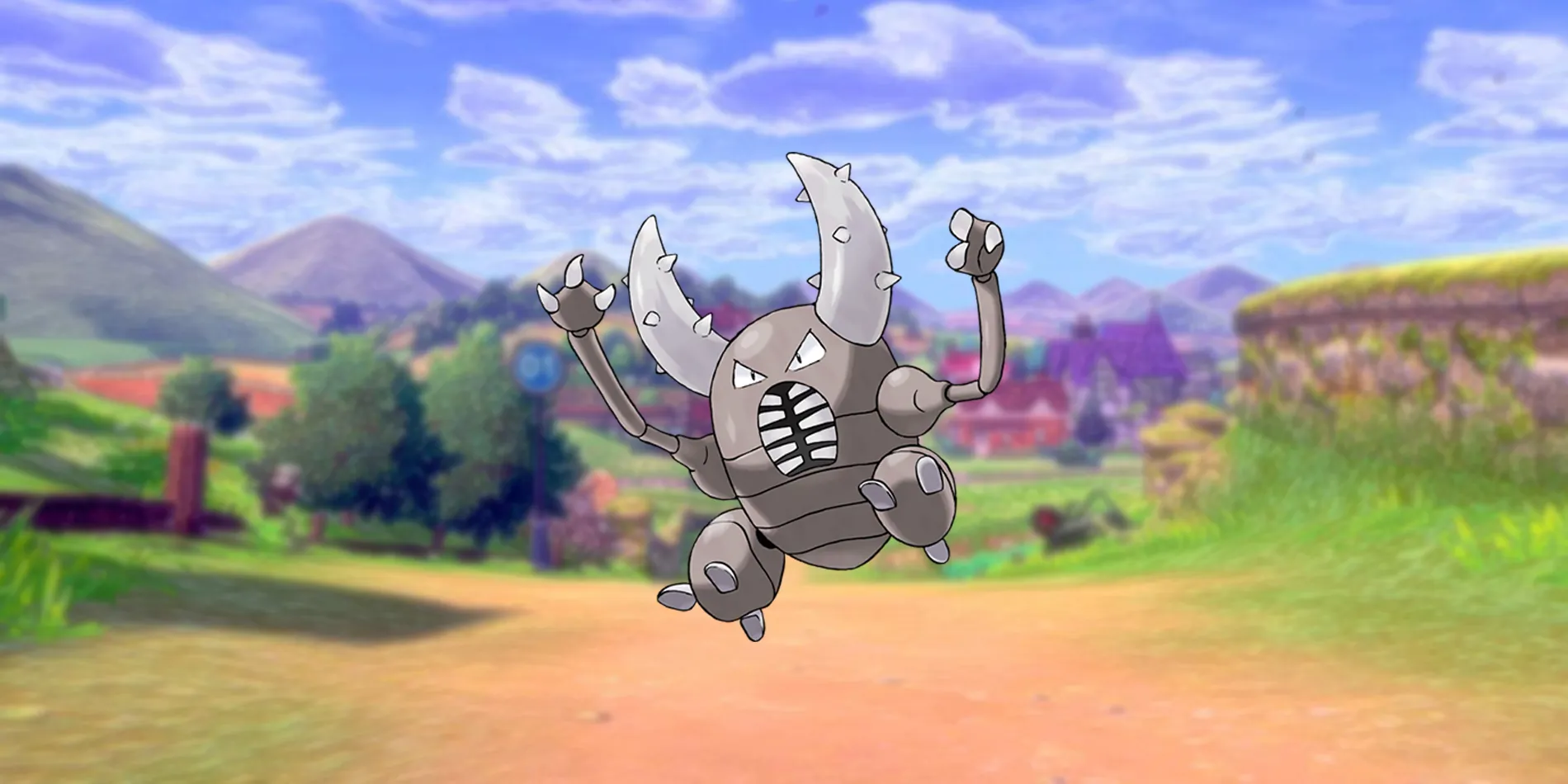
Pinsir was initially a Gen 1 Bug-type exclusive to Pokemon Blue, and the counterpart to Red’s Scyther. In the subsequent generations, it’s fair to say that Scyther with its 2 evolutions and Mega form, has had a bit of attention over the years. Sure, Pinsir can also Mega Evolve, and has the better shiny version, but we think it’s about time we learn more about the bug’s lineage. Due to the constraints of Mega Evolutions only happening on the top form, this would mean whatever monster created would have to evolve into Pinsir. Based on the real-world stag beetle, we think Pinsir’s pre-evolved state would feature a creature with smaller antennae that scuttles about on all fours before it decides to stand up.
Plusle & Minun

The pair of electric mice are supposed to represent the plus and minus of opposing currents and since their inception into Sinnoh, they’ve not done anything but try to be cute alternatives to Pichu. It’s here we think Game Freak could do something unique by utilising a De-evolution of sorts. Leaving a pair at the daycare and producing an egg should lead to a Neutral monster as the two charges would offset each other. This Ground-type monster could then be exposed to a certain charge to evolve it into Plusle or Minun.
Kangaskhan

Kangaskhan was first introduced in Kanto and ever since, there have been fan theories as to the baby it carries in its pouch. Is it a Cubone before it inherits its mother’s skull? Is it a Charmander without a flame? These questions persist and we think that The Pokemon Company should put this to bed by letting us catch an adolescent Kangaskhan when it’s old enough to leave the pouch. Through Mega Evolution, we know the child can fight, but as the famous Star Wars quote goes, “I want to see the baby in my Pokemon lineup”.
Carnivine
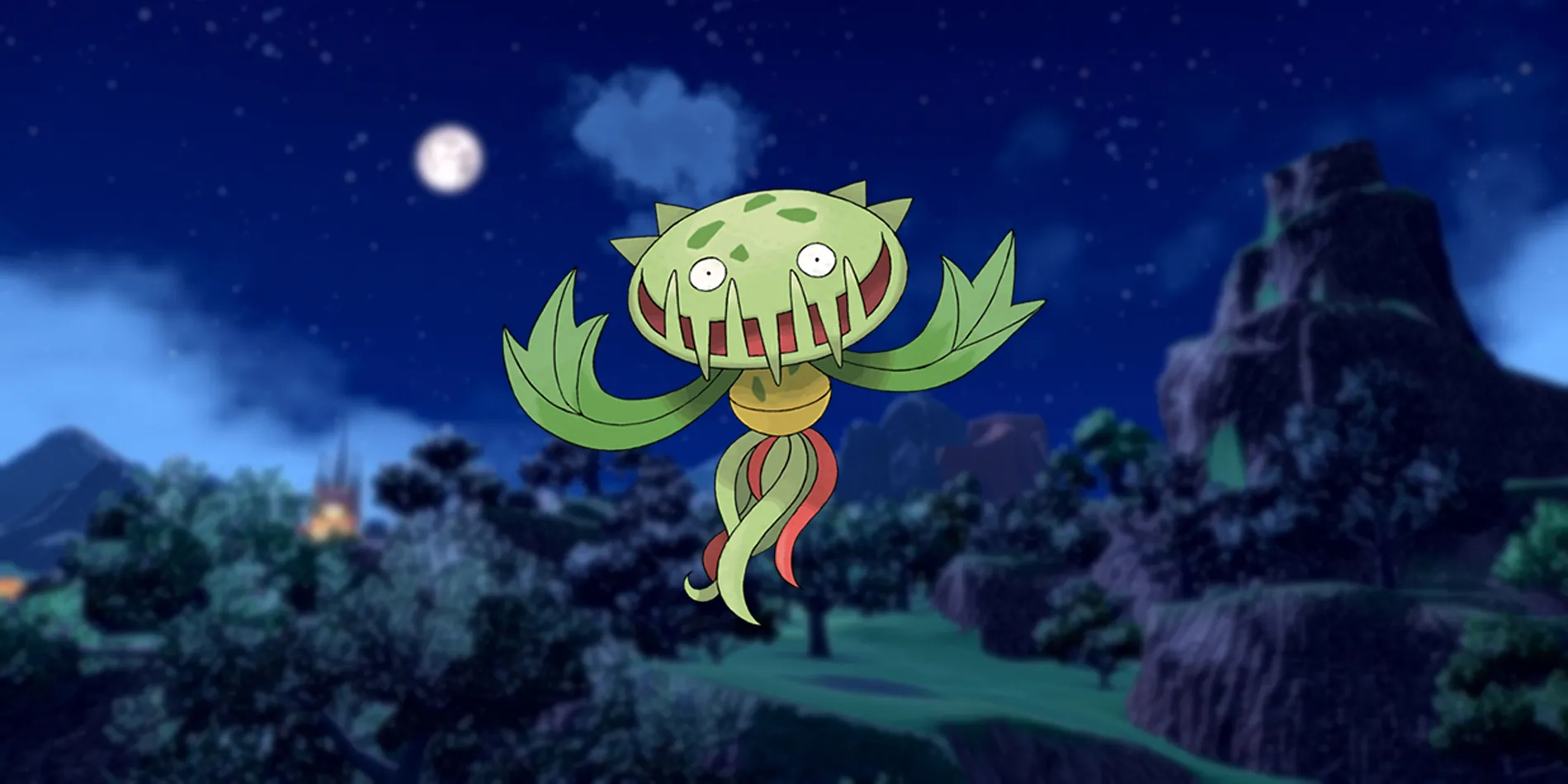
There aren’t that many Gen-4 monsters who don’t evolve. Somehow Carnivine is one of them. Despite the flying Venus flytrap looking like it could easily be related to Cacnea and Maractus, Carnivine is a one-and-done evolution and that doesn’t sit right with us. We’d like to see Carnivine in its younger stages of life, maybe a Pokemon version of Mario’s Piranha Plant. Something that is rooting into the ground that sits ideally by, waiting to snatch up unwitting Combees to spring free of the dirt.
Throh & Sawk
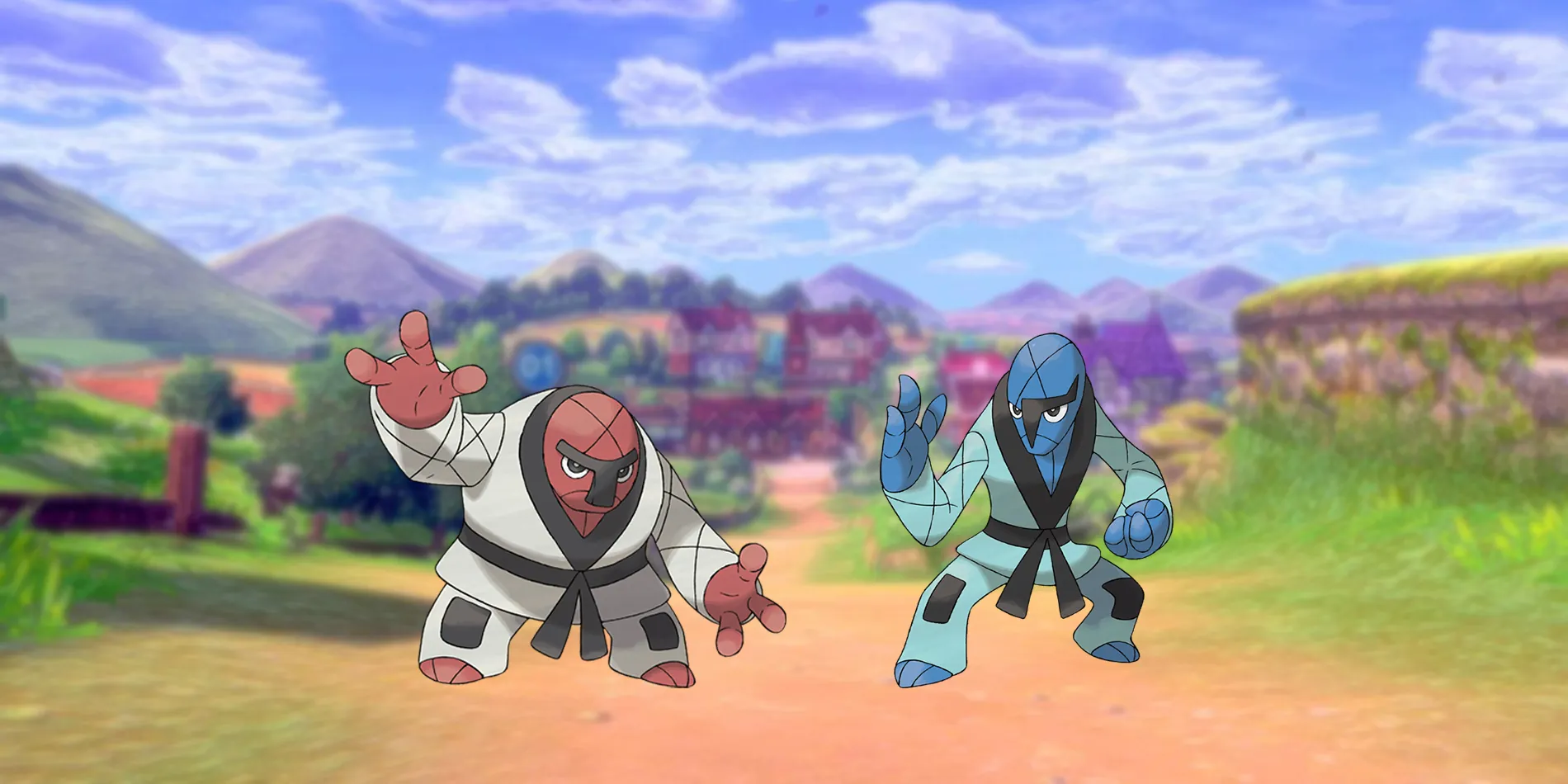
This is an obvious pick since the Gen-5 monsters bear a lot of resemblances to Kanto’s Hitmonchan and Hitmonlee. It would be easy to suggest that the two fighters could have a baby stage much like Tyrogue but that’s not where we think their evolutions lie. We think if Throh and Sawk fought enough double battles together, they could encourage each other to evolve, much like how two gym buddies push for more gains. The two would simultaneously evolve into a pair of formidable kung-fu masters who excel at all fighting styles.
Smeargle
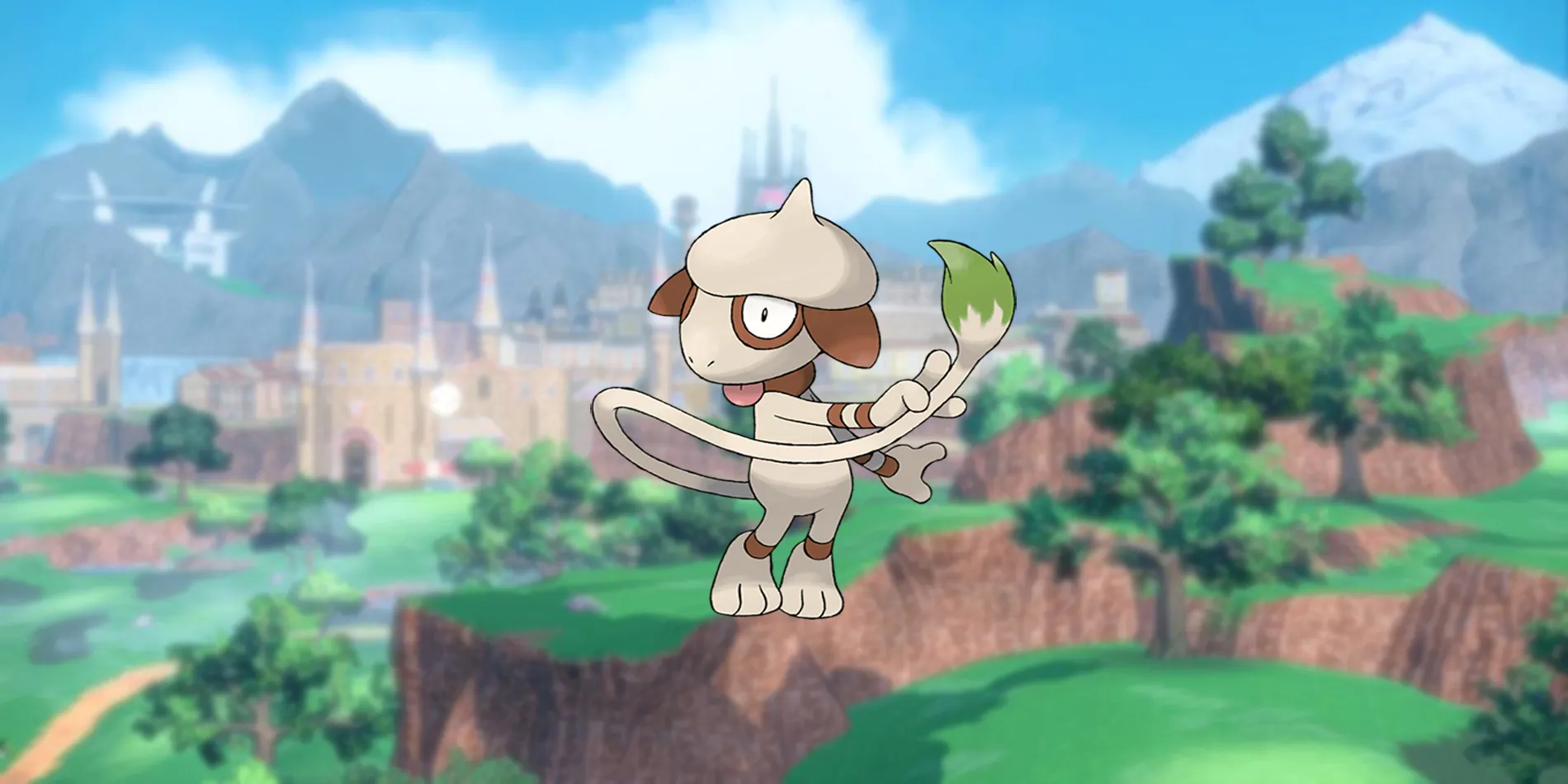
The Johto mischief maker hasn’t seen much love outside of being the one to pop up unexpectedly in Pokemon Go. Smeargle has spent the best part of two decades trying to make a successful career as an artist. So we think that any future evolution would have Smeargle grow a moustache, find a darker beret and have a more cubist approach to its art. Perhaps it would become the Picasso of the Pokemon world while young upstarts like Grafaiai provide the world with more modern art.
Aerodactyl
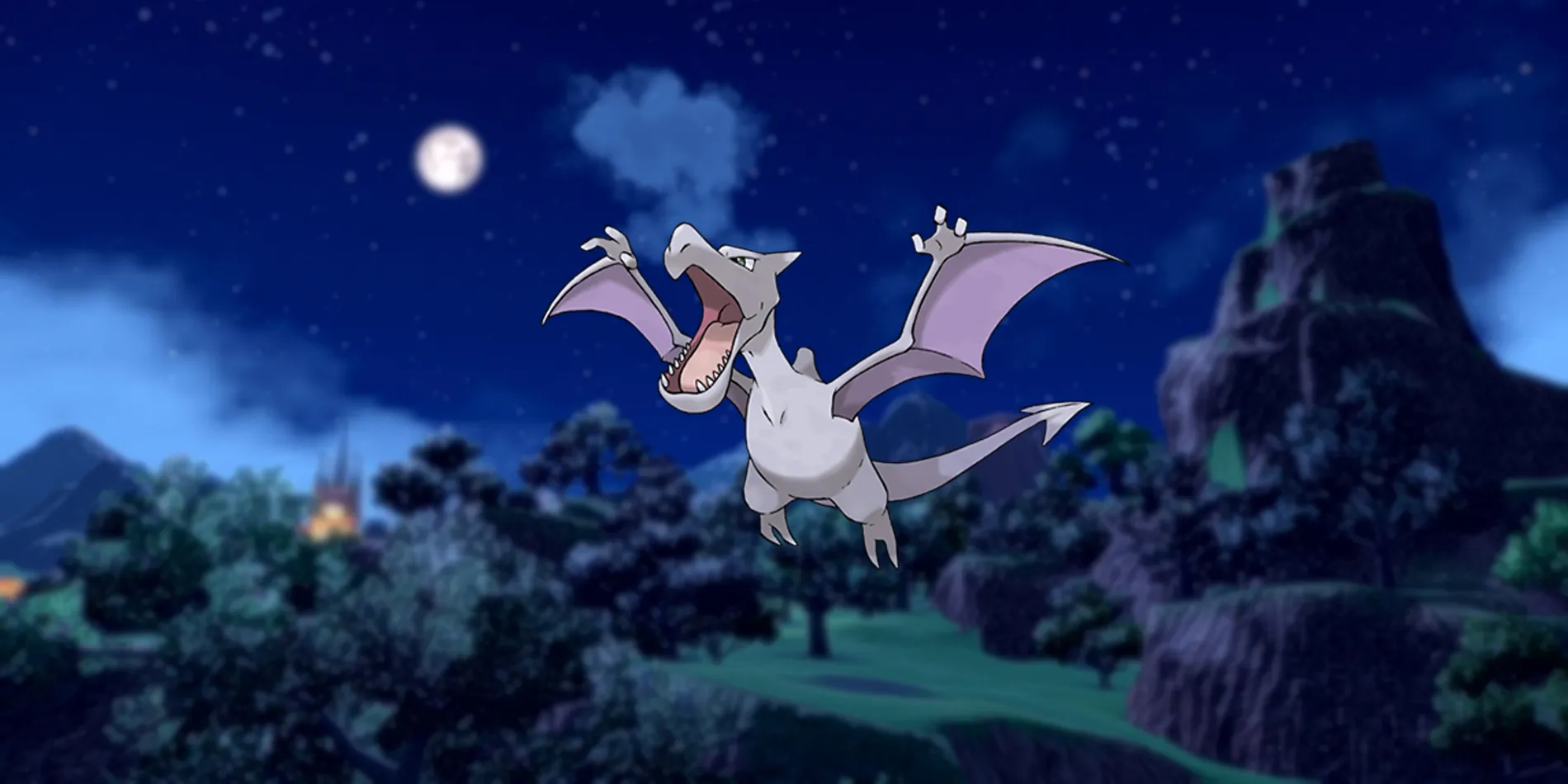
Most fossil Pokémon have a pre-evolution state. Look at Aerodactyl’s Red and Blue teammates, Kabutops and Omastar as key examples of this. As Aerodactyl has been given the ability to Mega Evolve, again we’d have to look the other way to find its evolution. This has led us to imagine a cute baby Pterodactyl made of smooth rocks with stubby wings. If we were to go one step further and imagine what it would look like out of the egg, we can firmly picture something akin to Vullaby crossed with Baby from the 1990s TV puppet program Dinosaurs, just without the frying pan.
Klefki
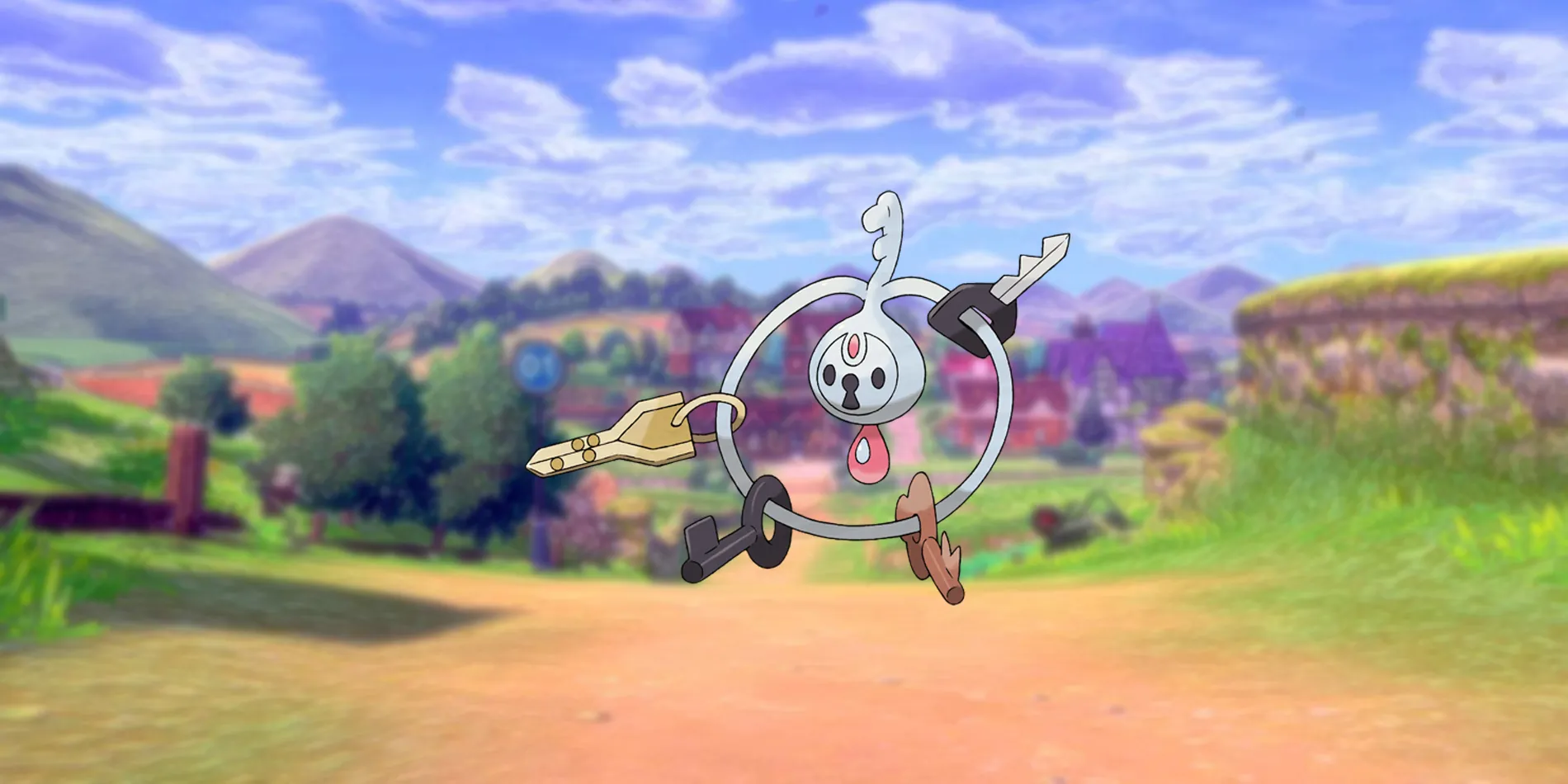
Klefki is an out-of-pocket choice for sure. The 6th Gen monster is a levitating set of keys, that is somehow a Fairy-type Pokemon. Since it doesn’t make sense to anyone, why not give it an evolution that adds a padlock or turns it into a possessed keyhole? Or perhaps Klefki could evolve into one of those keyfobs that emit an annoying beep when you’re looking for it? With Pokemon Legends Z-A coming up, it is the perfect opportunity to give Klefki a new lease of life as players return to the Kalos region.
Cramorant
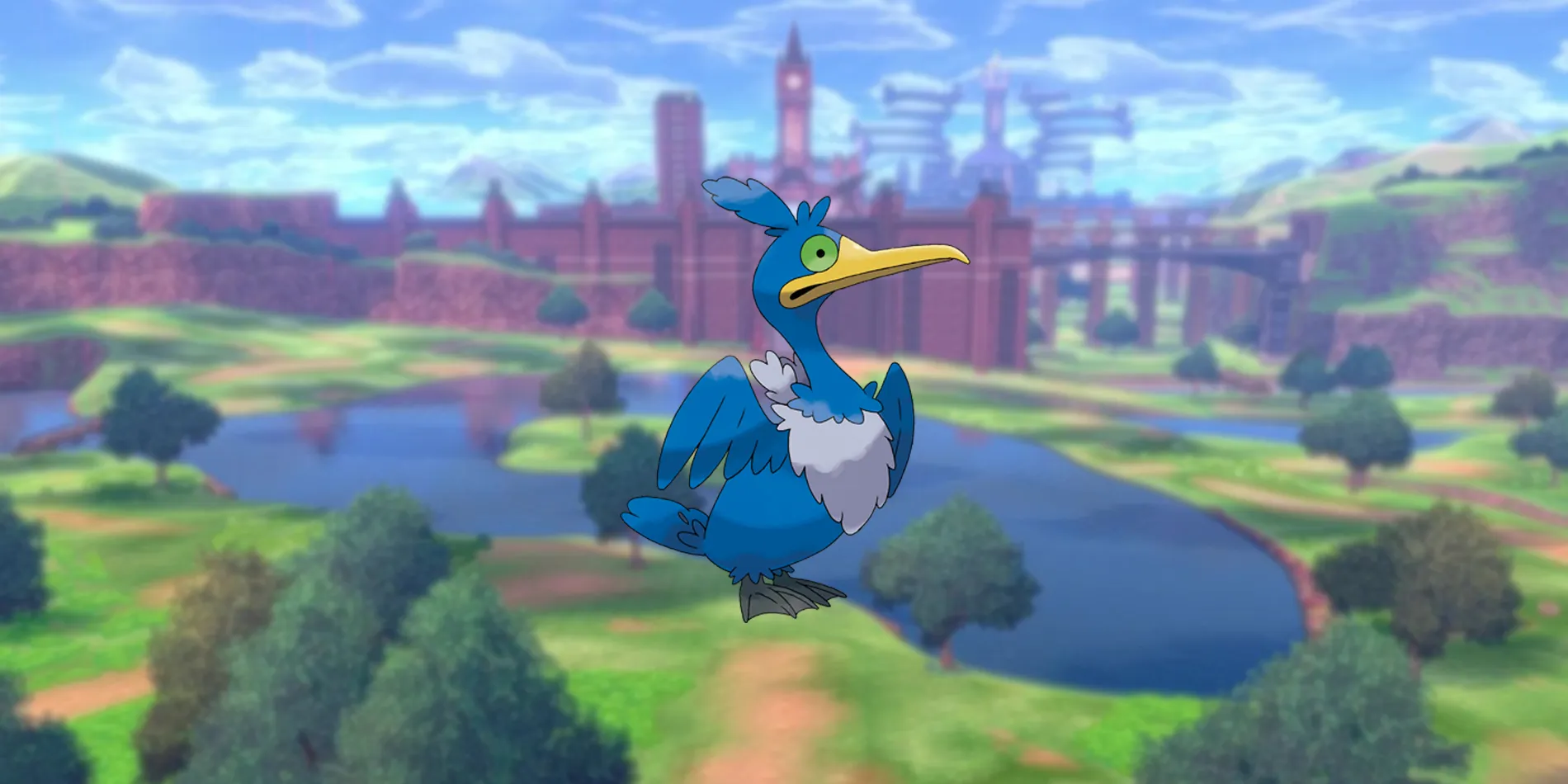
In terms of Pokemon timelines, Cramorant is relatively new to the series. It made its debut in Pokemon Sword and Pokemon Shield but has quickly become a fan favourite due to its interesting attacks and vacant, yet sinister looks. We thought it would be fun to imagine an evolution set-up where it would evolve based on what type of stone its unwilling participant is holding. If Pikachu goes into Cramorant’s gullet holding a Thunder Stone, then it would spit out the Pokemon and evolve into a Flying/Electric-type that could cause paralysis when it chomps down on its next victim. Cramorant’s future evolutions as an opportunity for Game Freak to hilariously replace the Eeveelution lineage.
Squawkabilly
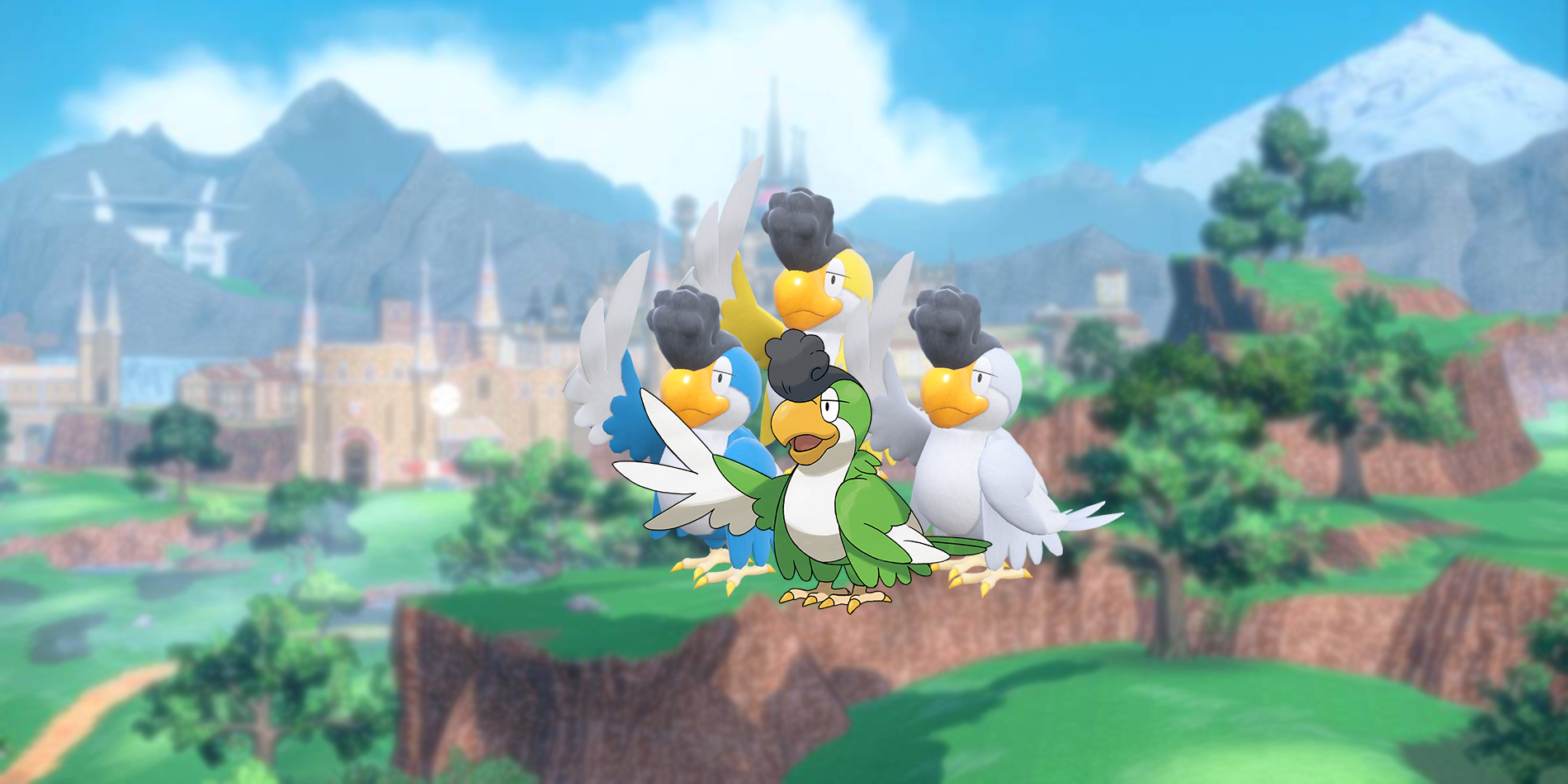
Squawkabilly is the newest monster on our list as it made its debut in Pokemon Scarlett and Pokemon Violet. This musical bird with its quaffed hair would have been better suited as an evolution for Chatot, but Game Freak curiously left it as a one-and-done Pokemon. When all of the different colours of Squawkabilly are gathered together, it reminds us of The Beatles, so our idea for Squawkabilly’s evolution will keep to the music route. Much like John, Paul, George and Ringo, moving from 1960s rock and roll into the 1970s psychedelic era, so to will our bird. The creature would gain Poison-typing, and its huge peacock hairstyle would give way to long, slick-backed hair, circular glasses and mutton chops. The four colours would remain intact, giving the birds a Sgt. Pepper’s Lonely Hearts Club Band feel to the look.
Honourable mentions

Eevee
We know there are many different types of Eveeoultions at this point, but we figured that Game Freak should finally give Eevee an evolution of each kind of Pokemon. Rumours from around the internet suggest a flying-type Eevee was planned but conflicts with fanart are making this a tough task for the developers. I’m sure that the team who made viable Pokemon out of a literal rubbish bag, hieroglyphics and an apple, could think of a unique way of presenting a new version of Eevee, or you know, just pay the fans for their art?
Mimikyu
Mimikyu is one of the few Pokemon that we don’t know exactly what it looks like. All we know is that it cosplays as Pikachu so people adore it. Pikachu isn’t the only adorable Pokemon so it would be cool if Game Freak would introduce different versions of the Mimic Pokemon, with it showing off different disguises like Bulbasaur or Fuecoco. While this wouldn’t be considered evolution as such, trainers could potentially evolve Mimikyu into the evolution of whatever form it takes. Just imagine if you had a Mimikyu who cosplays as a Squirtle and when it gets to a certain level, its cosplay changes to a Wartortle before becoming a Blastoise.
Product Review: OIVO PS5 Cooling Station


Is there anything quite as sweet as getting your gaming setup exactly how you want it? Consoles positioned just so, lighting set exactly right, and all your nerdy accessories placed in the perfect eye-catching spots. There’s plenty of products out there that offer you ways to spruce up your man cave, and I recently took out an OIVO PS5 cooling station for a spin to see how it held up.
Designed to work with all versions of the PS5, the OIVO cooling station itself is a pretty sleek looking piece of kit; it stands about an inch and a half high and feels relatively lightweight. The black base comes with two attachable white fins that, once clipped in, offer the same clean aesthetic as the PS5 itself. There are grooves built into the base to make it easy to fit your console into the right place, and a chunky screw to help you fix the machine and the cooling station together – handy if you’re ever rooting around behind your console and are worried about knocking it over. Once you’ve got the wings on and have the big boy strapped in, getting the cooling station going requires nothing more than plugging in the USB at the back of your machine and voila!
The build quality obviously isn’t going to rival the console itself, but it certainly has a good feel to it. The unit doesn’t feel flimsy or fragile, the underskin buttons are well lit and responsive, and the cooling fans are whisper quiet, even on the highest setting. The RGB lighting is set into tramline trim running down each side of the unit, offering an understated look in comparison to some of the more garish offerings. You can flick through nine different colours, or choose to have the unit cycle through all the available colours if you can’t decide which one you want. You can also toggle how bright the lighting is, allowing you to turn the look up or down to fit your aesthetic.
Now, do PS5’s actually need additional cooling? The general consensus seems to say ‘no’. But if you’re concerned about your big boy getting a little too hot under the collar, the OIVO station is equipped with multi speed fans to push cool air up into the console from the underside. You can flick between high, medium, and low speeds at the touch of a button, or you can choose to turn the functionality off altogether. There’s also an ‘auto’ mode that seemingly adjusts the speed up and down on its own to meet the needs of your machine, but since the cooling station doesn’t include any probes or thermometers to place inside your console, I’ll admit I’m sceptical about the fidelity of this functionality.
OIVO PS5 Cooling Station
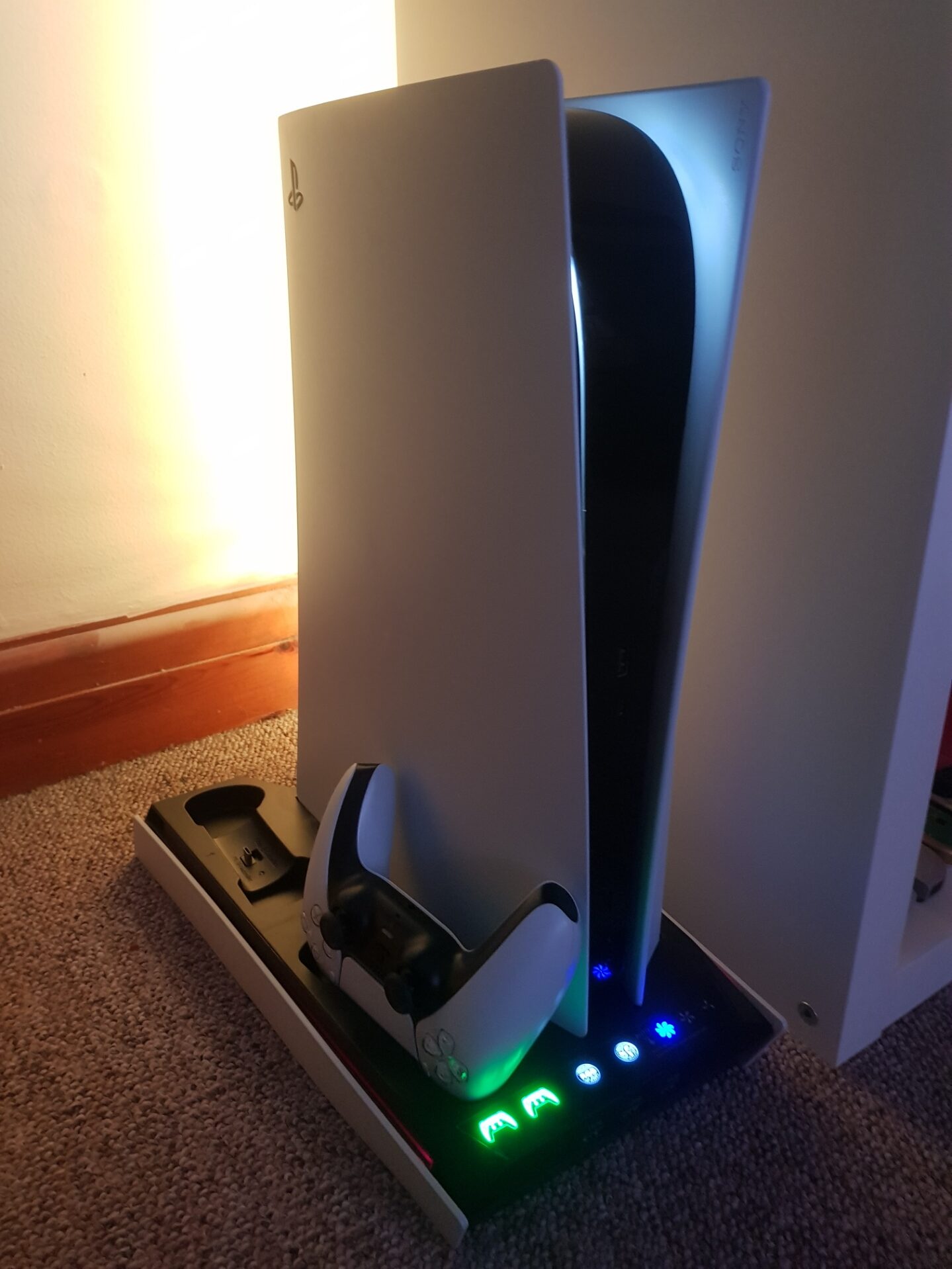
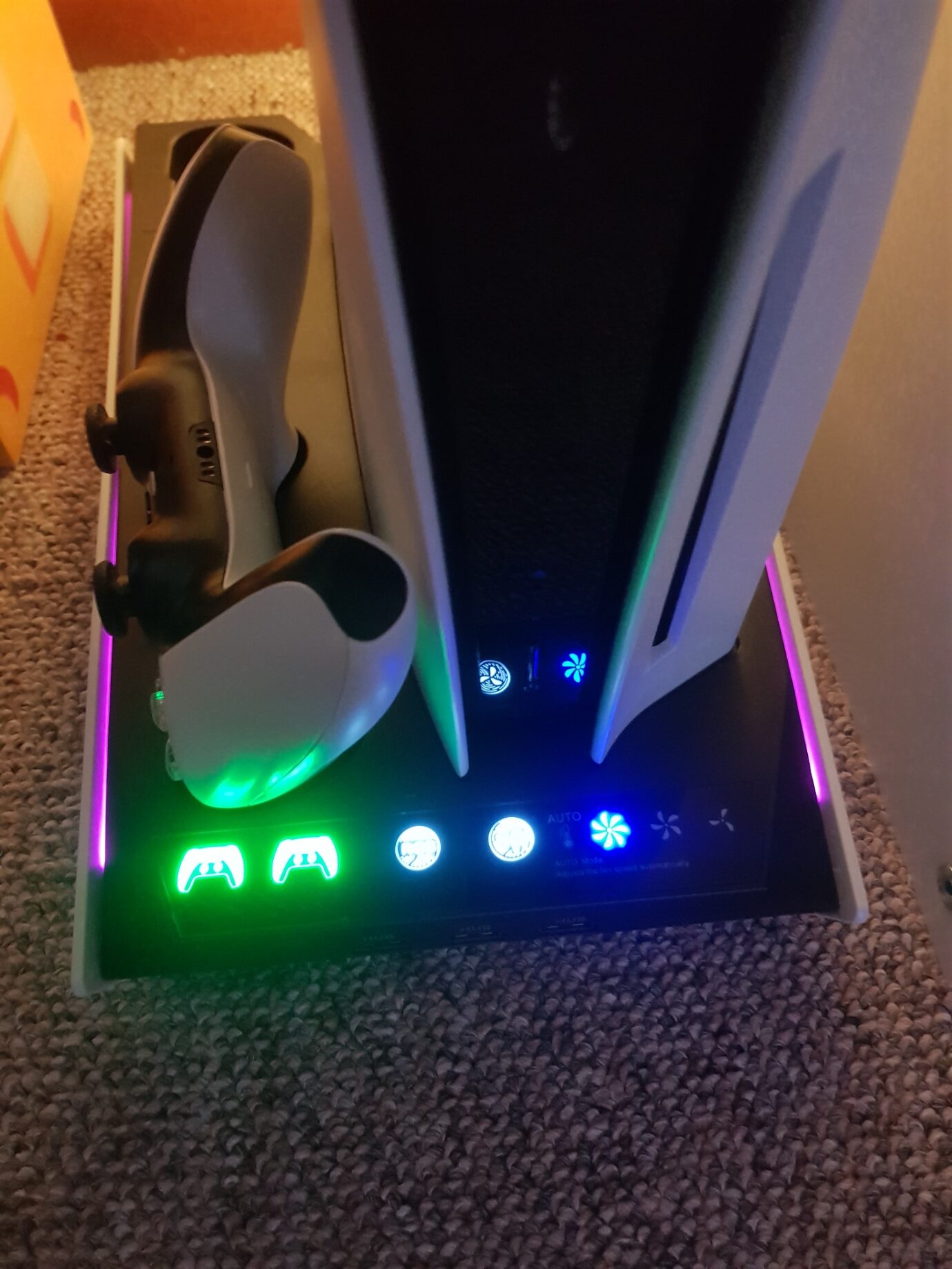

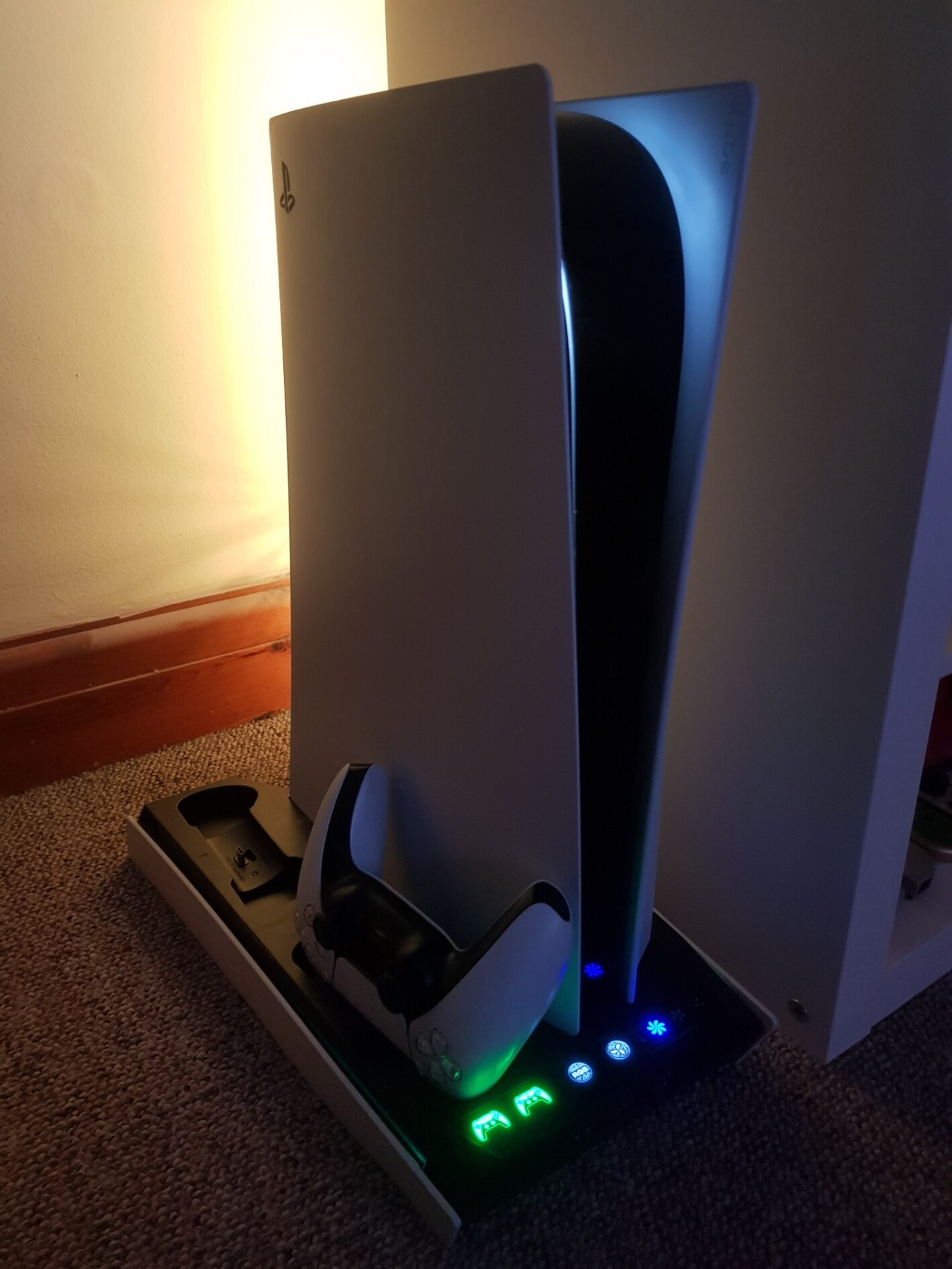
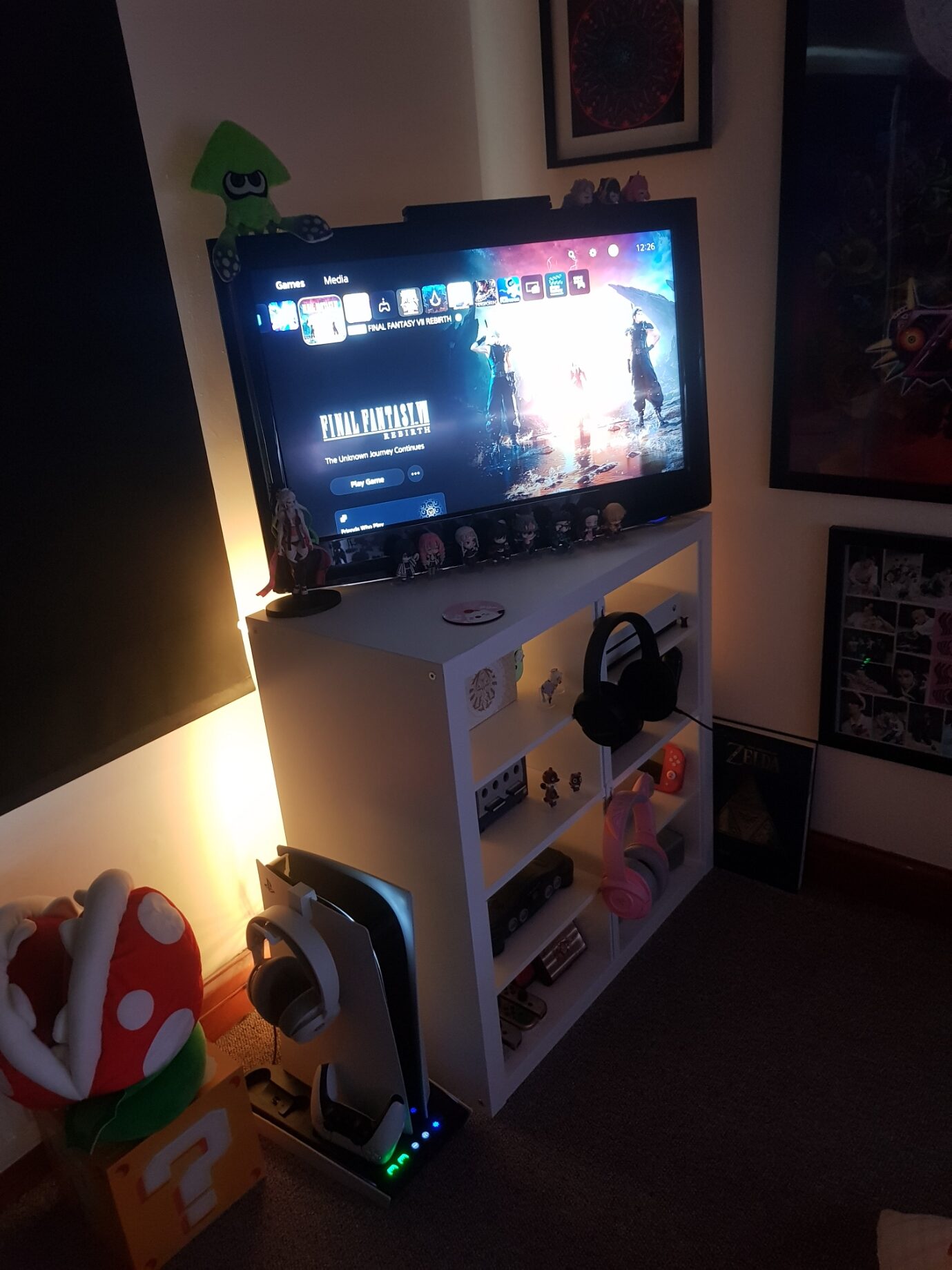
A more definitively useful feature of the station is the pair of controller charging ports. Designed as a pair of shaped recesses housing USB-C connectors, you can easily keep two DualSense controllers juiced up by turning them on their head and pushing them firmly into place. Once in, the connection is snug, and while I’m a little concerned about scratching the top of my controllers trying to fit them exactly onto the charger, I feel like the recesses do offer some assistance ‘guiding you in’ in that regard. (As well as helping make sure you lift the controller out appropriately, lessening the chance of damaging the connector and potentially snapping it off inside your DualSense.)
Impressively, the USB-C charging connectors are fixed on a small sliding mount that you can click back and forth, offering versatile positioning to fit either the standard DualSense controller, or the more pricey DualSense Edge. This feels like the sort of astute design choice that would often be overlooked, leaving customers disgruntled when they open their new toy and realise that their shiny controller won’t even fit in their new charger.
The final feature is a handy detachable hook that slips snugly over the outer panel of your PS5 and gives you a sturdy place to hang your headset. The hook itself is thicc, and maybe looks a touch out of place in comparison to the sleekness of the rest of the unit, but you honestly won’t notice once your headset is hung up on it and it should hold up even the chunkiest of headsets!
All in all, the OIVO cooling station is a pretty well made accessory, designed to combat a problem that only may or may not exist. But if you’re convinced that your console needs a little extra love and attention, you could do worse than this one: the RGB trim is slick, the controller chargers are sturdy, and overall, it’s a good looking way to keep all of your kit together.
In the interest of full disclosure, VGamingNews was provided with this product in order to conduct this review.
Thanks for taking the time to read our review. If you’d like to support us further, please consider buying us a coffee!
Product Review: Glorious D2 Wireless Mouse
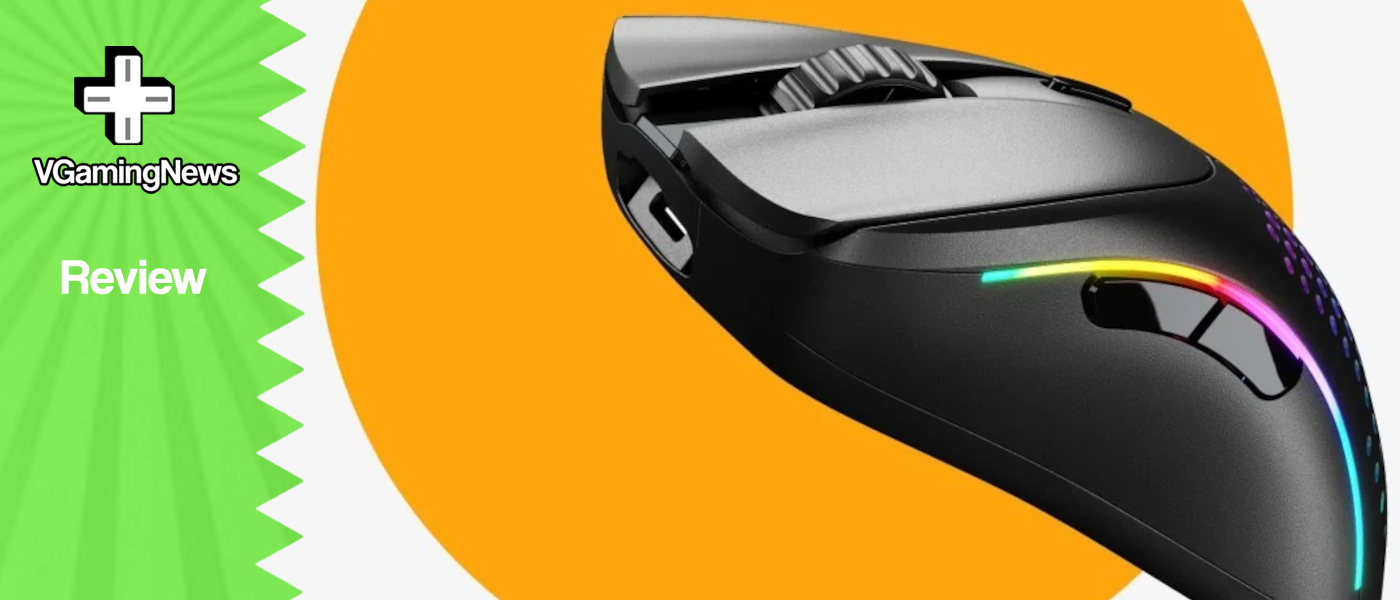

I hate reviews that start with bombastic statements, but I’ve been using the Glorious D2 Wireless Mouse for about a month and during my time it has become my favourite bit of kit on my desk… a desk that has guitar picks and a slightly tepid cup of tea on it. Now I’ve got that out of the way, let me get into the review properly with a bit of groundwork.
After growing their business by creating keyboards and keycaps for enthusiasts, Glorious has been branching out into other parts of the PC gaming sphere. Their latest attempt is the D2 Wireless Mouse, a lightweight wireless mouse ergonomically designed to fit around medium-large hands. Two sleek bars of RGB lights slide down each side of the mouse, and a pocked body gives you a nice look at all the electronics that are hidden inside.
Upon opening the box, the D2 Wireless Mouse looks like any other unit; except for the holes at the back of the unit where you can see the inner workings, nothing really stands out. Once I turned the mouse on though, things quickly dropped into place. The RGB colours sprang to life, pulsating the area around the mouse and illuminating the inside, giving a cool look to what would normally be a forgettable bit of kit.
After I got over the joy of having another product that could spew all the colours of the rainbow in the darkness, I thought it best to try the product. I was shocked at how well my hand molded to the subtle curvature of the left-hand side of the mouse. After years of having a generic mouse, having something designed with comfort at the forefront of a product was mind blowing.
The mouse feels great in hand and zipping around Call of Duty Warzone felt great. The Glorious D2 Wireless Mouse can move up to 26,000 DPI, a blisteringly fast speed that’s great when gaming. However this does lead to my first bone of contention, to get the full speed out of the mouse, you have to install Glorious’ proprietary software to unlock it. I mean, the interface is nice and you do get additional RGB settings to play with, but it’s not convenient if you have multiple devices with different requirements.
Glorious D2 Wireless Mouse
Where I cannot fault the D2 Wireless Mouse is on its connectivity and battery life. The mouse comes with two wireless options, Bluetooth and 2.4G (provided by a handy dongle). Connecting the mouse is as easy as setting the slider under the mouse to the appropriate channel and I found no issues connecting it to a PC, Mac or Chromebook. During my testing, I had the 2.4G dongle in my PC with Bluetooth enabled on my Chromebook, and the mouse connected to the relevant device within a second of switching the toggle. I found no loss of connection between the mouse and the connected device, nor did I experience any stuttering or unwanted cursor jumping, both of which were present on my cheap unbranded mouse. Even when the mouse went into sleep mode after a few minutes of inactivity, the connection was established before I had time to realise anything had changed.
On top of the wireless options, a USB-C cable is included to provide a wired connection, as well as charge the battery. While charging, the unit will default to wired connectivity only, so as unlikely as this is, if you want to refill the mouse on one device and use another, this can’t be done. The battery itself is said to last 200 hours with a Bluetooth connection and 110 on 2.4G. While I didn’t accurately measure this, I managed to squeeze 4 full days of wireless use out of it, which included full power on the RGB lights, swapping between different desktops and leaving it on standby outside of the 9-5 life. If the RGB was turned down and I only used the Bluetooth connection, then I’d probably eke out a few more days of use.
Sadly, there is one major sticking point with the D2 Wireless Mouse, and that’s its orientation. There is only a right-handed option for the unit, meaning that lefties are missing out on an otherwise great bit of kit. From a business side, I can see the reasons why there wouldn’t be concessions on the design or an alternative model but I think it’d be handy for a flipped version so that left-handers can experience true comfort. I can even imagine gamers picking up two mice, and using the additional software to create macro buttons and using them in a VR-controller style.
While testing the Glorious D2 Wireless Mouse, I’ve been blown away by how quickly it connects to my devices and how responsive it is. Even though it isn’t designed for lefties and you do need additional software to get the most out of the kit, its ergonomic design feels right under the hand. The battery life is measured in days and I experienced no dropped connections. For gaming enthusiasts, or anyone wanting the best of the best, the Glorious D2 Wireless Mouse is certainly one to consider.
In the interest of full disclosure, VGamingNews was provided with a copy of the product to conduct this review.
Thanks for taking the time to read our review. If you’d like to support us further, please consider buying us a coffee!
VGamingIndies 2024: Volume #1
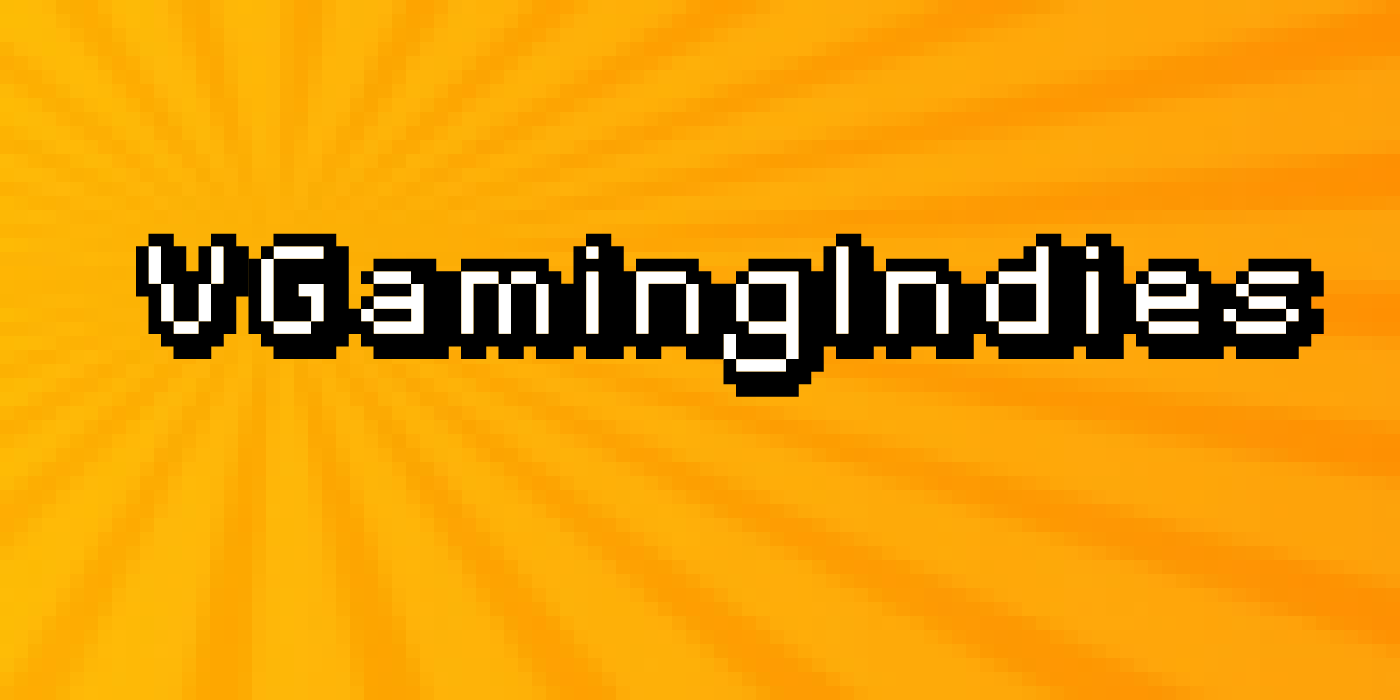

We don’t need to tell you that there are a lot of video games being released every week and a lot of games simply go under the radar. Indie games in particular are often developed by small teams, usually without a billion dollar corporation behind them and they don’t have a chance to shine.
VGamingIndies gives us a chance to talk about some of those smaller titles that we’ve played recently. We’re not scoring these games like we would if it was a ‘full review’. An arbitrary number isn’t always the best approach, especially with Indie games. Instead, we’re just laying out what we liked, what we thought didn’t work so well and leaving the choice up to you.
We’re kicking off 2024 with Maki’s Adventure on Steam and 36 Fragments of Midnight on PlayStation Vita & PS4. Click the buttons below to be taken to the individual game, or keep reading to find out what Drew and Joe thought of their games.
Maki’s Adventure
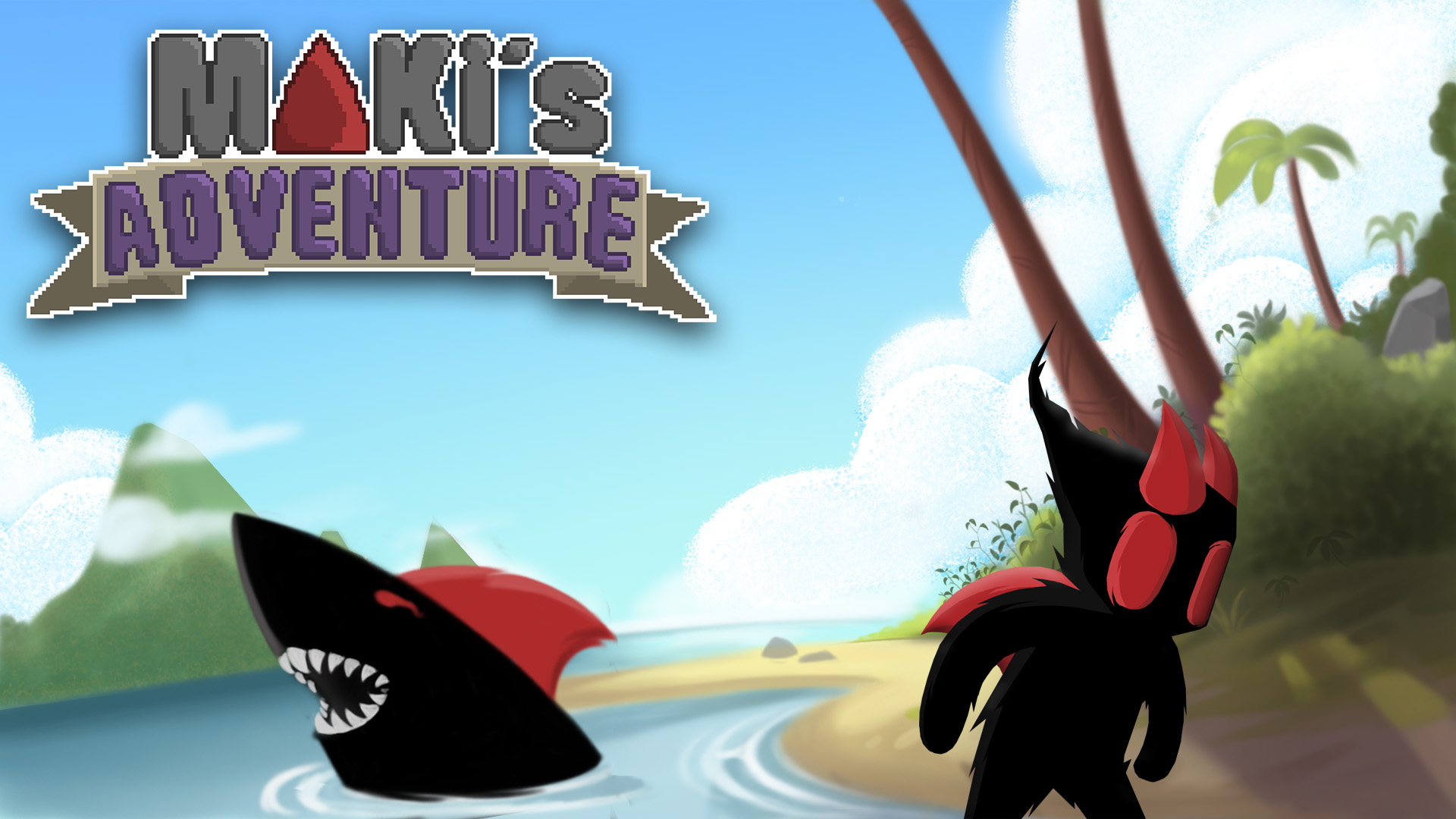
| Maki’s Adventure | ||
| Platform | PC | |
| Developer | Zoroarts | |
| Publisher | Zoroarts | |
| Positives | + Lovingly crafted + Wears its heart on its sleeve + Variety of mini-games | |
| Negatives | – Sound design is lacking – Very limited gameplay – Lacks polish | |
| Price | £8.50 | |
| Played By | Drew | |
The inaugural project by German solo developer, Matteo Covic, is action-adventure-platformer, Maki’s Adventure. Telling the story of young Maki, one of the successors to the three Sacred Sharks, who guarded the world before their passing. In time, a great demon named Octavio escaped from the underworld and ravaged the land, and Maki, alongside his brother Temu, was captured whilst trying to overcome the fiend. As Maki, you must escape Octavio’s clutches and bring piece to the world once again.
Maki’s Adventure tries to do a lot with its two hour runtime, offering some 2D basic platforming, 3D world navigation and a host of mini-games to try out. If this game were a meal, it would be a tapas kind of affair – a cook offering a small collection of bits and pieces to see what you like and what you don’t, or in this case, a developer trying his hand at a few different things and seeing what he can achieve. I see this more as a platform for the developer to launch off from than a true gaming experience for players.
Mini-games are often used as a timeout from the main story and gameplay aspects, but actually make up the bulk of Maki’s Adventure, with the platforming elements really only being used to link the smaller mini-game elements together. There are a few fetch quests thrown in, and a smattering of basic bosses (that can be battled in a dedicated Boss Rush mode, should you wish), but I felt that the bulk of the gaming came from playing darts or pool, breaking raining rocks with a cannon or flying through rings with your pelican friend.
Working as a solo dev is a daunting undertaking, and I applaud anyone who is able to get a project from inception to completion all on their own, but there are often signs that the dev is stretched too thin, and that’s no different with Maki’s Adventure. The visuals are put together in some functional, if very basic, pixel art, and the character and enemy designs are all somewhat cookie-cutter. The sound design may be where things struggle the most though, where a handful of sound-effects are repeated ad-nauseum, with the dodge sound particularly grating on me after just a few minutes. There are some controller support issues too, where the game randomly only recognises mouse/keyboard inputs, which in any project determined ‘finished’ and on sale is rather unforgivable.
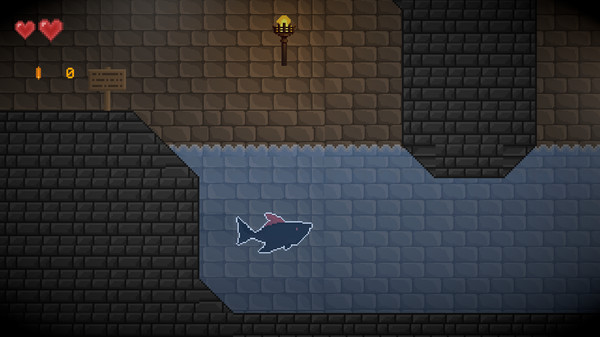
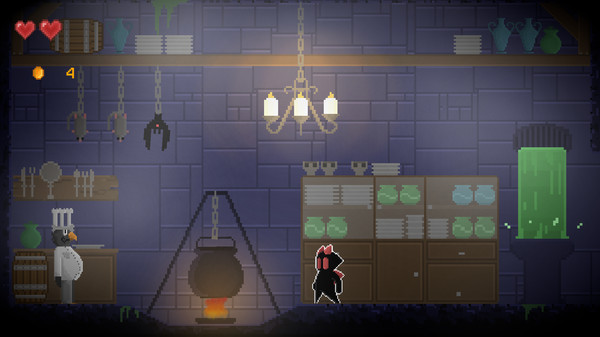

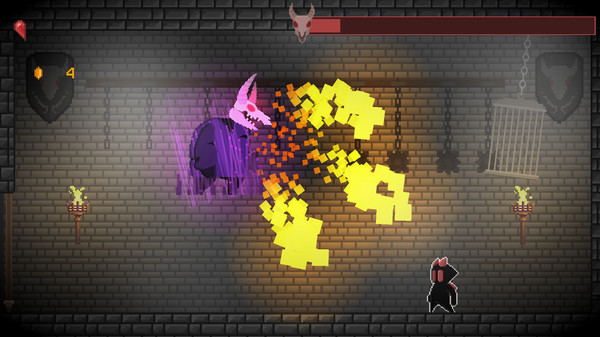
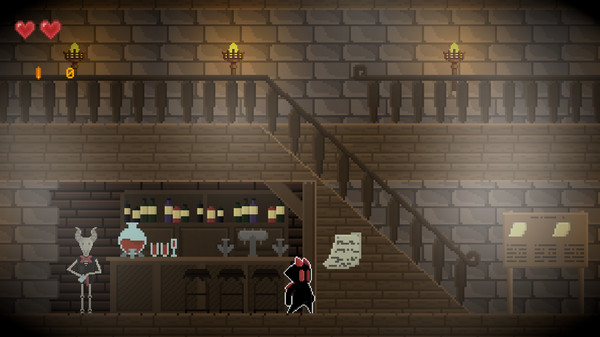
Makis Adventure is the inaugural project from a young solo-developer and honestly, it plays as such. The love for the project pours from every pixel, but from a pure gaming perspective, it’s a little all over the map. Essentially, this is a small collection of mini-games held together by a rudimentary story and basic cast of characters, created by a passionate dev looking to test a variety of skills for the first time. Makis Adventure is limited in what it offers to a player, but can act as a stepping stone for Zoroarts to create bigger, more polished projects in the future, and we wish Matteo Covic all the best as he continues his journey through game development!
36 Fragments of Midnight
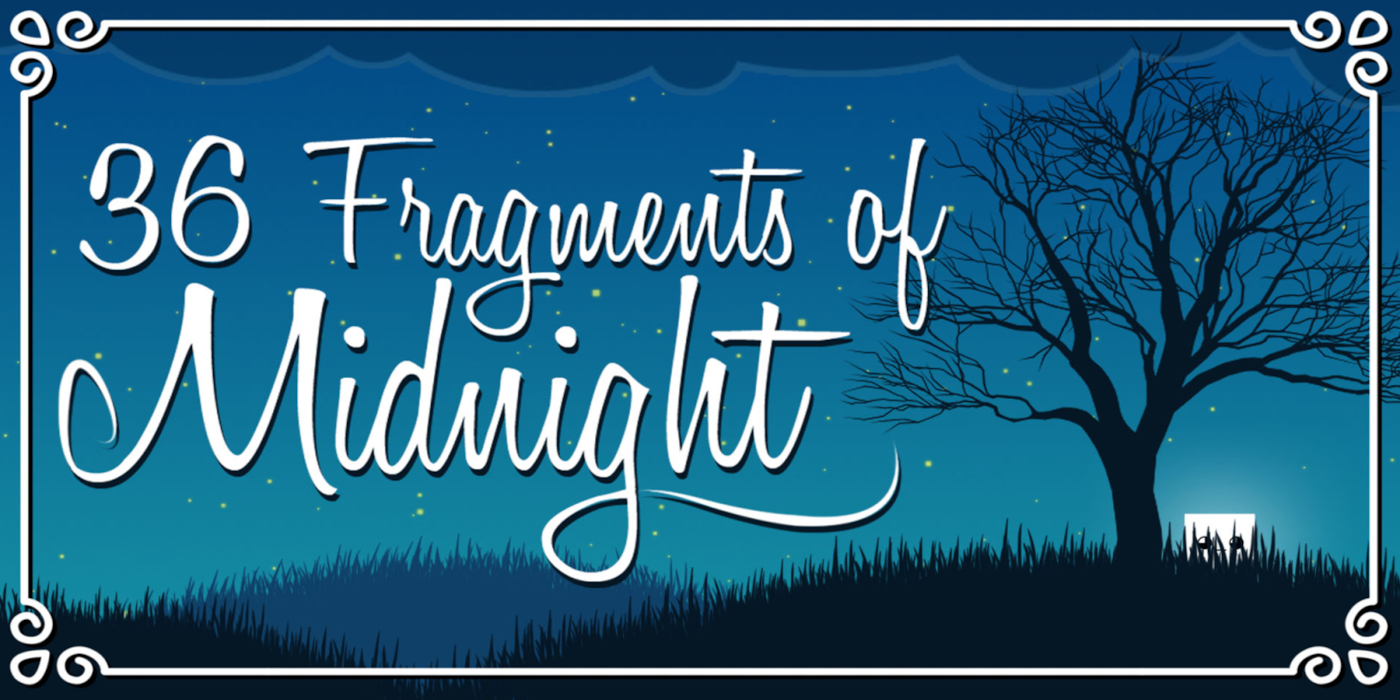
| 36 Fragments of Midnight | |
| Platform | PlayStation Vita |
| Developer | Petite Games |
| Publisher | Ratalakia Games |
| Positives | + Super cheap with bonus PS4 version + A bit of skill required + Charming, if basic, graphics |
| Negatives | – 6 minutes to complete the game – Annoying response times – It’s super short |
| Price | £0.39 |
| Played by | Joe |
Once the dust had settled over Christmas and I had claimed the various gift cards from aunts, uncles and whoever else doesn’t understand what a video game is, I went and splurged my winnings on Final Fantasy XVI. As this was during the PlayStation January sale, I had a few gil left over which I had no intention of spending. That is until I found my Vita and I was curious if Sony still offered up sales on their ill-fated handheld. Turns out they did! So I set the price filter to ‘Low-High’ and bought the top three games, totalling less than £1. At the princely sum of 39p, 36 Fragments of Midnight was the cheapest of the lot. It also came bundled with the PS4 version too. Nice.
36 Fragments of Midnight from Petite Games is a short puzzler where Midnight, a small, nondescript white block, platforms its way through various hazards, collecting fragments. Where these shards come from is anyone’s guess, but Midnight has been asked for help and armed only with a double jump and a plucky spirit, I felt it was my duty to oblige.
The game is set in a singular map that’s randomly generated with each playthrough, but the level design is based on a set structure of six floors, containing six fragments. Each floor has five hazards, made up of a combination of saws, lasers and spikes that can end the run in one hit. It was frustrating getting to grips with the jump mechanics as there was a split second delay from pressing the button on the Vita, to the white box reacting on screen. This caused an unnecessary amount of restarts as one of the trophies was to clear the game in under six minutes. On testing the PS4 version, I found that jumping worked as you’d expect, so I would definitely suggest the handheld version should you want a tougher challenge.
From a graphical standpoint 36 Fragments of Midnight is rather basic, but still has an element of charm about it. The level is rather rudimentary, with a dark blue tone that gets darker the lower you sink into the map, but for a game that costs less than the price of a Freddo, it was perfectly serviceable. The main draw for 36 Fragments is of course the trophy list, which can be cleared in less than 20 minutes. Normally I rally against trophy fodder, but because I did find the game’s inability to provide an accurate jump, it did give a level of difficulty a blessing.
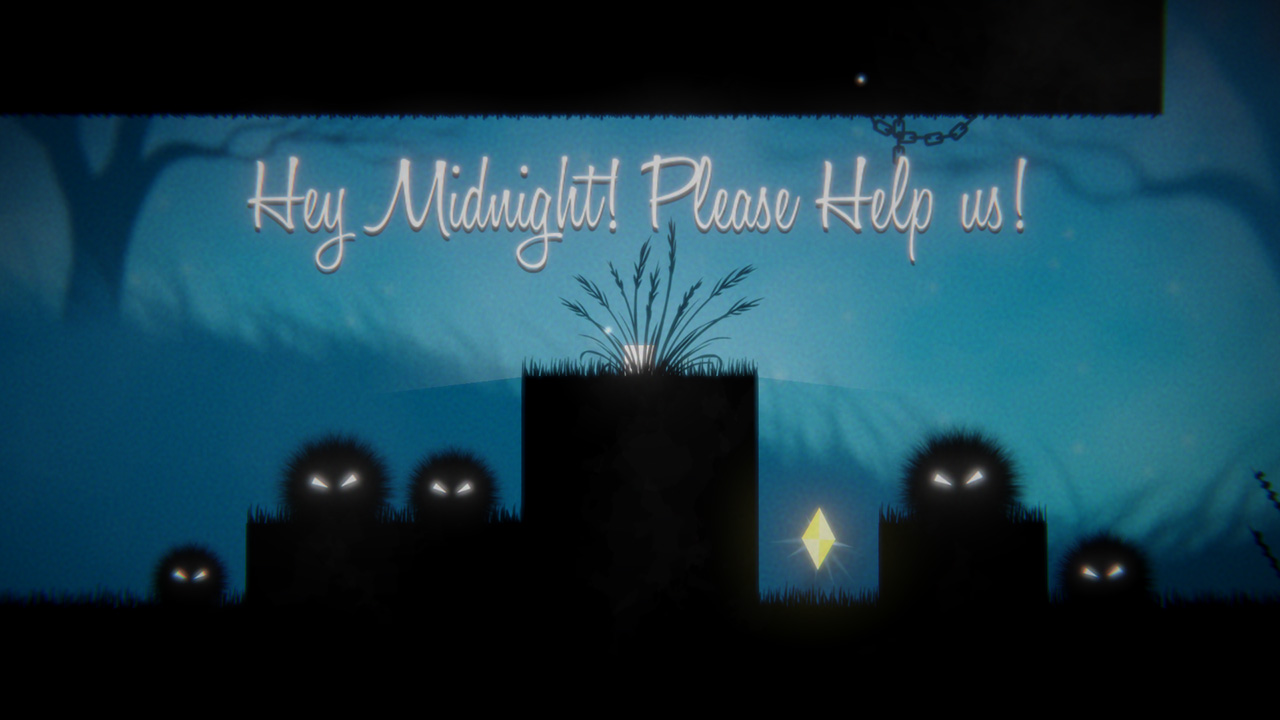
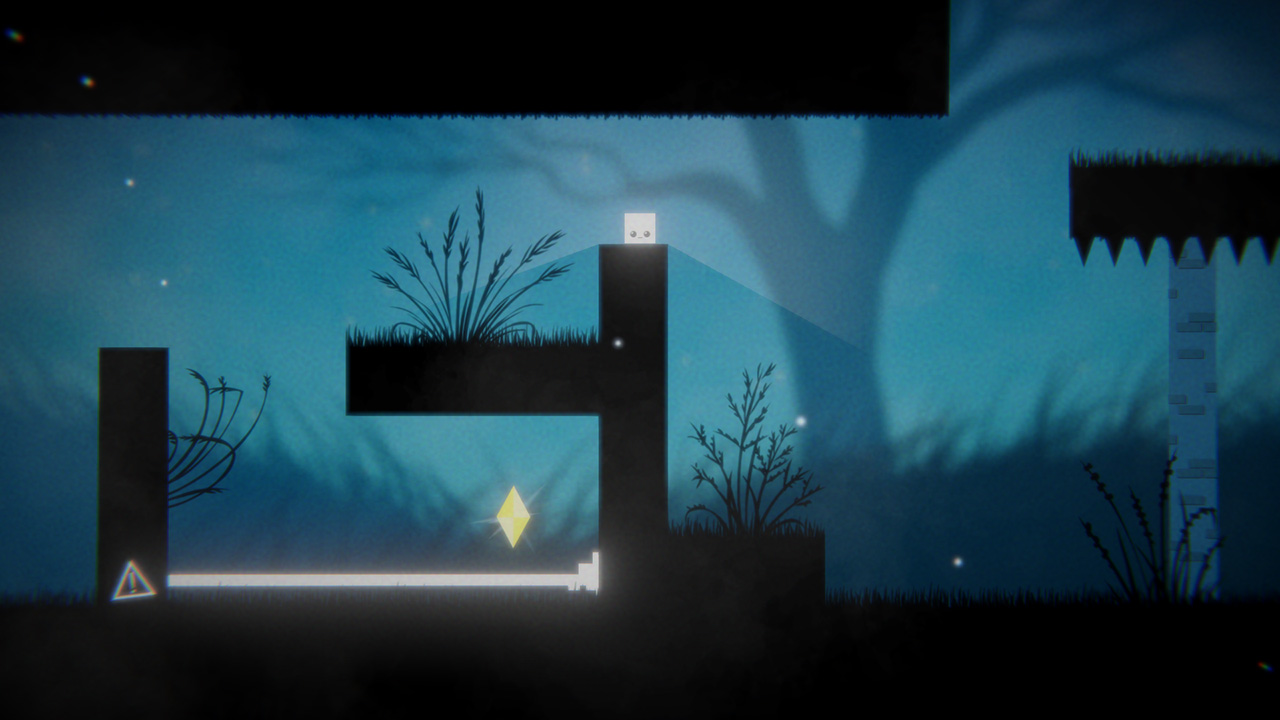
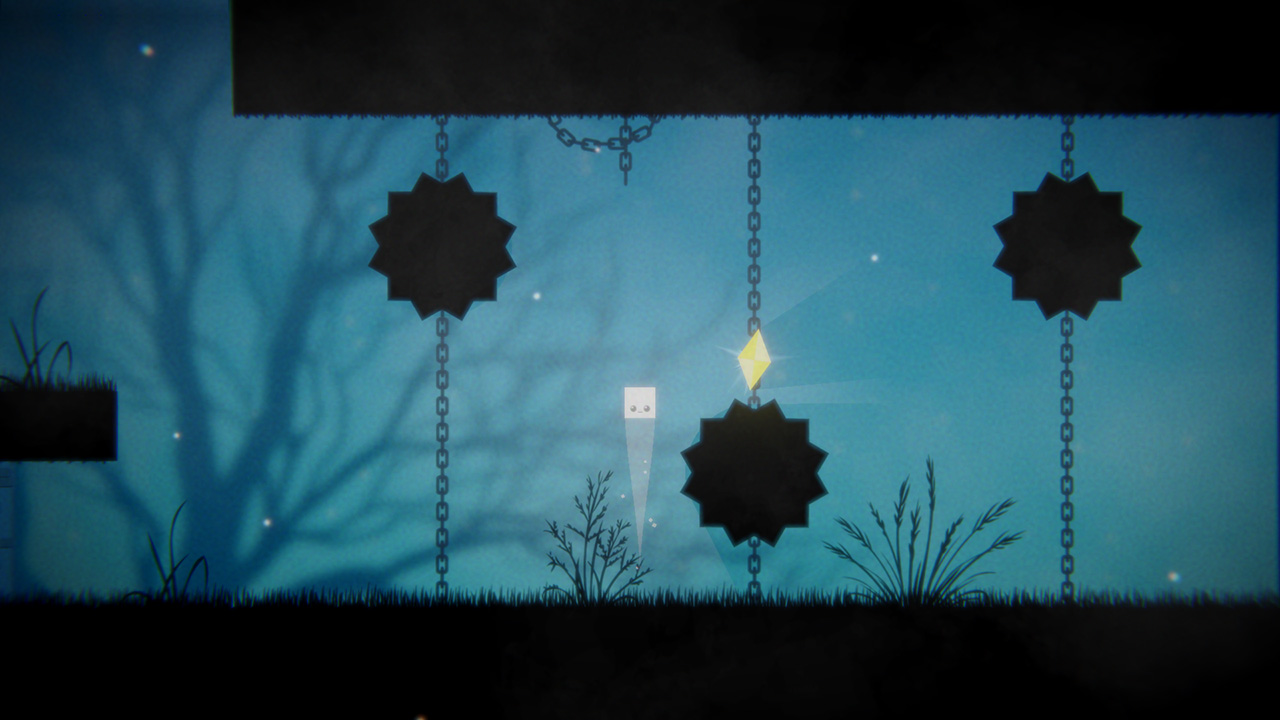
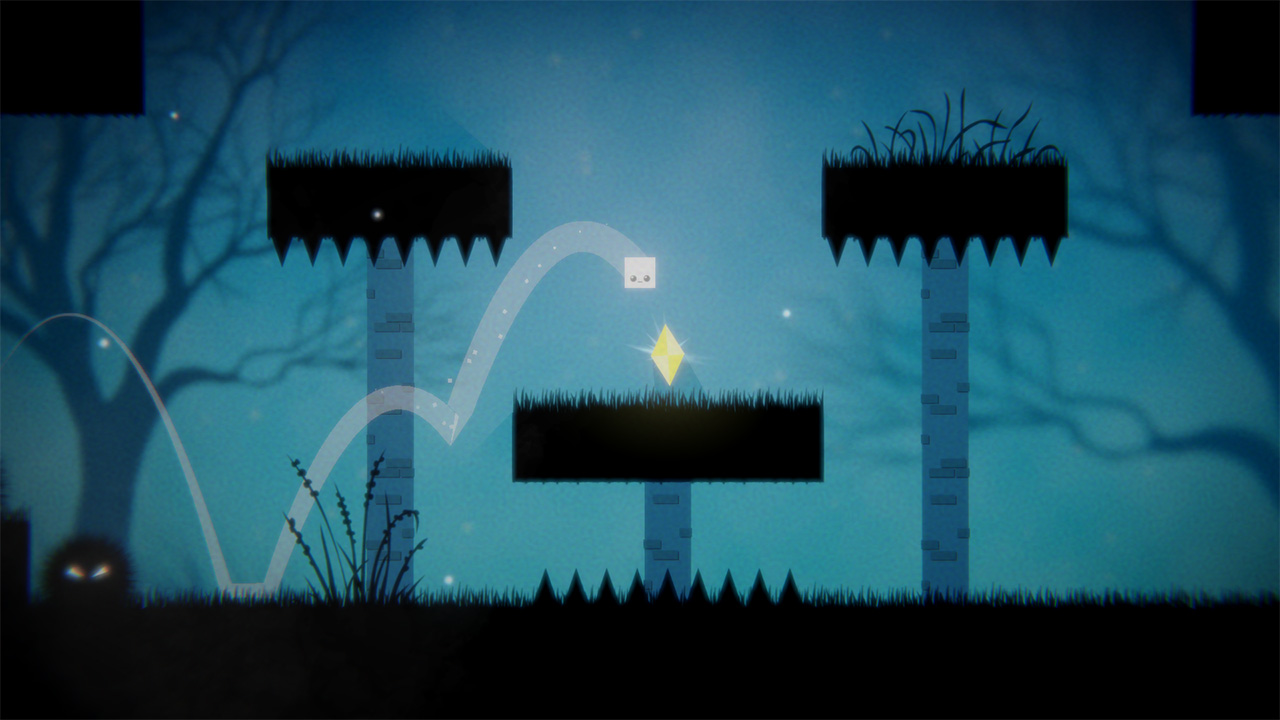
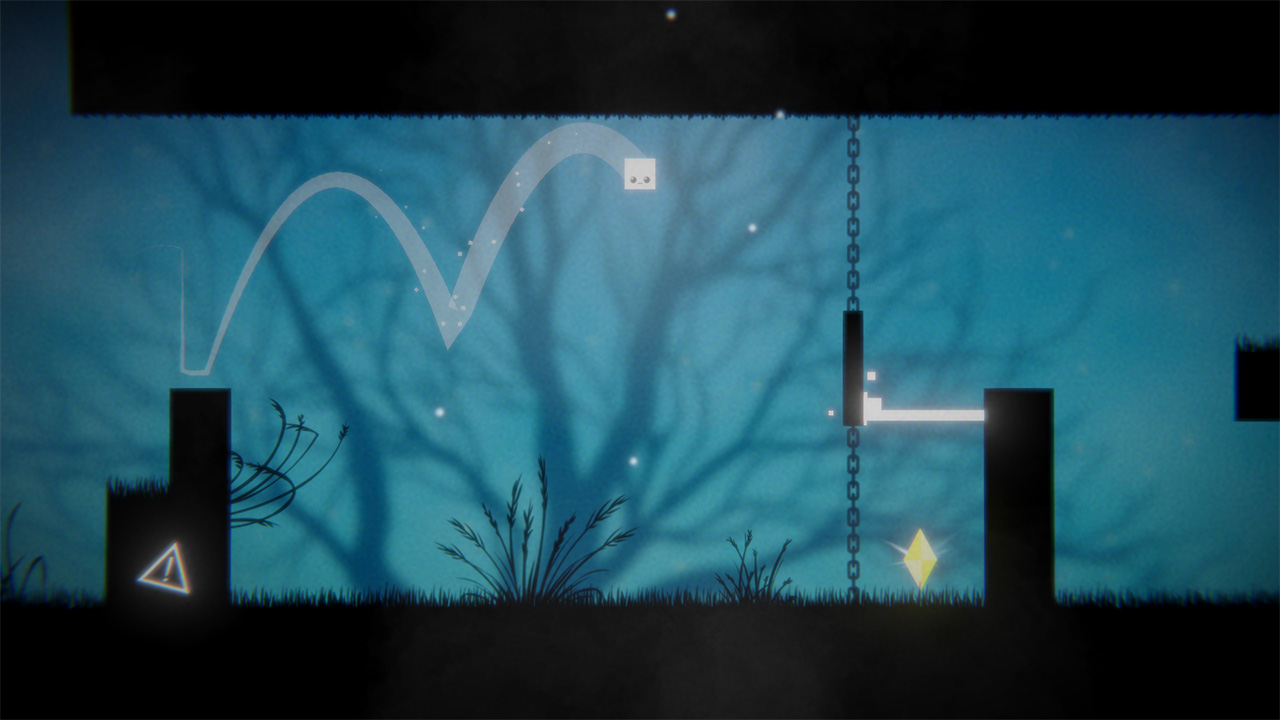
With a cost of 39 pence and created by a game company called Petite Games, I wasn’t expecting much from 36 Fragments of Midnight, but the randomly generated platformer did offer a surprising challenge in getting through the game, albeit a wholly unexpected one. On the Vita, I found that I needed pixel-perfect precision to navigate the various traps and dangers that litter the stage. Don’t get me wrong, at its heart 36 Fragments is a quick game to boost your trophy profile but at least there’s a little bit of work involved to get you there.
Thanks for taking the time to read our site. If you’d like to support us further, please consider buying us a coffee!
Rebuilding A Game Boy Pocket
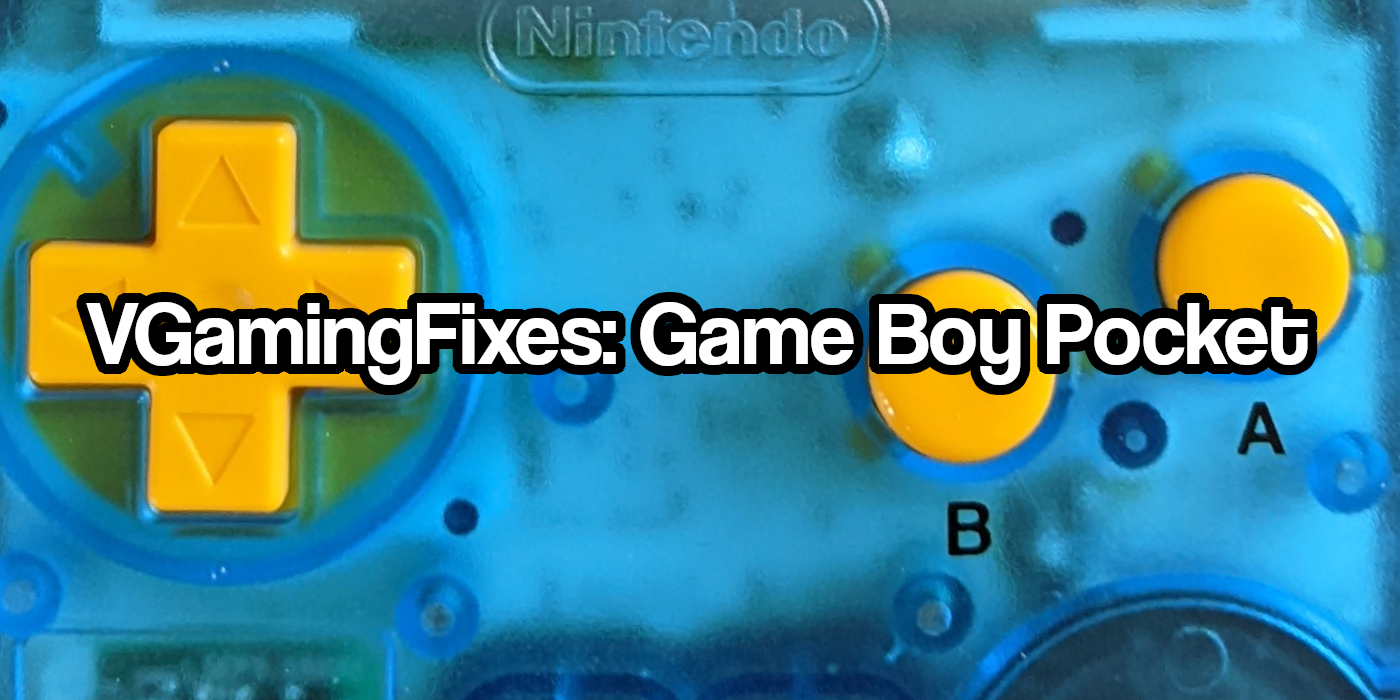

For the last two years, I’ve been trying to fix broken consoles to give them a new lease of life. After I post a successful repair there’s always someone (Ian. It’s Ian.), who says I should remember to take photos and write about it. To placate those people (IAN), I’ve remembered to do just that this is all about repairing a broken Game Boy Pocket in order to bring it back to life and sell it on.
It’s at this point I want to stress that while this project might have been successful, it’s not always the case. My desk is currently hiding the shells of those who weren’t so lucky, and if you are going to get into console repairs, I urge you to be prepared for a lot of failures. Just to have the confidence to keep pushing yourself and you will get better.
The Game Boy Pocket in question was bought from eBay last year and to give the seller credit, they were upfront about both the condition of the console and the list of problems it had – chiefly that it looked like a steamroller had repeatedly run over it.
The screen looked like the floor of a pub toilet, with liquid everywhere, and instead of batteries, the back of the shell had what looked like concrete in it. It wasn’t all bad though, the seller did say that the little red LED did light up and he could hear that lovely ‘ba-ding’ sound when he turned it on so I decided to lay down some cash as I saw nothing but potential.
When the little yellow fella arrived, I gave the console a quick once over; the shell was indeed splintered, and the console had a faint whiff of ‘building site’ about it. There was a bit of grit in the battery compartment, but it did indeed power up. After clearing out an actual rock from the cartridge slot I loaded up the absolute banger of a game – WWF Superstars 2 – and was so excited to hear the opening bars of the game. Although I couldn’t see anything at all on the screen, it did mean that there was life left in the old Boy so it was time to hit the shops.
Shopping list
When repairing anything, I do like to salvage what I can. In this case, everything but the motherboard and speaker were useless and had to be binned. The screen was obliterated and the buttons were beyond usable, so this is what I determined would be needed.
- New shell
- Buttons and membranes
- IPS screen
- Power regulator (optional)
The build
Once all of the bits and pieces arrived, it was go time. The first thing I did was give the motherboard a deep clean using Isopropyl Alcohol (96%), a toothbrush and a cotton bud. This got out most of the grime and scuzz from the previous owner’s quarry and replaced it with that vodka smell I know all too well.
As the motherboard was drying it was time to turn on the soldering iron and prep the new shell. When I bought the shell, it looked groovy but it needed room for a fancy new screen. Nintendo are famous for cheaping out on things that will keep players on their consoles – chiefly a backlight so its down to folks like FunnyPlaying who’ve taken the initiative and somehow worked magic in making modern IPS screens – smartphone quality panels compatible with old tech.
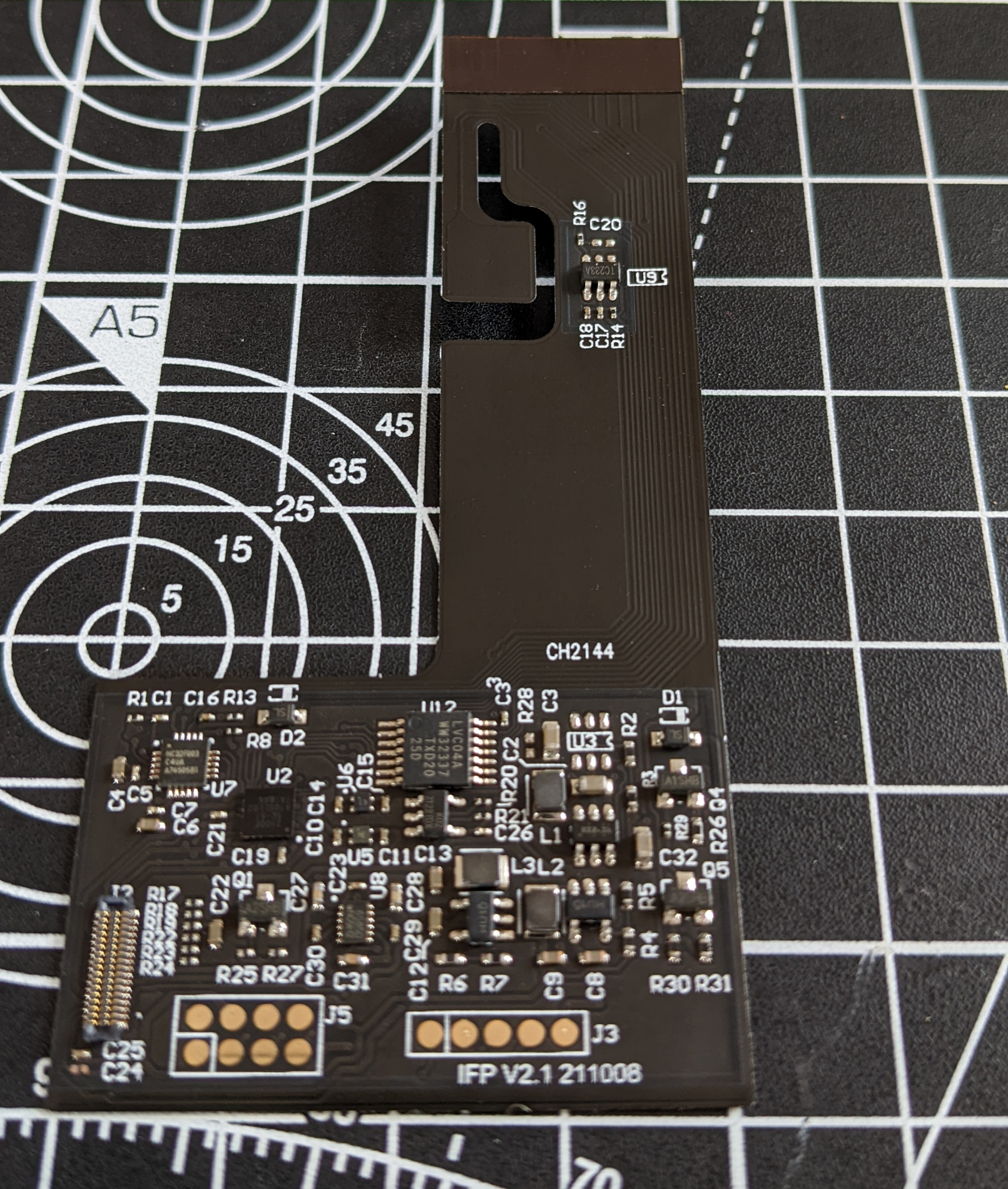
The new screen might be thin but it’s longer than the original Game Boy screen so some snipping of the shell was needed. Trimming the shell is easy enough, just remember to sand any rough edges so you don’t bork the new screen when you fit it in and close the shell around it. The IPS screen was quite easy to install; it’s just a case of lining it up, taping it down and clicking the various tabs between the screen and included driver board. For those interested, this included a new ribbon cable where the touchpad, which is used to change colours of the screen, is now on the ribbon cable and not an additional cable that needs bolting to the set up. This leaves the cable to the power switch as the only thing to solder.
I’m not the greatest when it comes to soldering, so I live by two rules; 1. Use as much flux as possible as its best to have too much than too little and 2. Like anything in life, if you’re lubricating before carrying out a task, make sure you clean up afterwards.
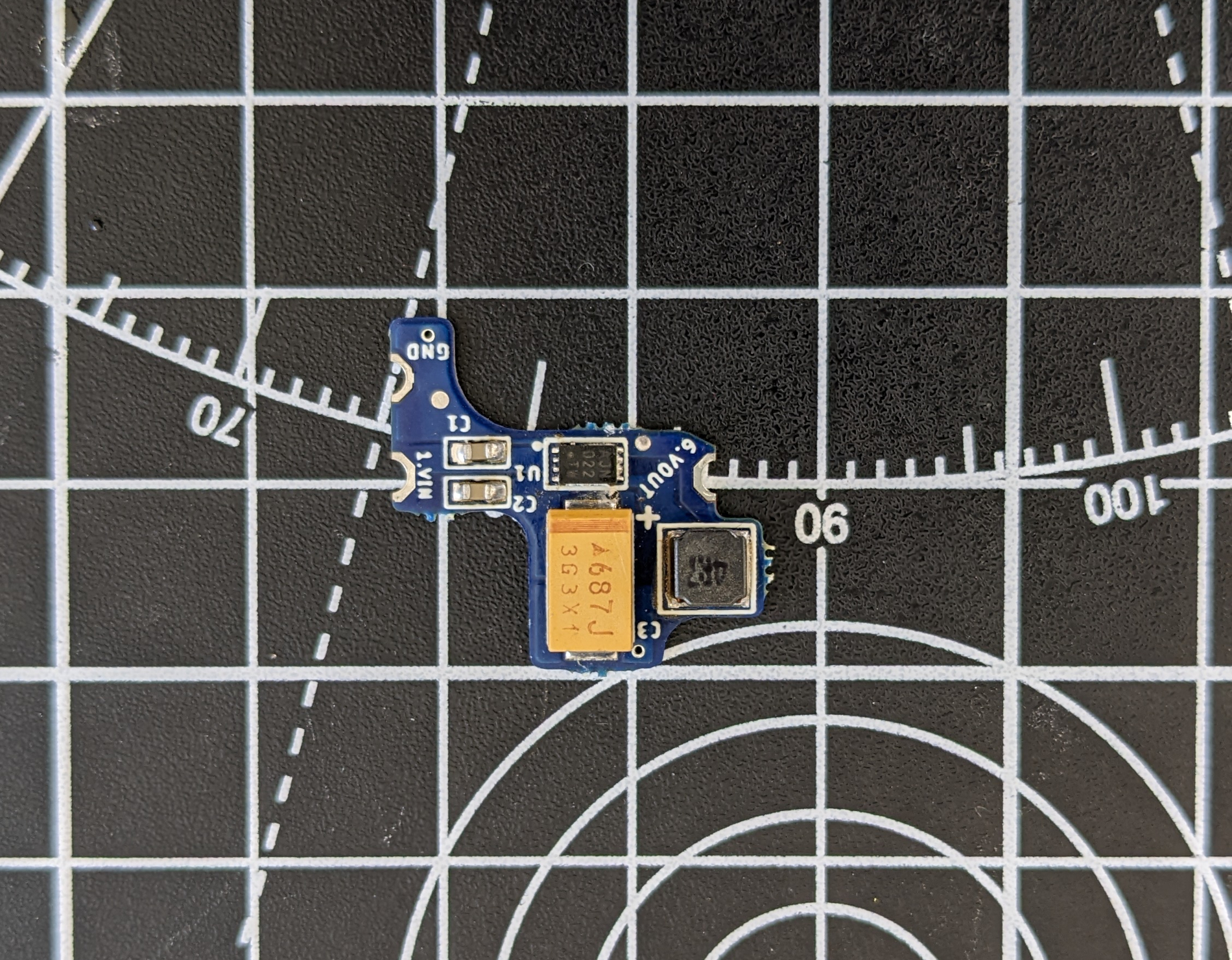
Before tacking the wires of the screen to the console, it was time for some major surgery by adding a power regulator. This is an optional mod, but recommended as it helps keep the console stable, especially when the batteries get low on power.
Following Helder’s instructions to the letter got me through this process. It was a little tricky, the process involving removing one of the pins which connect the DC power converter to the mainboard, as well as a capacitor. But once the little board was soldered into place, even after third degree burns and words that I will not repeat for fear of my mum calling me to chastise me, it was time to put everything back together.

After testing all the ports, the touchpad, and making sure everything was tickety-boo, I was happy with the results. The screen is absolutely magical – it’s bright and can change colour with the tap of a finger. The look of the console is striking and I’m really chuffed with how it turned out despite all the blisters on my fingers. I think the clear blue shell goes really well with the bright yellow buttons and considering where it started, the fact everything works as it should is amazing.
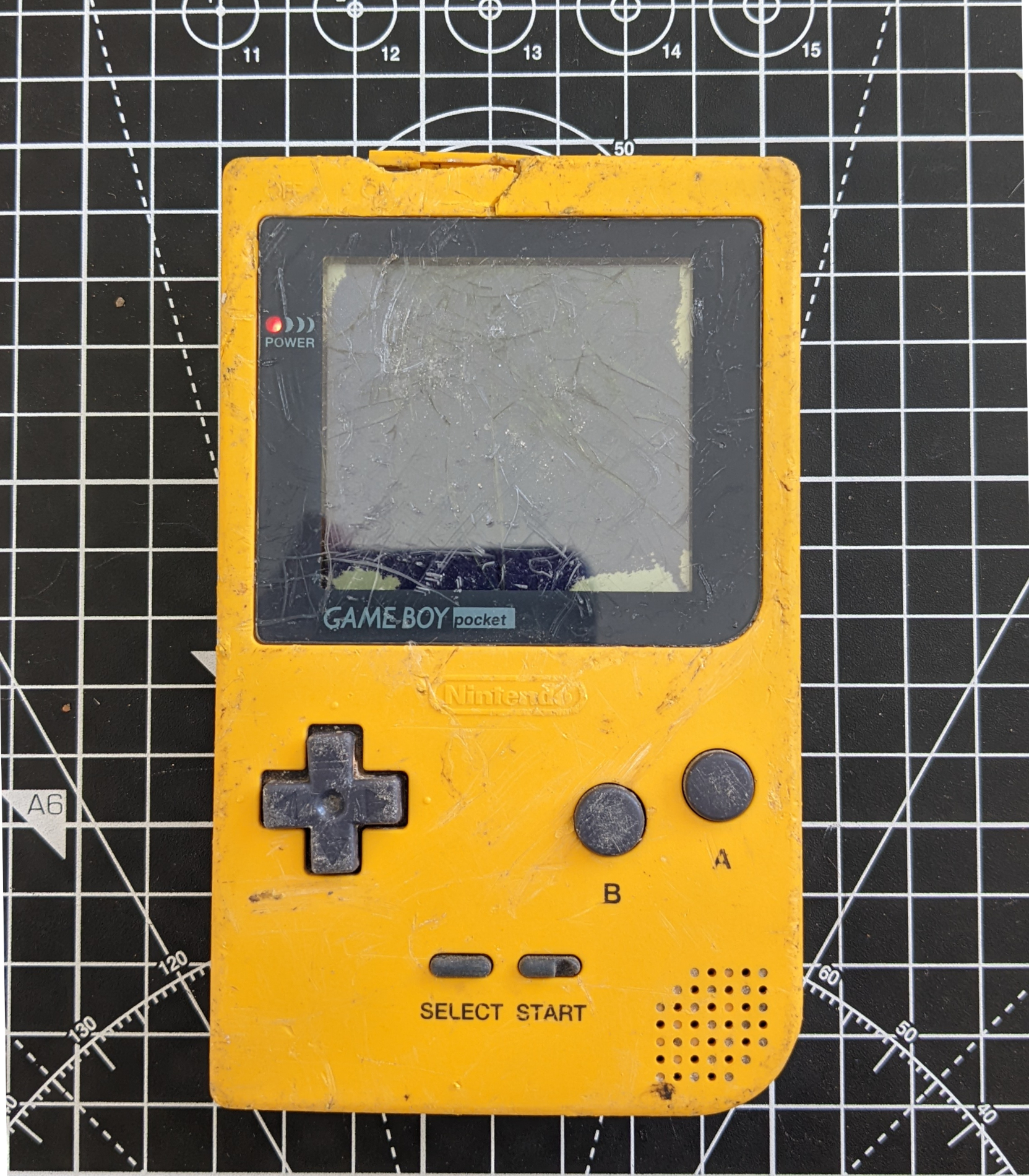
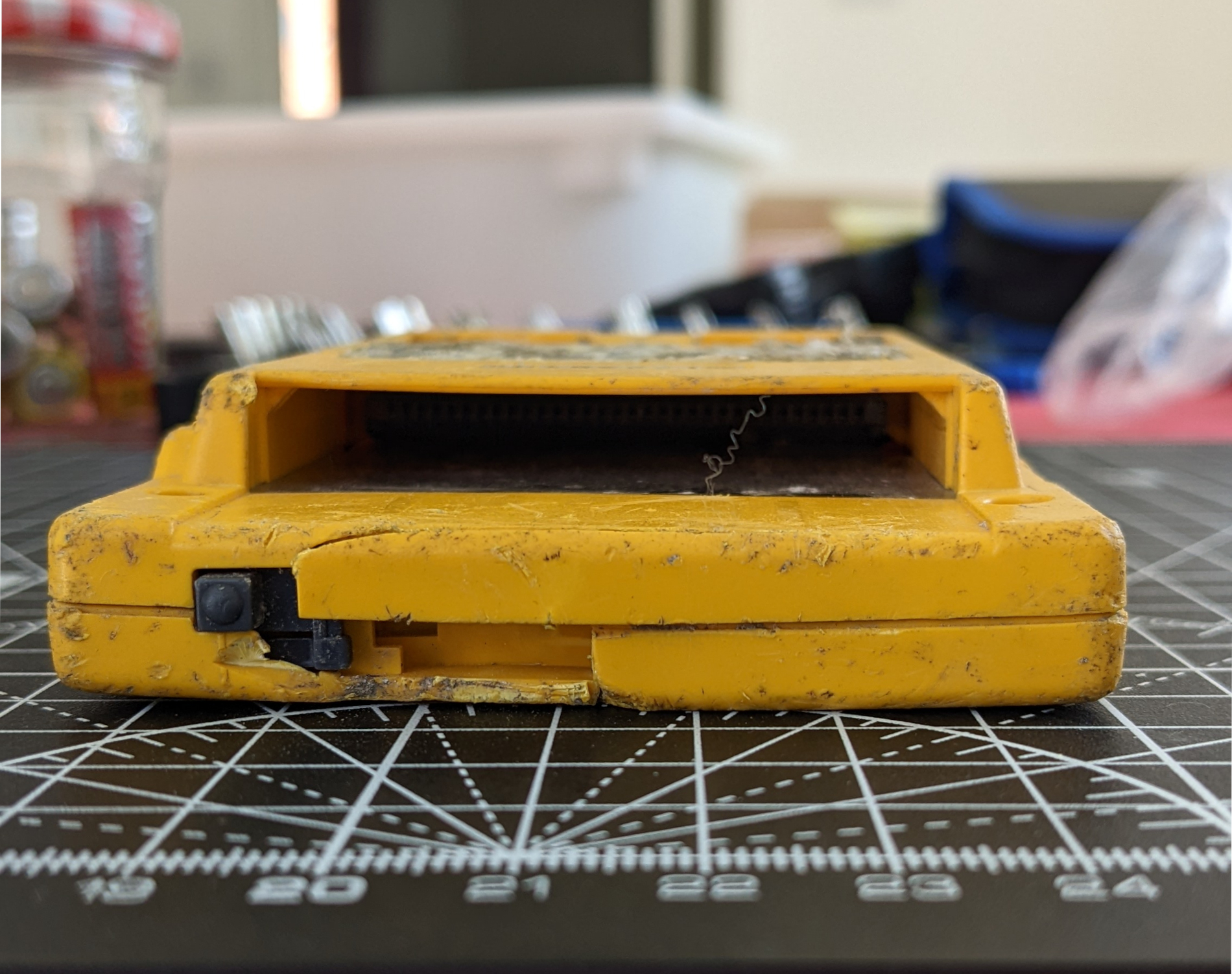
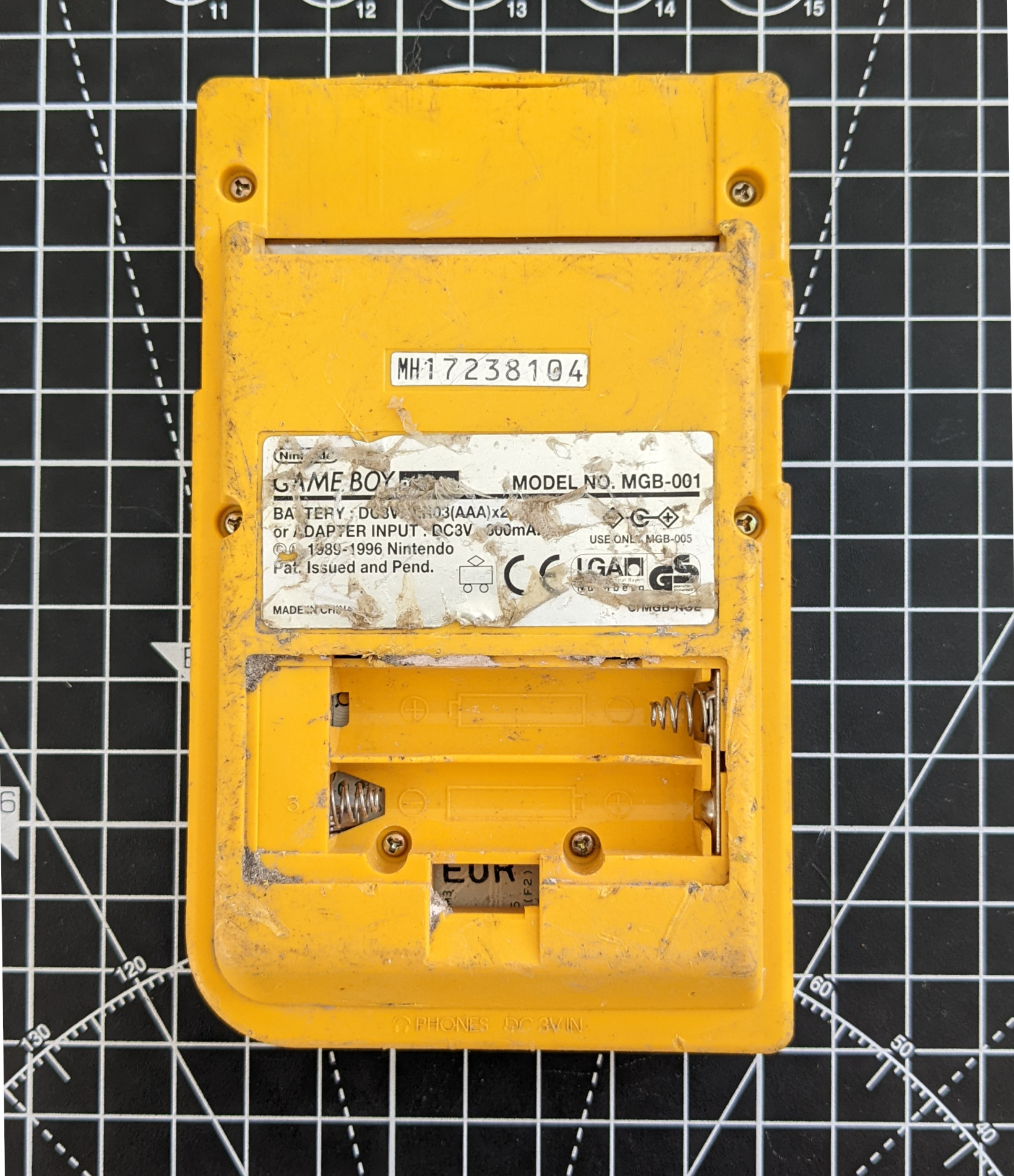
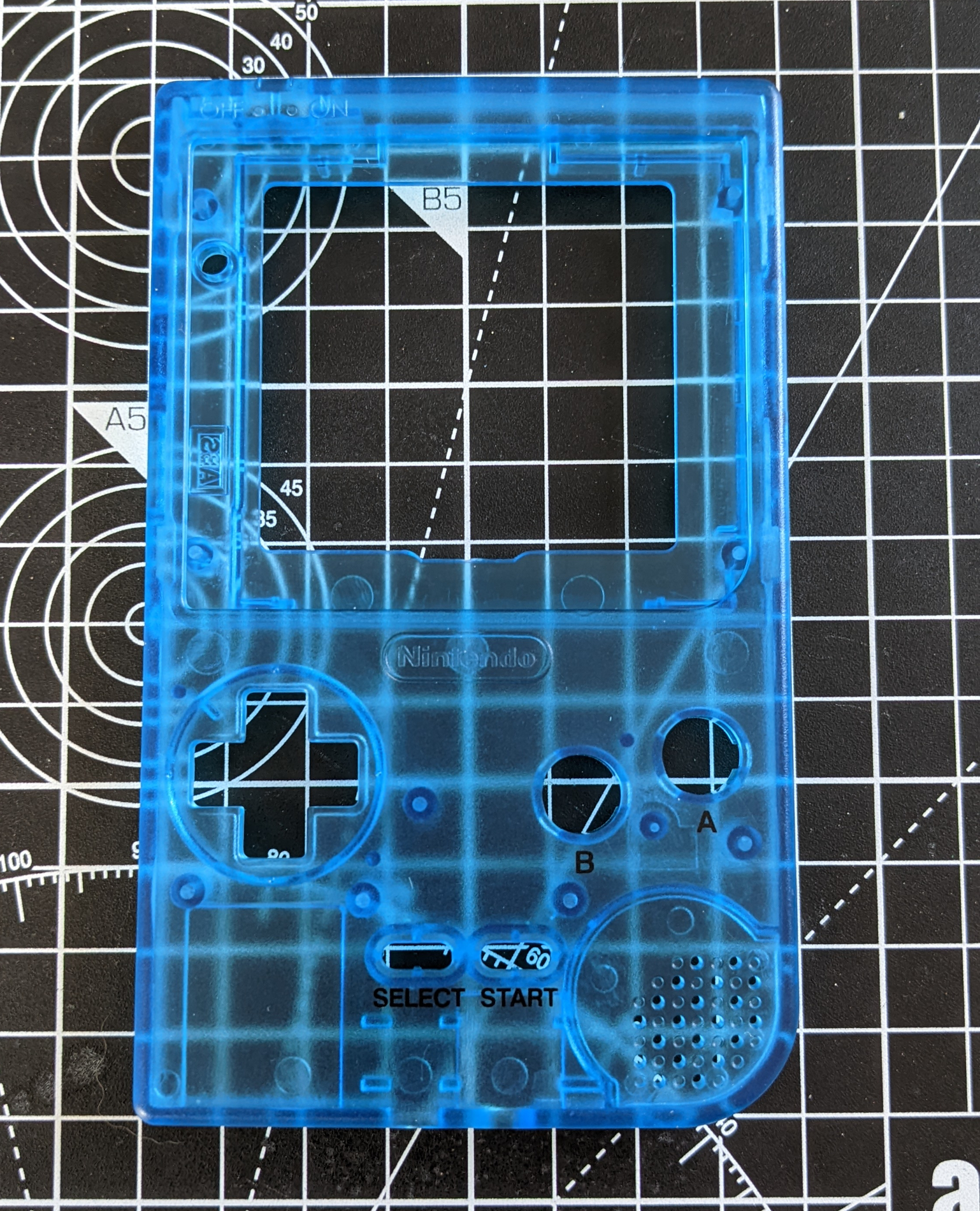
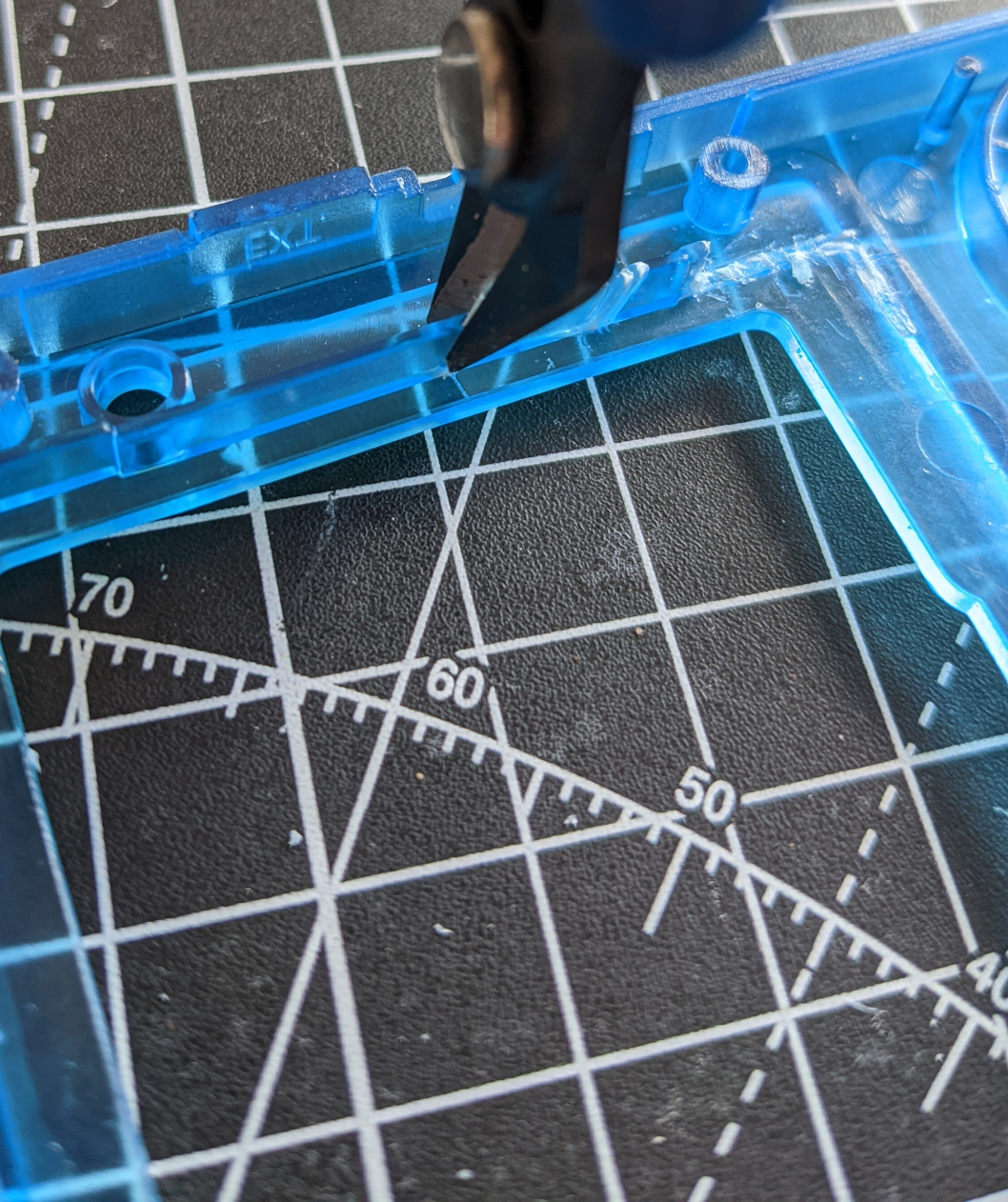
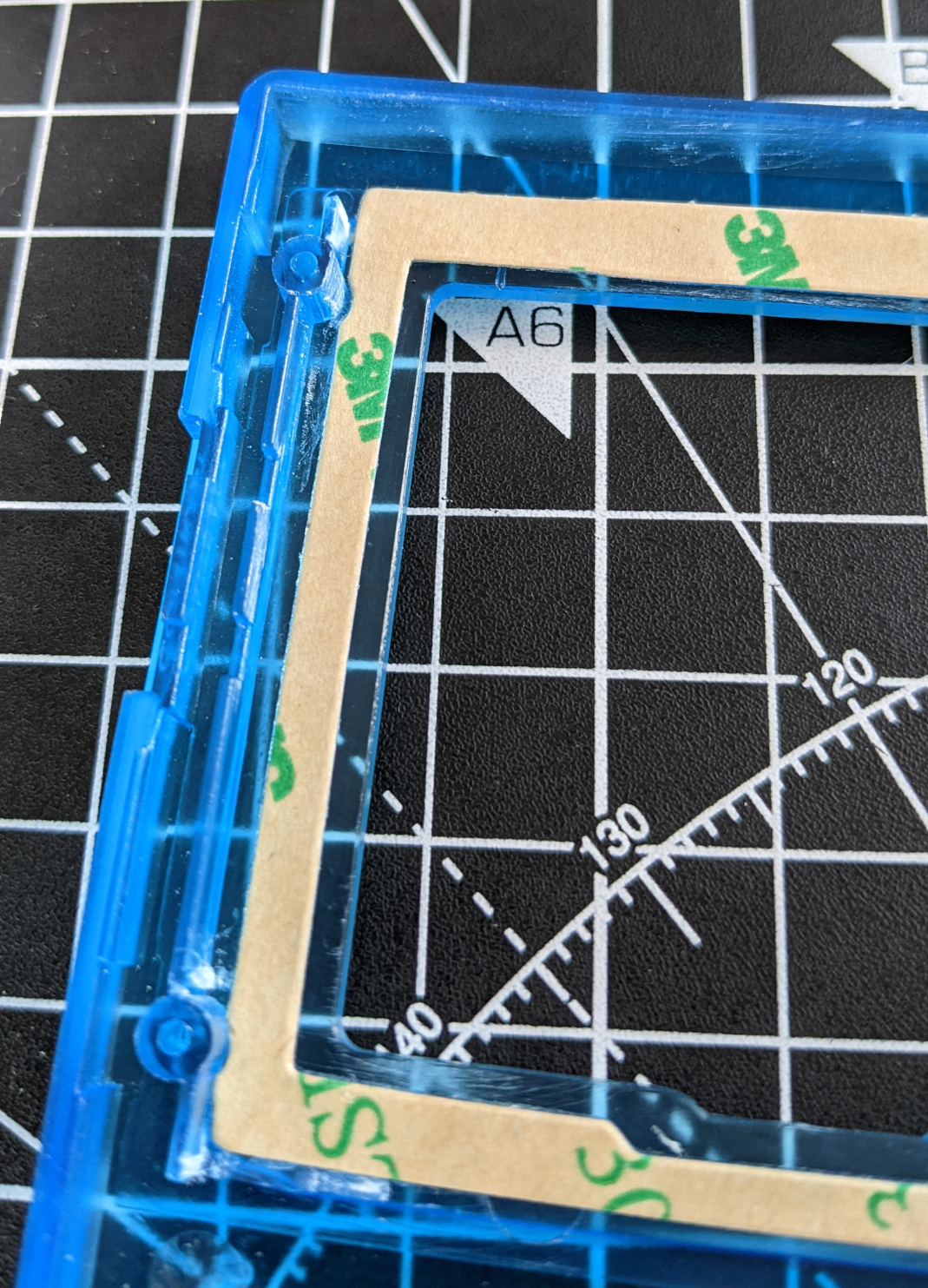

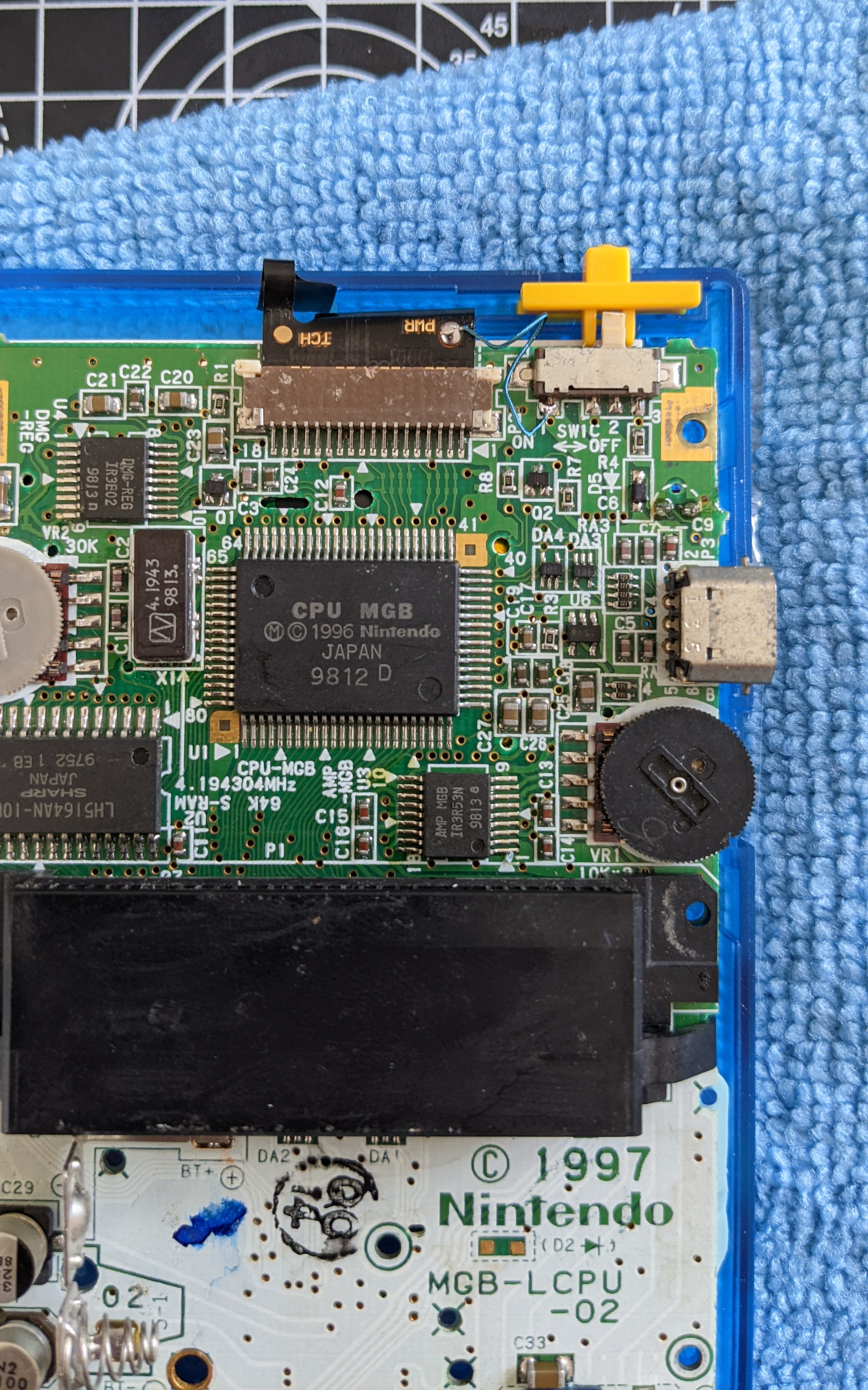


The Super Mario Bros Movie Reviewed
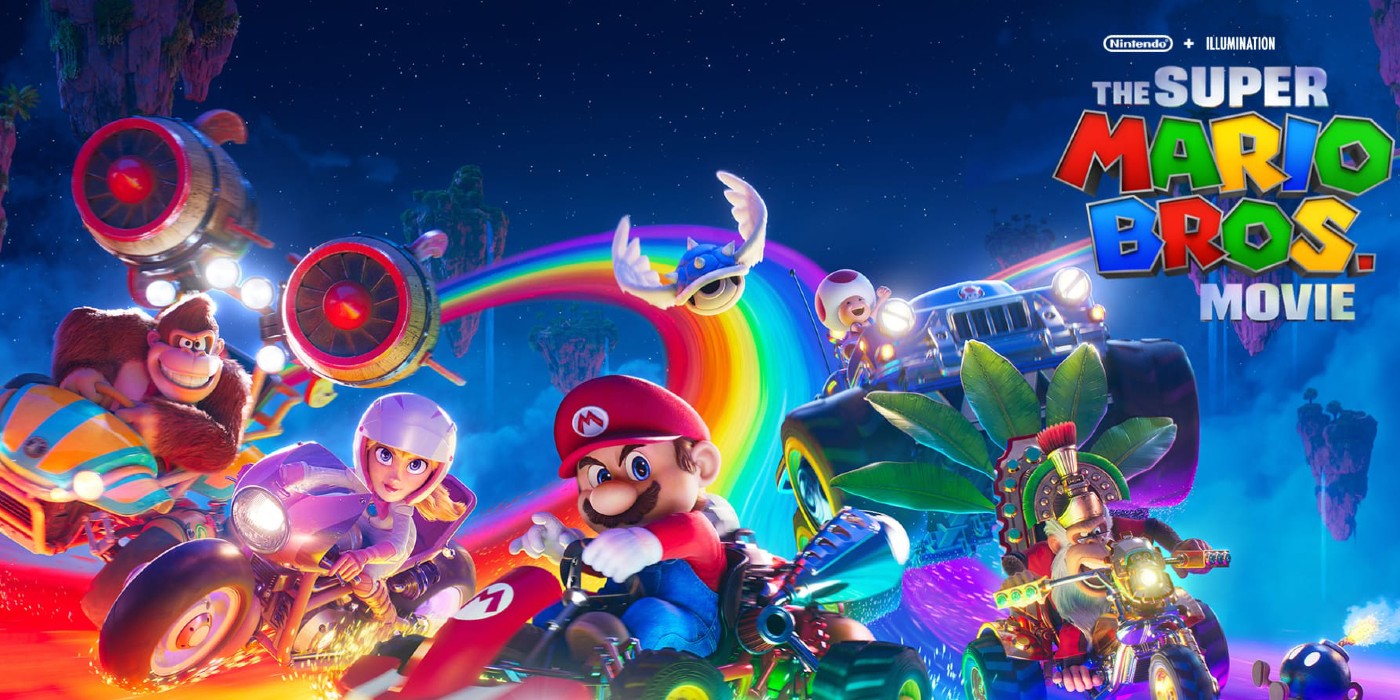

Video game to movie adaptations tend to have a bad rep, with the nineties/early noughties being particularly dark periods of time. Tosh like Alone in the Dark, Dead or Alive and Doom being touted as the next great crossover, only to be ripped apart by fans and critics alike. Granted over the last few years, people have started to warm to them but the fact remains, most adaptations aren’t all that good. The worst mainstream failure lands at the feet of Nintendo, and their only attempt at a motion picture, the infamous live action attempt known as The Super Mario Bros Movie. The Bob Hoskins movie released thirty years ago and was so poorly received, that the Big-N dropped all future feature film products for the foreseeable future. That is, until Illumination Studios -the team behind Despicable Me, Minions and Secret Life of Pets came knocking with an idea of an animated version of Mario so grand that Miyamoto himself backed the project and saw it come to fruition.
At A Glance
| Positives | + Beautifully animated + Chocked full of characters from Mario’s history + Bowser is outstanding |
| Negatives | – Story a little thin – Inconsistent voiceover work – No Lemmy Koopa |
| Release Date | 5 April 2023 (UK) / 7 April (WW) |
| Runtime | 92 Minutes |
| Available Formats | Standard, Real3D, 4DX, IMAX |
| Format Viewed | IMAX |
The animated version of the Super Mario Bros has been created by Illumination, in conjunction with Nintendo and distributed with Universal Pictures and tells the story of two brothers, living in Brooklyn trying to kick start their business. After responding to a flood that threatens their town, the Mario Bros get pulled into an alternative world that is on the brink of war where they are quickly separated. Mario, the bigger brother of Luigi, enlists the help of a fearless mushroom creature known as Toad and sets off to find his sibling. He’s given a quick rundown of what’s happening in the world, primarily that Bowser, the King of the Koopas is on a crusade to take over this planet, starting with the Mushroom Kingdom, led by the only other human on the planet, Princess Peach.
From the summary, it’s easy to discern that the Super Mario Bros Movie takes its cues from the games themselves. Mario teams up with Peach to help build an army to take on Bowser and enlists the help of Donkey Kong along the way to not only save his brother but stop Bowser. While the plot is very by the numbers, people need to remember that this is Nintendo and they’ve been honing what a Mario game is for the best part of four decades, so why should they change the formula now? The film moves at a snappy pace, never stopping too long before moving on to the next scene which is enough for a whirlwind tour of the Mushroom Kingdom. At 90 minutes, and packed to the rafters with Easter eggs from 130+ years of Nintendo history, The Super Mario Bros Movie leaves no time for parents or kids to get bored.
We know by now that what drives a Super Mario game isn’t the plot but the gameplay itself, but what happens when you take away the button inputs? This is the biggest task of both Illumination and Nintendo, how to give the viewers the same feel as playing the game without a controller in their hands. The solution is quite straightforward – make the film feel like someone else is playing it. Much like the established platformer, the characters are never still, they are always in motion one way or another, either walking to their next objective (be it visiting Princess Peach or running from a rabid dog), but whatever the case, there is always some form of movement employed by a character -or the camera itself- to give the picture a feeling of being played rather than watched. Illumination takes this one step further and includes platforming sections, like Mario’s training in the Mushroom Kingdom. This delightfully created obstacle course looks like it’s been stripped from Super Mario Maker, with falling blocks and Piranha Plants snapping away at our moustachioed hero.

The platforming elements aren’t the only thing that’s made their way over to the Super Mario Bros Movie, during the Rainbow Road segment we’re treated to not only how the Mario Kart vehicles are pieced together, but also how the game’s power-ups have translated to the big screen, including the homicidal meanace – the Blue Shell. It’s a smart way of including the ridiculous nature of video games in a more rigid setting but also ticking the fan service boxes in a way that doesn’t offend or cheapen the process.
The animations are absolutely glorious and the perfect adaptation of video game history. The Mario Kart section is particularly vibrant and full of colour, keeping everyone’s attention, and there is not one pixel out of place that would cause a fanatic of the series to say it didn’t wouldn’t be canon in the games. The film’s score is just as packed with various motifs from the series, with the likes of the various character tunes like Peach’s Castle theme from Super Mario 64 and the GameCube boot up noise, which brought a smile to the face of this old gamer who’s played too many Mario games and recognised Koji Kondo’s music anywhere.
Rounding out the package comes the script itself, and which has had a lot of attention poured into it. The challenge set by Nintendo was to take the various grunts and soundbites from the games and turn them into a workable script. For the most part, this is great – the wizard Kamek sounds like Frankenstien’s servant Egor, and the Toads are as shrill as they’ve ever been. The standout performance though is giving the utterly adorable Luma a self-destructive, sadistic look on life where everyone isn’t going to just die, they are going to fade into the black nothingness of existence. This might not appear to be kid friendly but by god, it does make the adults laugh.
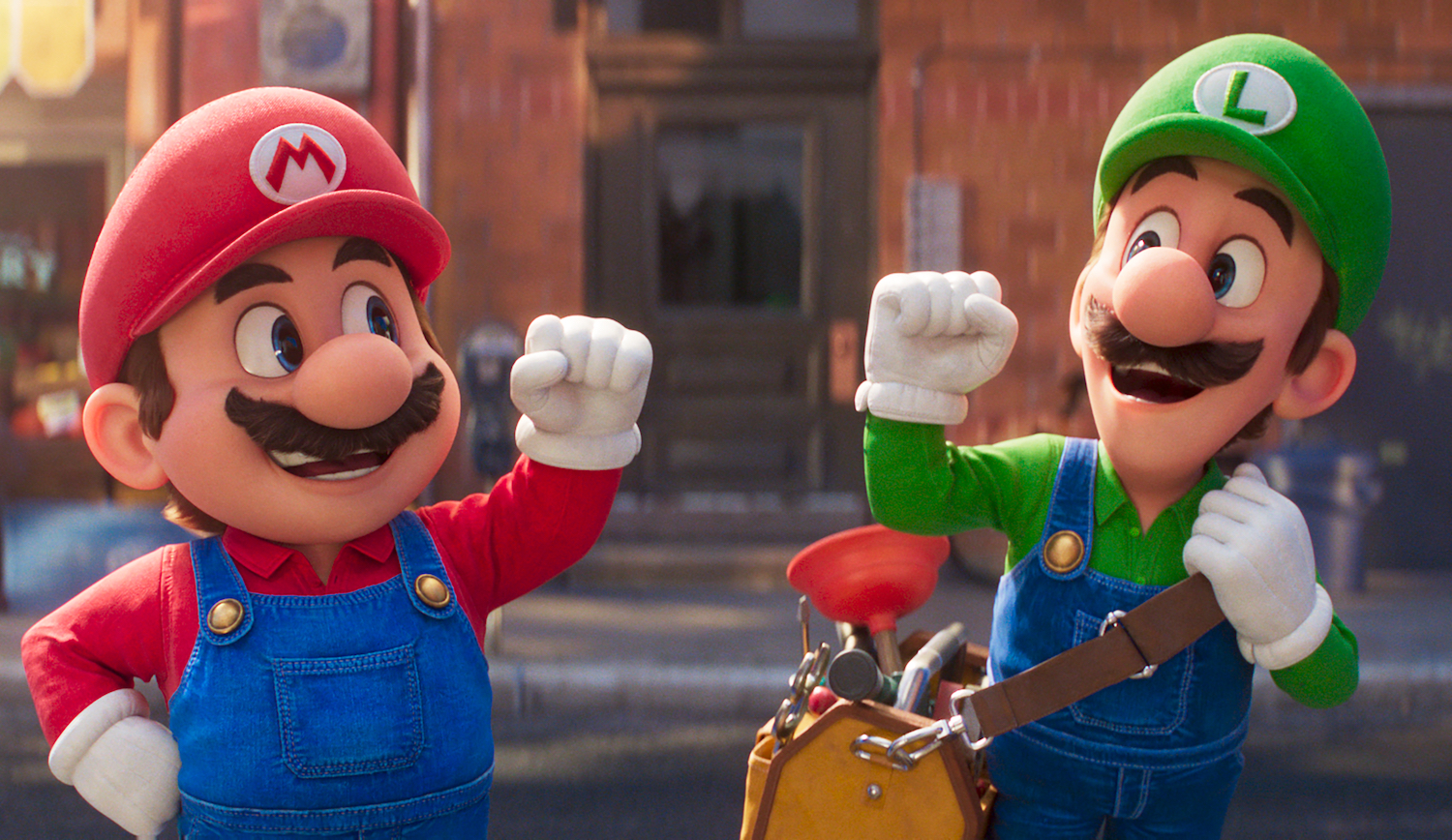
It’s not all Shine Sprites and Rainbow Roads, with the biggest dry-bone of contention being the voice acting itself. Even before the movie debuted, there was a lot of division in some of the casting announcements, mainly Mario himself, portrayed by Chris Pratt. Within the first 10 minutes of the picture, this is hilariously explained to the audience and is perfectly justifiable given the context, but that’s not where the issues lie. The main problem with the voice-over work is consistency – both Pratt and Seth Rogen (playing Donkey Kong) apparently just showed up to the recording booth with just their regular voices but ended up trying to slip into characters for snippets of dialogue.
This did work a couple of times throughout the film, hearing Donkey Kong burst out with Rogan’s recognisable laugh was rather funny but this was the exception rather than the rule. Pratt’s performance was particularly jarring, with a few lines in his regular tone before an exaggerated “Let’s-a go” or “Mama-mia” to finish the scene. Perhaps this was done so that the audience could distinguish Mario from Pratt’s other cartoon persona – Emmett from The Lego Movie, but whatever the reasoning, the weird hybrid of a regular voice mixed with a faux Italian-American accent made Mario feel like a strange background character thrust into the spotlight. It was especially noticeable when our Italian plumber came face-to-face with Bowser.
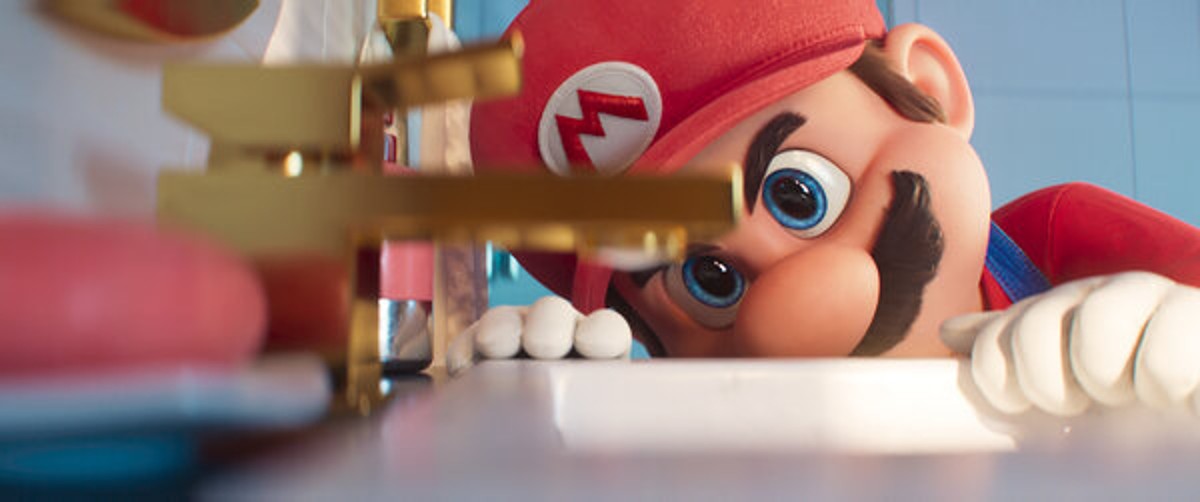
Jack Black’s performance as the King of Koopas was on another level, with everyone having to play catch up with him. From the menacing introduction, the takeover of the ice kingdom shown in the trailer, to his more comedic and sensitive moments, particularly involving a piano, Black understood exactly what the character was about and played to every beat perfectly. For me, his embodiment of Bowser is up there with perfect casting calls like Robert Downey Jr. as Tony Stark, Tom Cruise as Ethan Hunt and Uma Thurman as the Bride.
Nintendo was never going to let The Super Mario Bros Movie be anything but a success and worked hard to undo all the damage that the 1993 live-action version created. Sticking to the established formula of Super Mario and bringing in the team that worked to make Minions the powerhouse it became is absolutely the right fit and tone for a near-forty-year-old series. After nearly six years of development, the end product is one that manages to join a growing number of good game-to-film adaptations, a list that currently includes Sonic the Hedgehog 2 and Mortal Kombat. That’s not to say there are challenges, the film plays it very safe with the tried and tested Mario plot and patchy voiceover work threatens to undo all the good work, but Nintendo and Illumination have still managed to craft a 90-odd minute feature that is an enjoyable film for their target markets; young kids and die-hard fans. For everyone else, the Super Mario Bros movie is firmly aimed at the younger audience so depending on how young at heart you are, will depend on how much enjoyment you’ll get out of it.
In the interest of full disclosure, VGamingNews was sent to an early access screening of the movie. We’ve not been paid for a positive review and all expenses were at our own costs.
VGamingIndies: Vol 6


We don’t need to tell you that there are a lot of video games being released every week and a lot of games simply go under the radar. Indie games in particular are often developed by small teams, usually without a billion dollar corporation behind them and they don’t have a chance to shine.
VGamingIndies gives us a chance to talk about some of those smaller titles that we’ve played recently. We’re not scoring these games like we would if it was a ‘full review’. An arbitrary number isn’t always the best approach, especially with Indie games. Instead, we’re just laying out what we liked, what we thought didn’t work so well and leaving the choice up to you.
Lunistice
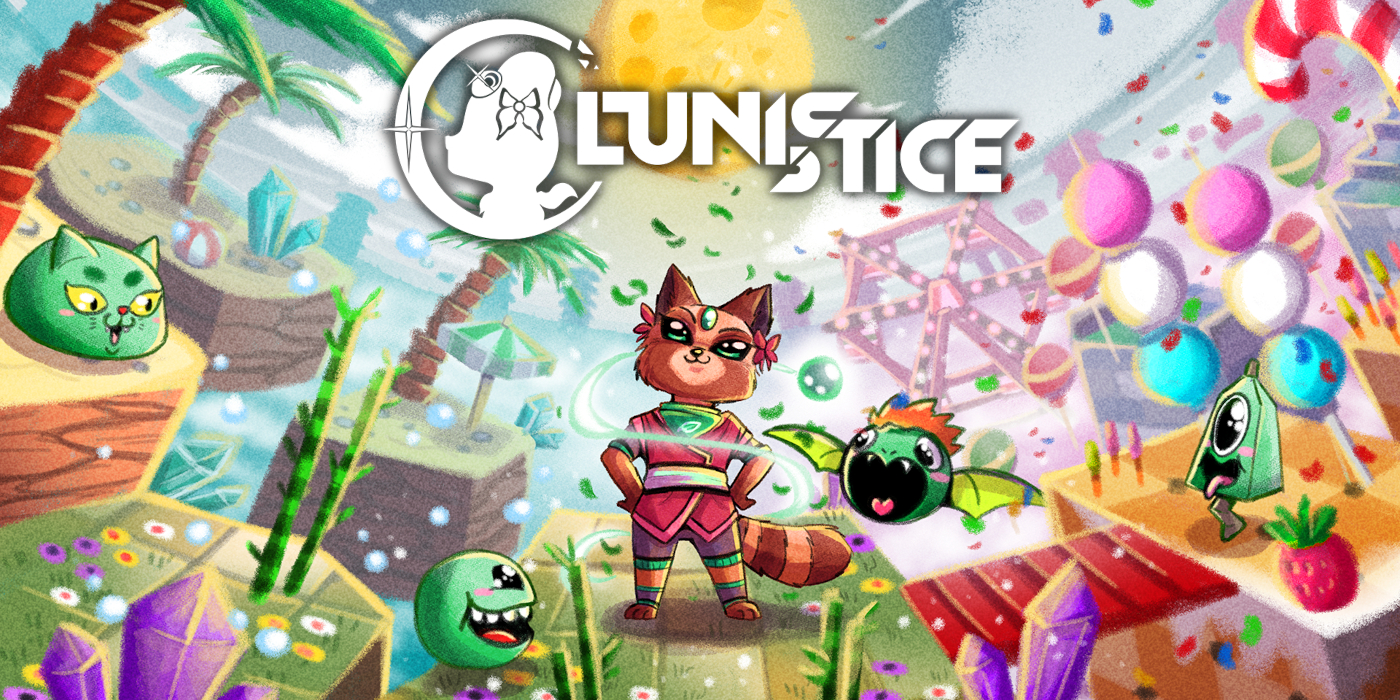
| Key Info | |
| Platform | Nintendo Switch, PC – https://store.steampowered.com/app/1701800/Lunistice/ |
| Developer | A Grumpy Fox |
| Publisher | Deck13 |
| Positives | + Nostalgic Sega Saturn stylings + Energetic, upbeat soundtrack + Cool grinding elements |
| Negatives | – Depth perception rather tricky – Almost an auto-runner – Bland roster of enemies |
| Price | £4.99 |
| Played by | Drew Sherratt |
Lunistice, created by A Grumpy Fox and published by Deck13 is a callback to the early days of 3D platformers, offering a retro run-and-jump-athon where your only goal is to reach the end of the level without running out of lives. You play as a tanuki called Hana, who must navigate her way through a handful of fantastical environments from her dreams, picking up origami collectables and dodging simple enemies as she goes.
Fans of the PS1 will be in their element here, with blocky polygonal graphics and simple, bright environments harkening back to the days of Croc and Crash Bandicoot. In fact, with its clean level designs that focus on speed, fast grinding sections, and incredibly catchy soundtrack, Lunistice feels like the Sonic Adventure game that SEGA should have cooked up when the Saturn was in its heyday. In fairness, Lunistice actually makes some significant improvements to gameplay elements similar to those in the Sonic Adventure franchise, and I believe it could have a long lifespan if A Grumpy Fox wanted to make a more meaty title in the same style in the future.
Despite being a short experience, there’s a lot of replay value in Lunistice if you’re so inclined. Completionists will be challenged to complete all of the levels as quickly as possible and without dying, whilst also snagging all of the pick-ups along the way if they want to earn the coveted ‘S’ Rank on each world, and that’s not to mention the obvious attractiveness to the speedrunning community.
But much like the games it looks to emulate, Lunsitice has its flaws. The consistently bright colours of the levels makes depth perception a little tricky, and alongside a slightly clunky camera system, I often found myself missing a jump and sailing to my death by being unable to judge exactly where a platform was in relation to Hana. The level designs too are perhaps a little on the simplistic side, and don’t offer much in the way of player engagement, leading to some portions of Lunistice feeling like an autorunner rather than a bonafide platformer; this isn’t so much a criticism as an observation, since there there will undoubtedly be fans of this style – it just isn’t especially my cup of tea.

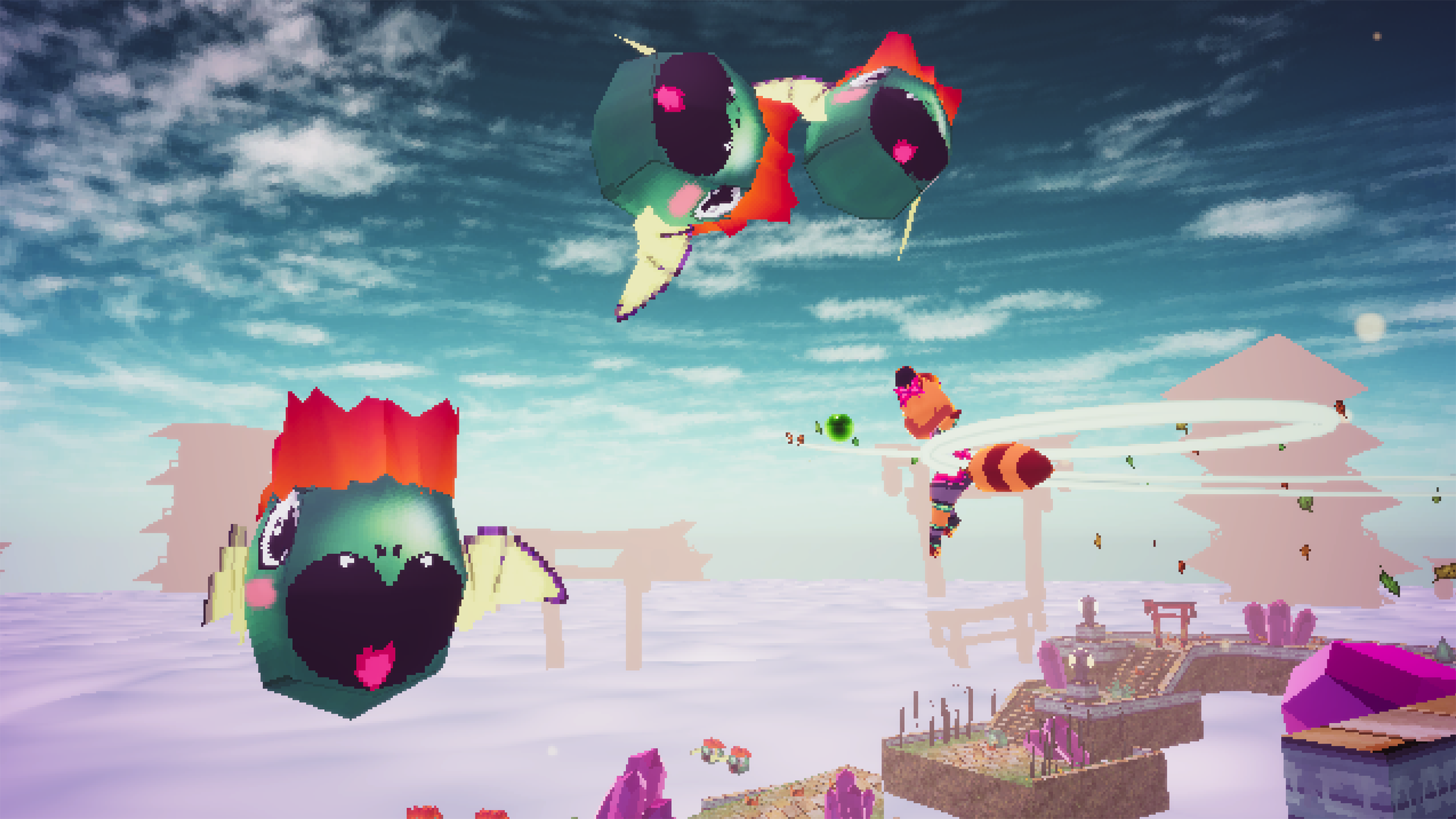
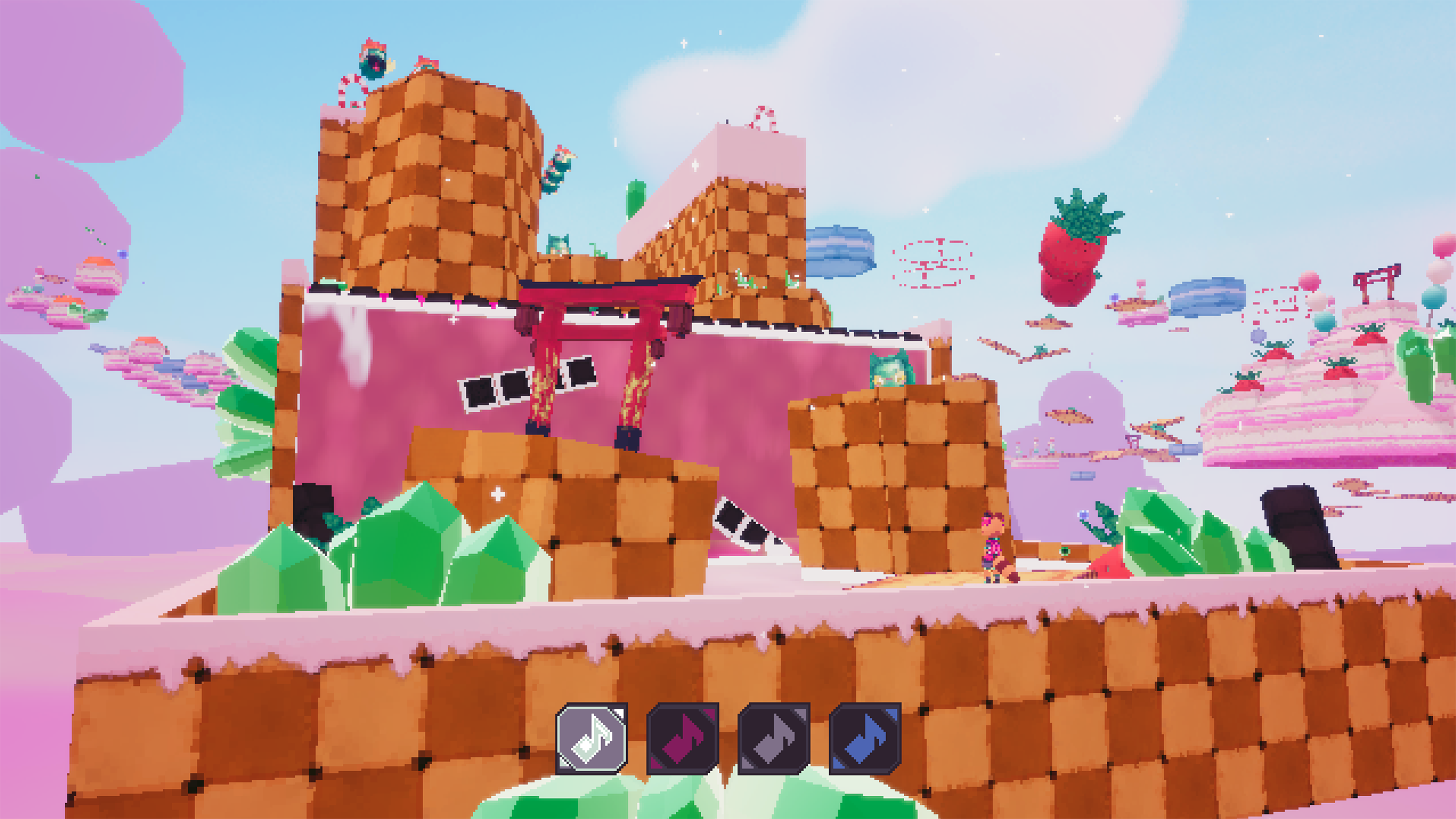
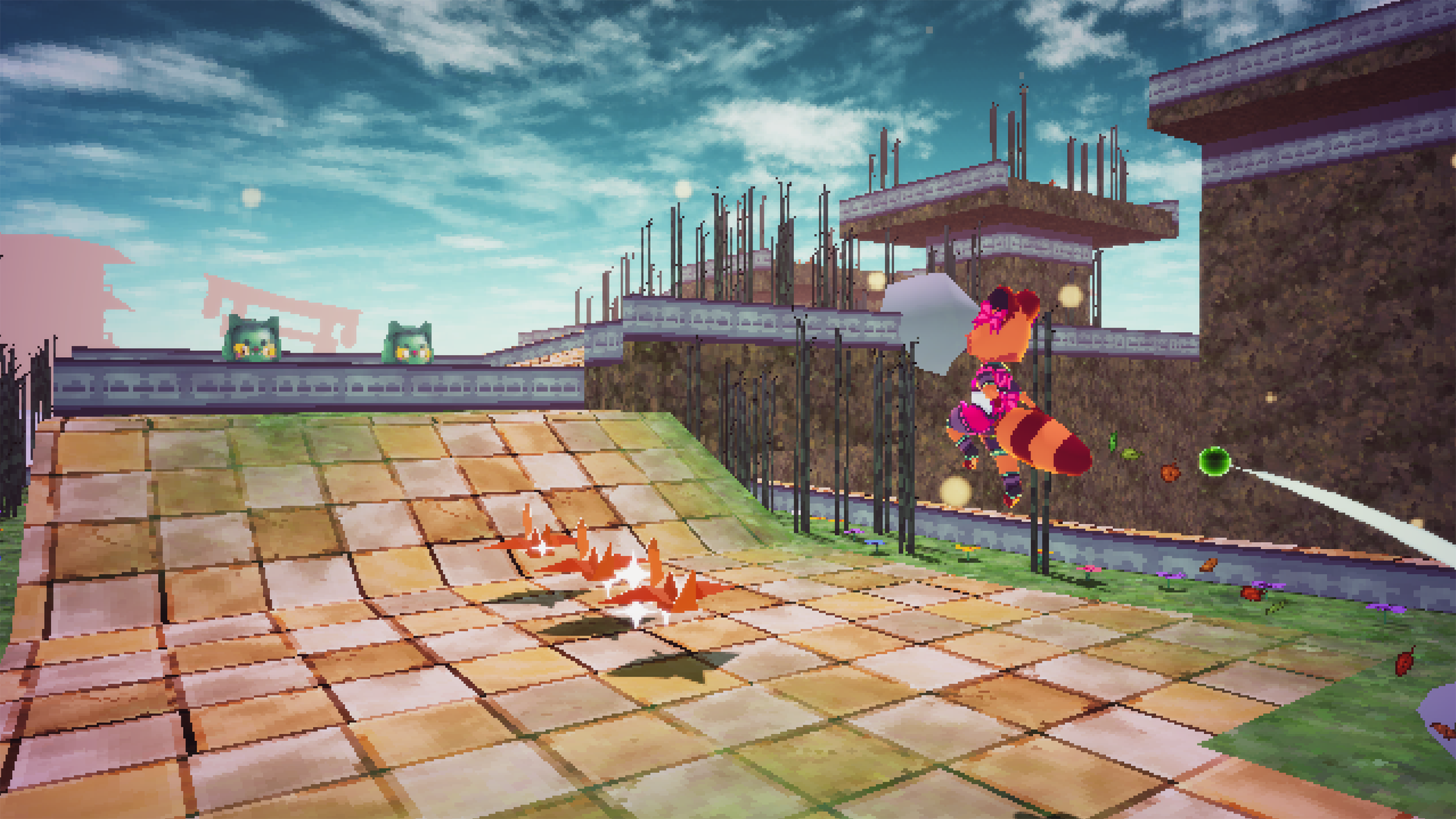
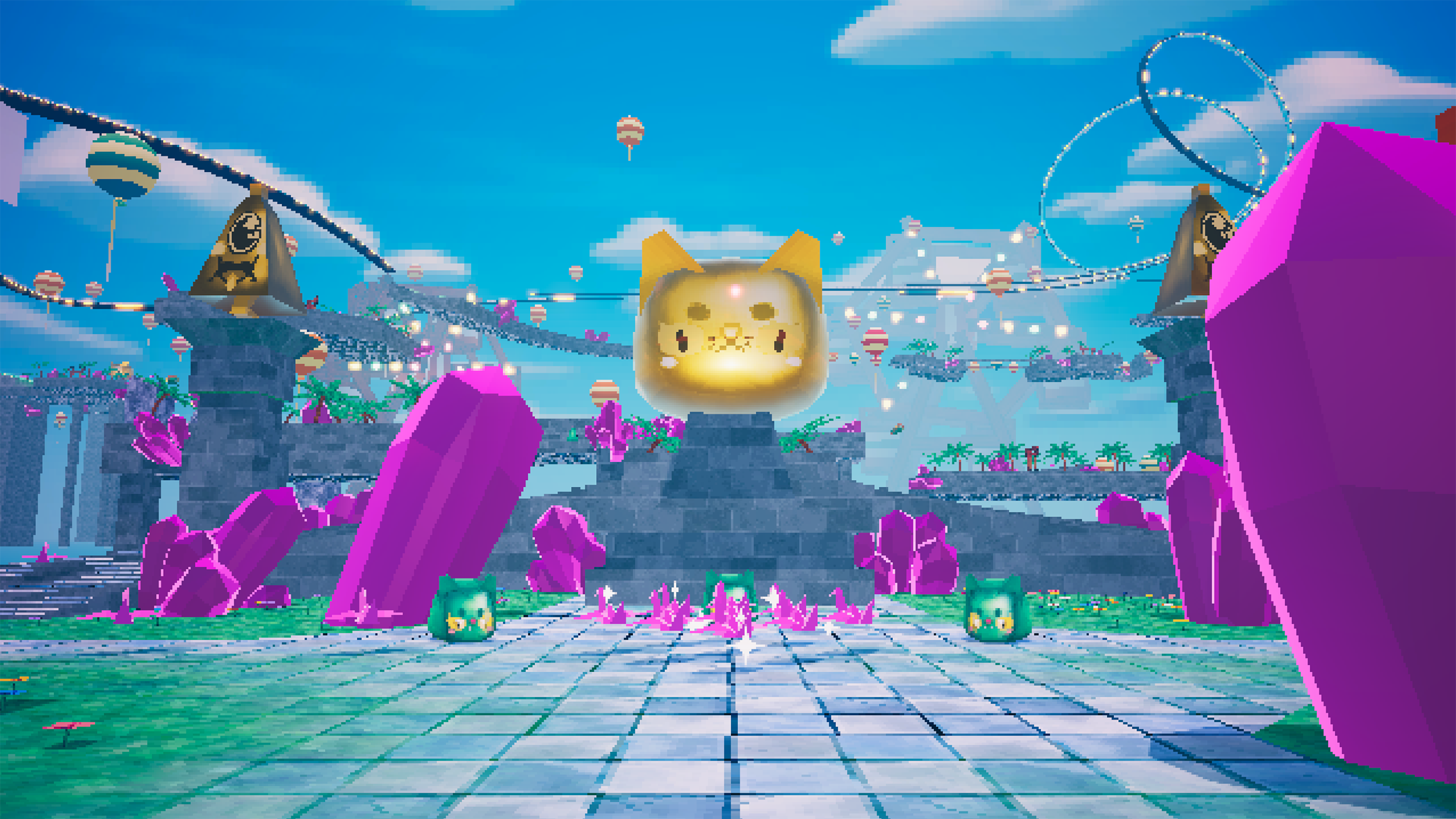
Lunistice is a fun platformer that waves the flag for nineties retro-styling; it stays comfortably in its lane just long enough to wring all of the possible enjoyment out of a simple formula before it can become repetitive. With intentionally blocky visuals but surprisingly crisp controls, Lunistice is an enjoyable experience that doesn’t set out to do too much, and in doing so achieves an awful lot. Despite some issues with depth perception, I had a good time with Lunistice while it lasted, and perfectionists and speedrunners will get more from this Sonic Adventure 2 X Sega Saturn-inspired runner than perhaps they expected.
The Van Game
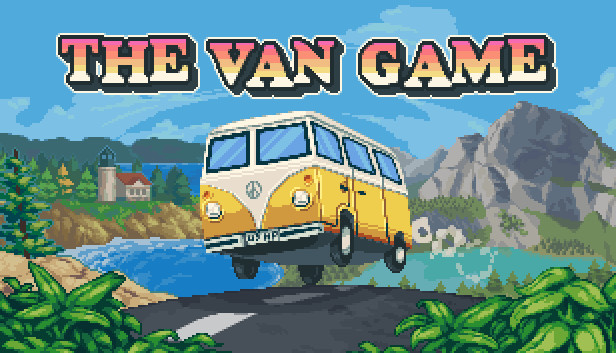
| Key Info | |
| Platform | PC – https://store.steampowered.com/app/2081860/The_Van_Game/ |
| Developer | Bruce Belk |
| Publisher | Bruce Belk |
| Positives | + Throwback resource management sim +Mini-games to break up the menus + Scooby Doo-inspired characters! |
| Negatives | – Simple to learn, simple to beat – Roster of mini-games too small – Characters inconsequential |
| Price | £4.29 |
| Played by | Drew Sherratt |
The Van Game by solo developer, Bruce Belk, is a resource management strategy game with a rather charming premise – five friends gather together one summer and decide to take a roadtrip around all of the national parks in the US. Along the way you have to help manage their fuel and food consumption, their first aid and engine repair supplies, all the while managing their moods as the friends begin to grate on one another in the confined space of the van.
As your tour rolls on, you have to choose what order you’ll navigate the parks in, and overcome some (often rather silly) random events to ensure that your trip goes smoothly. (My personal favourite is the same two friends seemingly arguing every other day about whether a hotdog is a sandwich, as it absolutely reminds me of my own neverending arguments with my idiotic friendship group!)
You’ll stop at various cities along the way, where you can buy or trade for replacement goods, or simply wile away the hours resting. There’s also the opportunity to gain extra cash to make the journey more comfortable by completing tasks, which take the form of randomly rotating mini-games. Whether it’s driving up a mountain and dodging obstacles, performing percussive maintenance on people’s engines or using a giant magnet to scoop up a gaggle of collectables, the mini-games are simple but amusing, and help to break up the menu navigation. You can also modify your van with new paint jobs and decals if you wish, but as a purely cosmetic option, I never really felt the need.
Sadly, it’s all a little on the simple side, and my road trip was never in jeopardy – I sailed around the US in about two and a half hours, keeping my van in good nick and all of my friends in a cheery mood the whole time. The mini-games too, while a welcome change of pace, quickly become repetitive, since there are only 5-6 to choose from. And while you can have some fun choosing the various characters to join you on your journey (and even choose from a selection of Hanna-Barbera-inspired van-dwelling sleuths!), who you choose doesn’t have any impact on the gameplay, which feels like an oversight as some fractious personalities or individual needs might have added some much needed complexity.
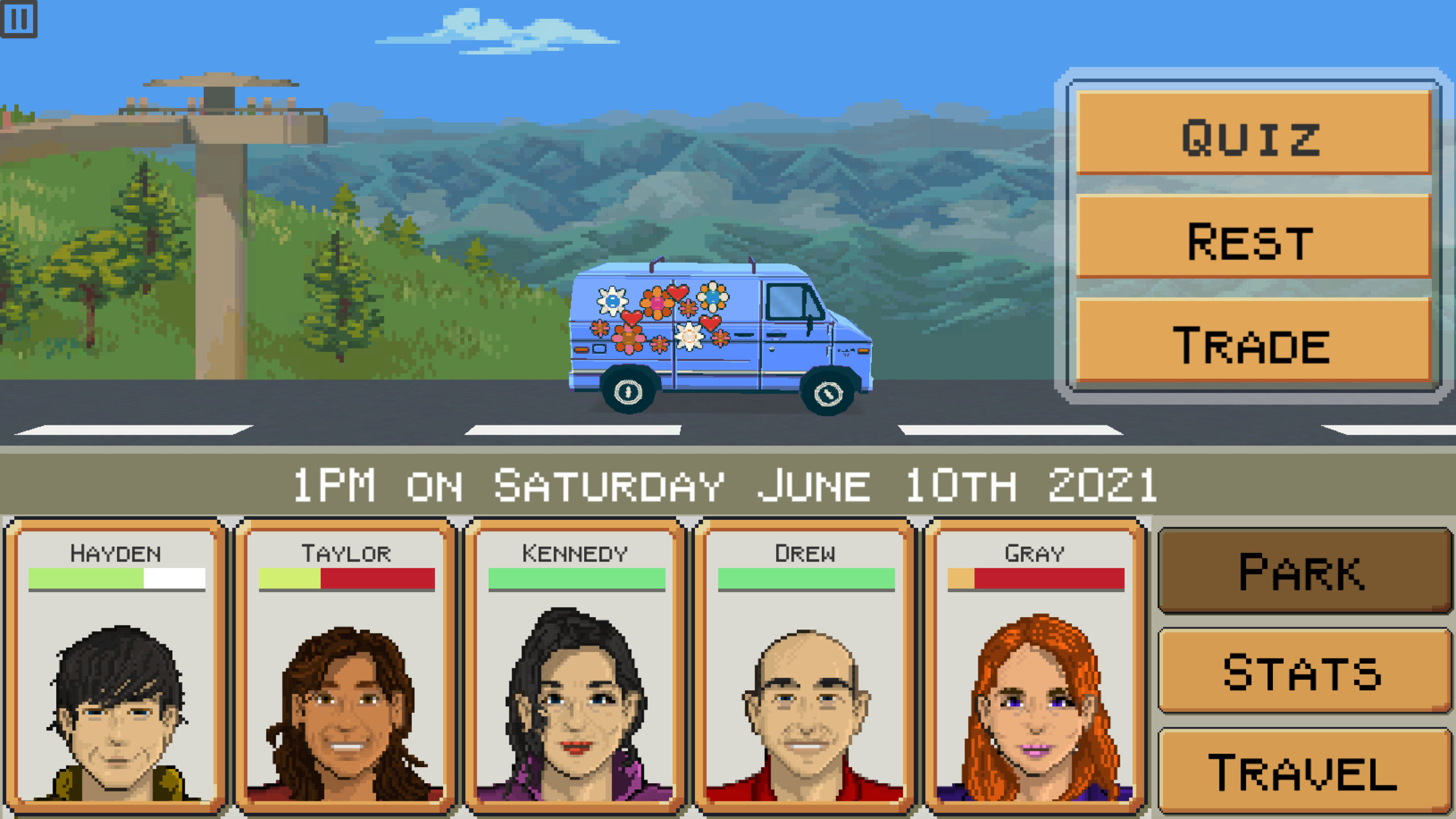
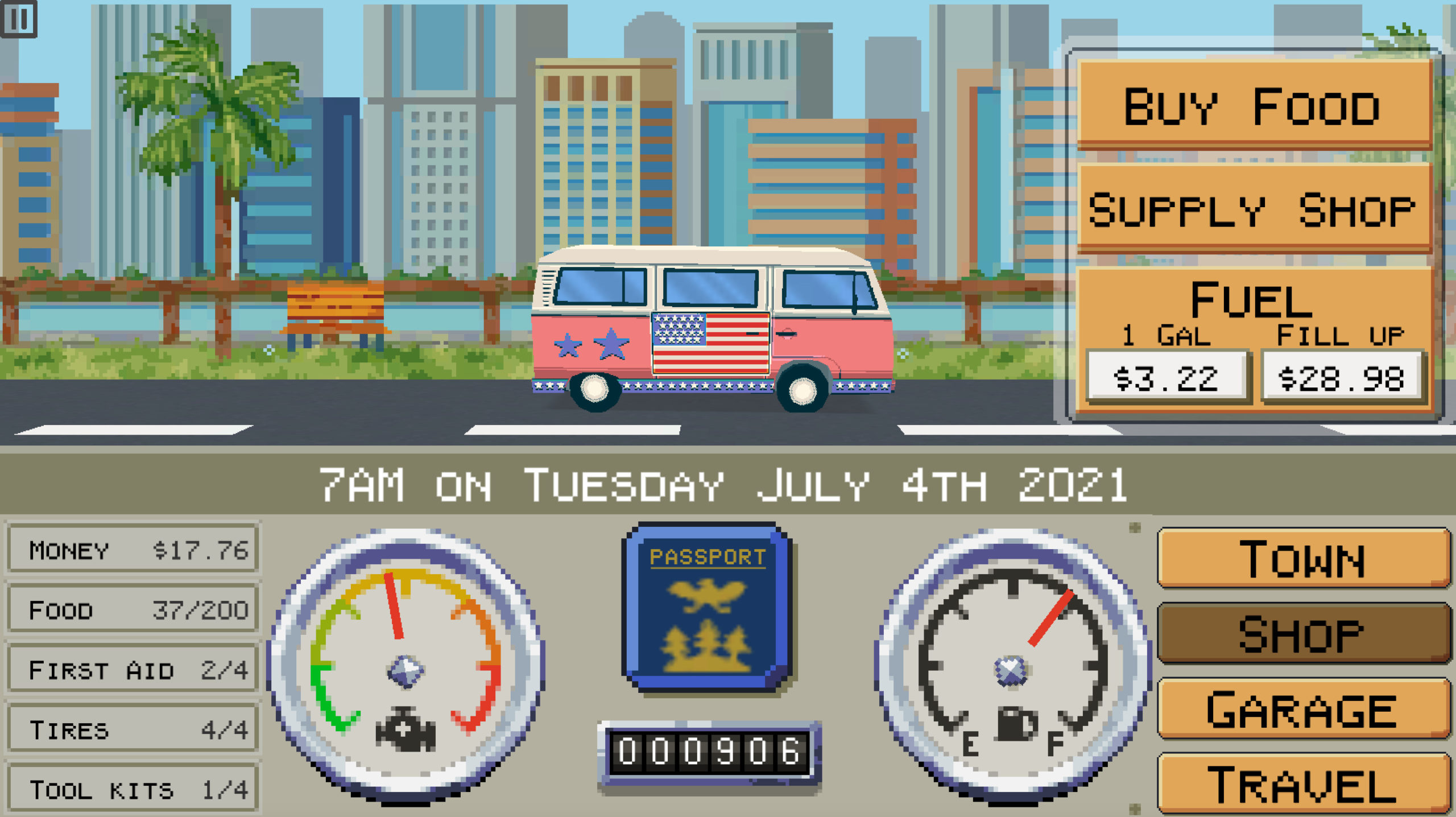

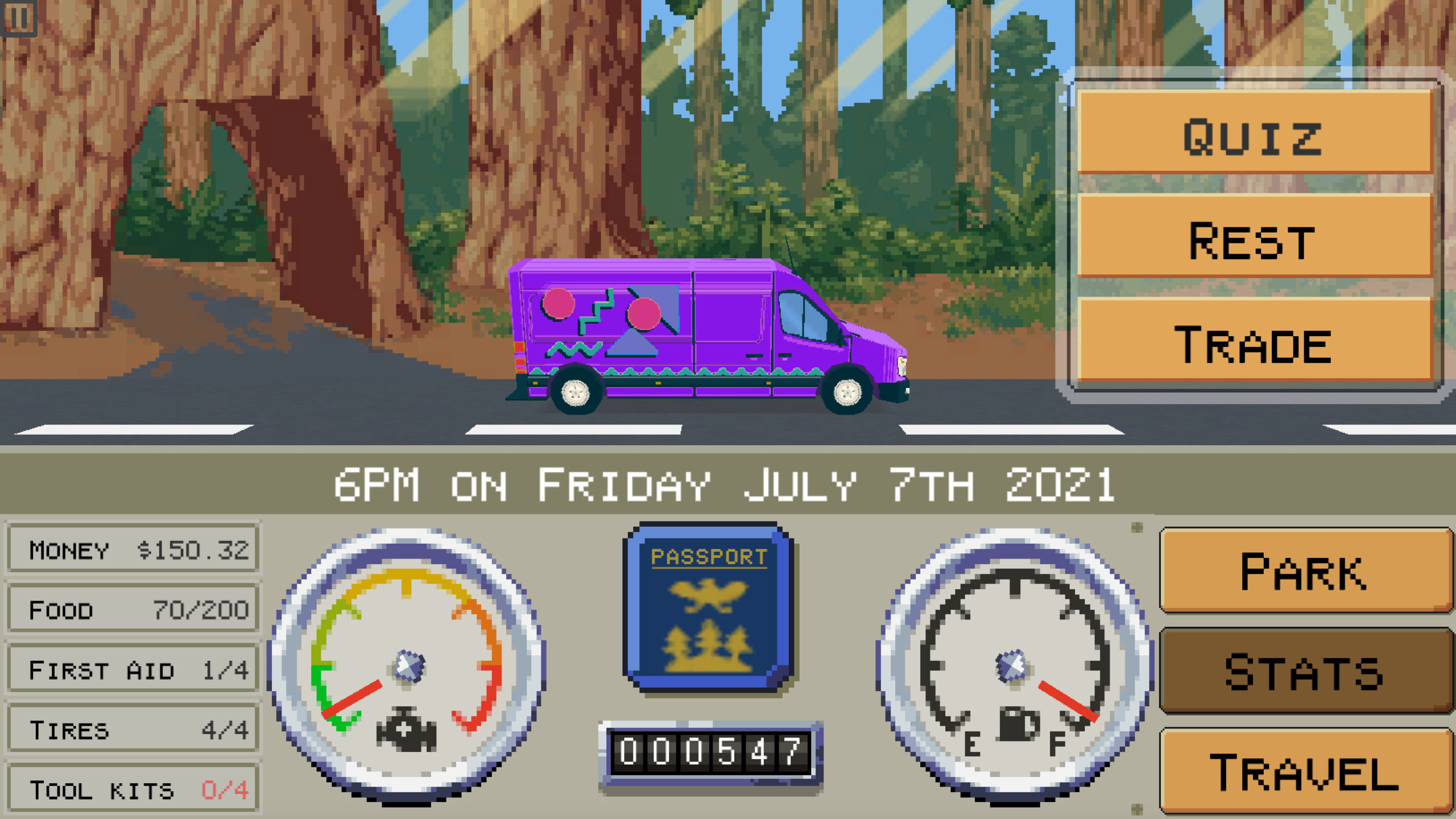

The Van Game leans heavily on the simple resource management simulators of days gone by, and adds some playful graphics and silly mini-games to help break up all of the menu navigation. The concept is undoubtedly niche, and with limited gameplay and a rather repetitive roster of mini-games, The Van Game might never explode into a smash hit, but it will garner a few fans from traditionalists who want a simple, laidback experience. Easily expandable with more events and layers of complexity, Bruce Belk will have the opportunity to make bigger and more engaging simulators as his development journey continues.
Bot Gaiden
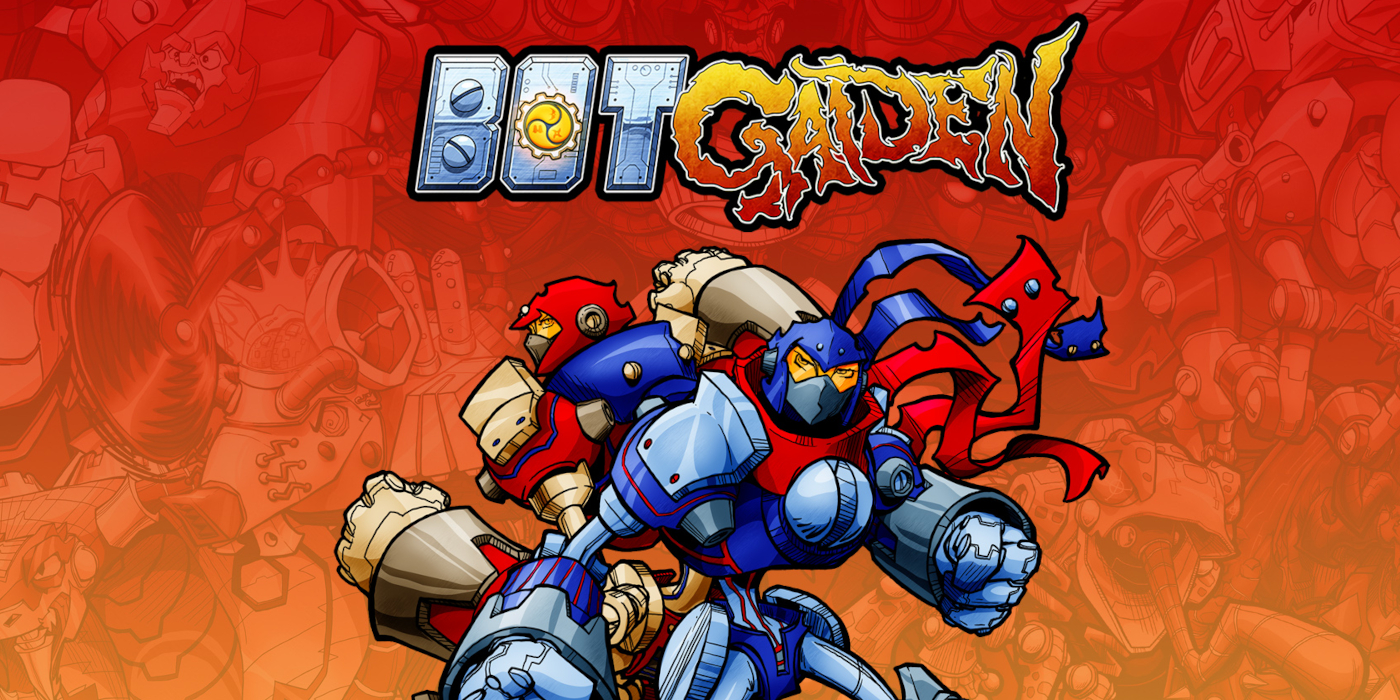
| Key Info | |
| Platform | PS5, PS4, Switch, Xbox Series X|S, Xbox One PC – (Steam page) |
| Developer | SwordSwipe Studios |
| Publisher | eastasiasoft |
| Positives | + Action packed 2D side scroller + Simple controls + Interesting boss set up |
| Negatives | – Too short – Bosses are bullet sponges – Lack of replayability |
| Price | £11.39 |
| Played by | Joe Whitfield |
Bot Gaiden from SwordSwipe Studios, is a side-scrolling hack-and-slash that pits two ninja robots, Robyu and Bytron against the evil Giorqio, who has managed to snag a number of power skulls to cause devastation across six areas of the planet. It’s safe to say, the story is a Megaman-lite level of storytelling, its purpose is to cast a thin fabric of a plot so that players can experience the action.
Quickly moving on to the gameplay, Bot Gaiden actually plays a lot like Megaman titles of old too; the game’s six worlds are spread out on the main screen and are accessible in any order you so wish. Once selected, the action takes place on a 2D plane that is based on the usual video game tropes, a forest area that is full of murderous monkeys, an ice level that houses powerful sabretooth tigers etc. etc. – the list goes on. You simply have to navigate from left to right (sometimes right to left), and make it to the end of the level before facing off against the area’s big bad boss. On paper, Bot Gaiden seems like a short run and gun, but SwordSwipe have made the simple sounding title somewhat fun in its execution.
The levels are notoriously difficult at first; enemies take a couple of hits to cut through and the sheer number of baddies trying to stop your progress quickly becomes overwhelming. Bosses too are bullet sponges whose oversized attacks require pinpoint timing to dodge, and certainly test even seasoned Cuphead aficionados. It might sound like Bot Gaiden is as tough as nails but utilising speed will help enormously. The boss’s health and end of level rewards are directly related to the time spent on the level – the more quickly you reach the end of the level, the fewer hit points the boss will have and the better the upgrades you’ll get for the final showdown.
I did find this approach fun as it made me push for a faster time and rewarded me with an easier final battle, and learning enemy patterns and utilising the various power ups that litter each level is key to having a fun time, though this is also Bot Gaiden’s downside. The levels may seem lengthy at first glance but after a few attempts at each level, I was able to blitz through the entire game in around two hours.
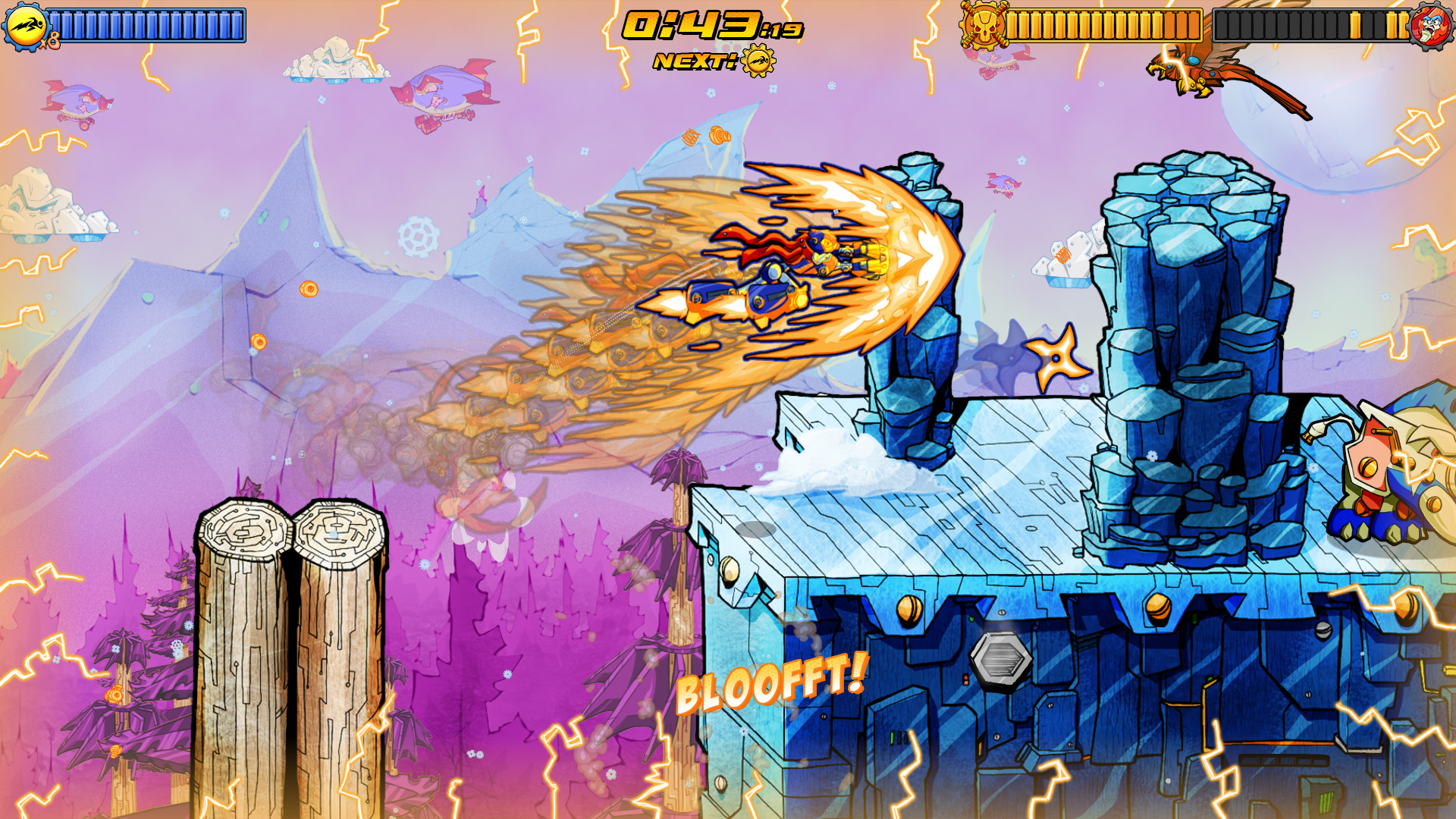
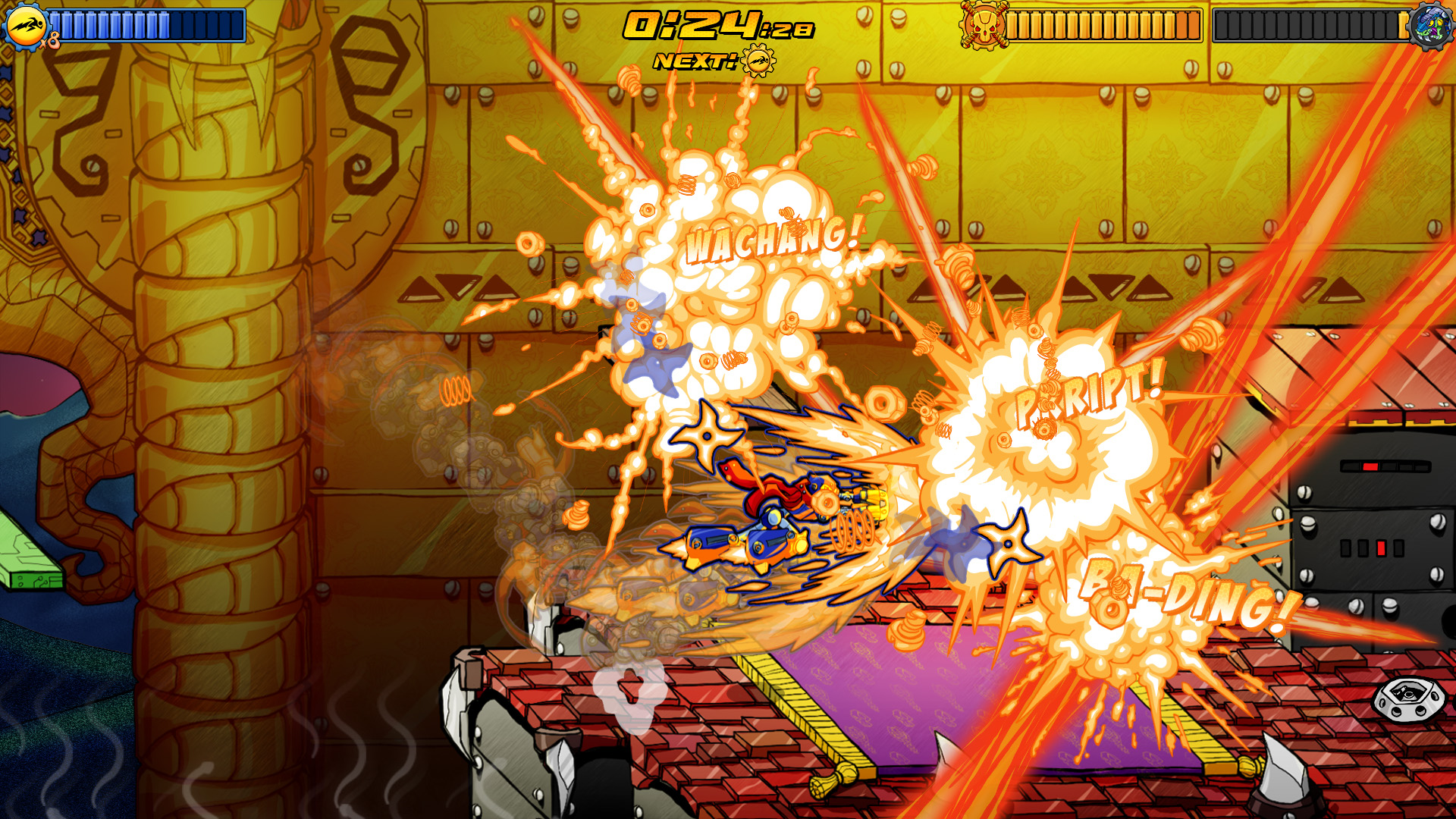
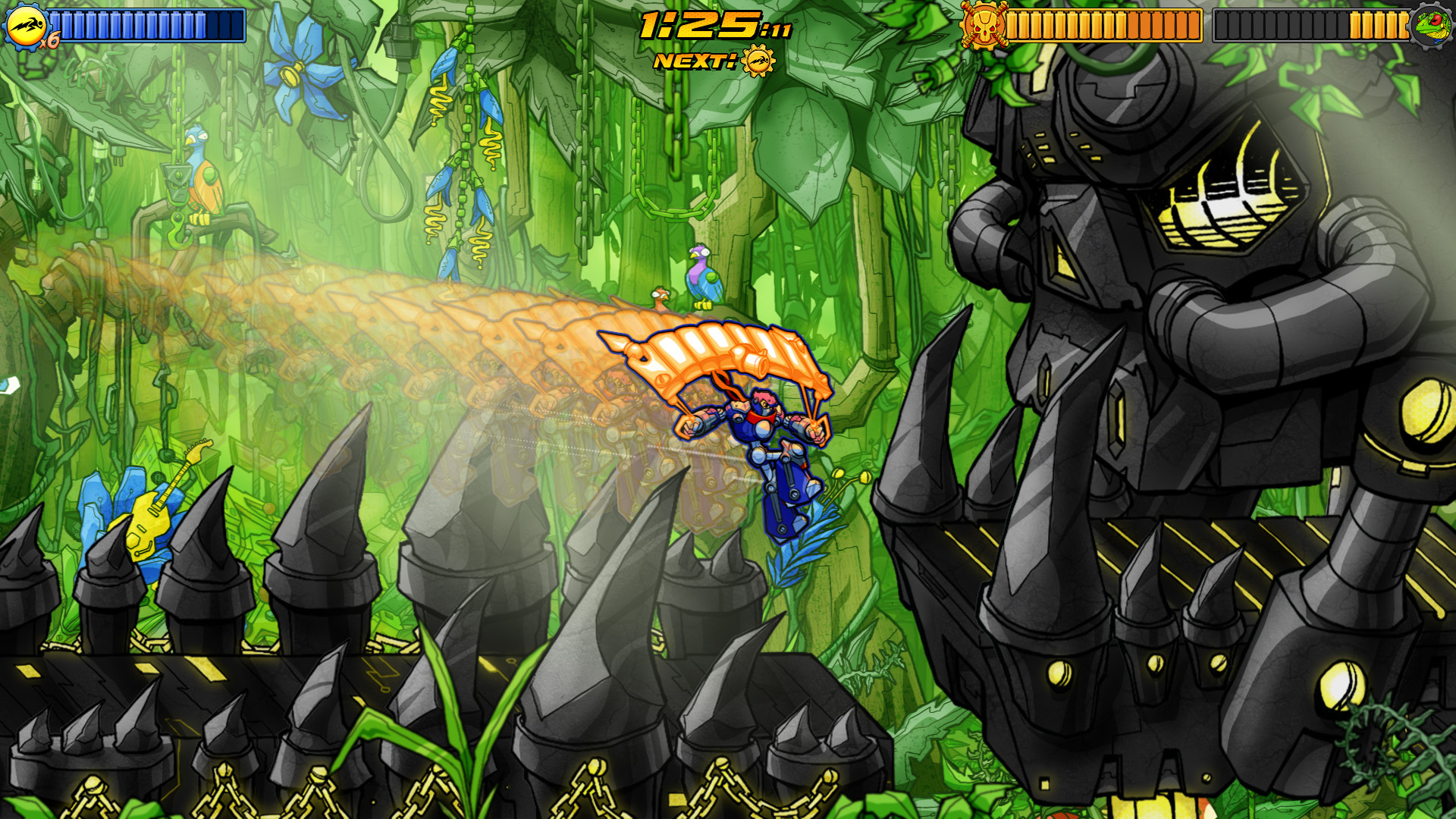
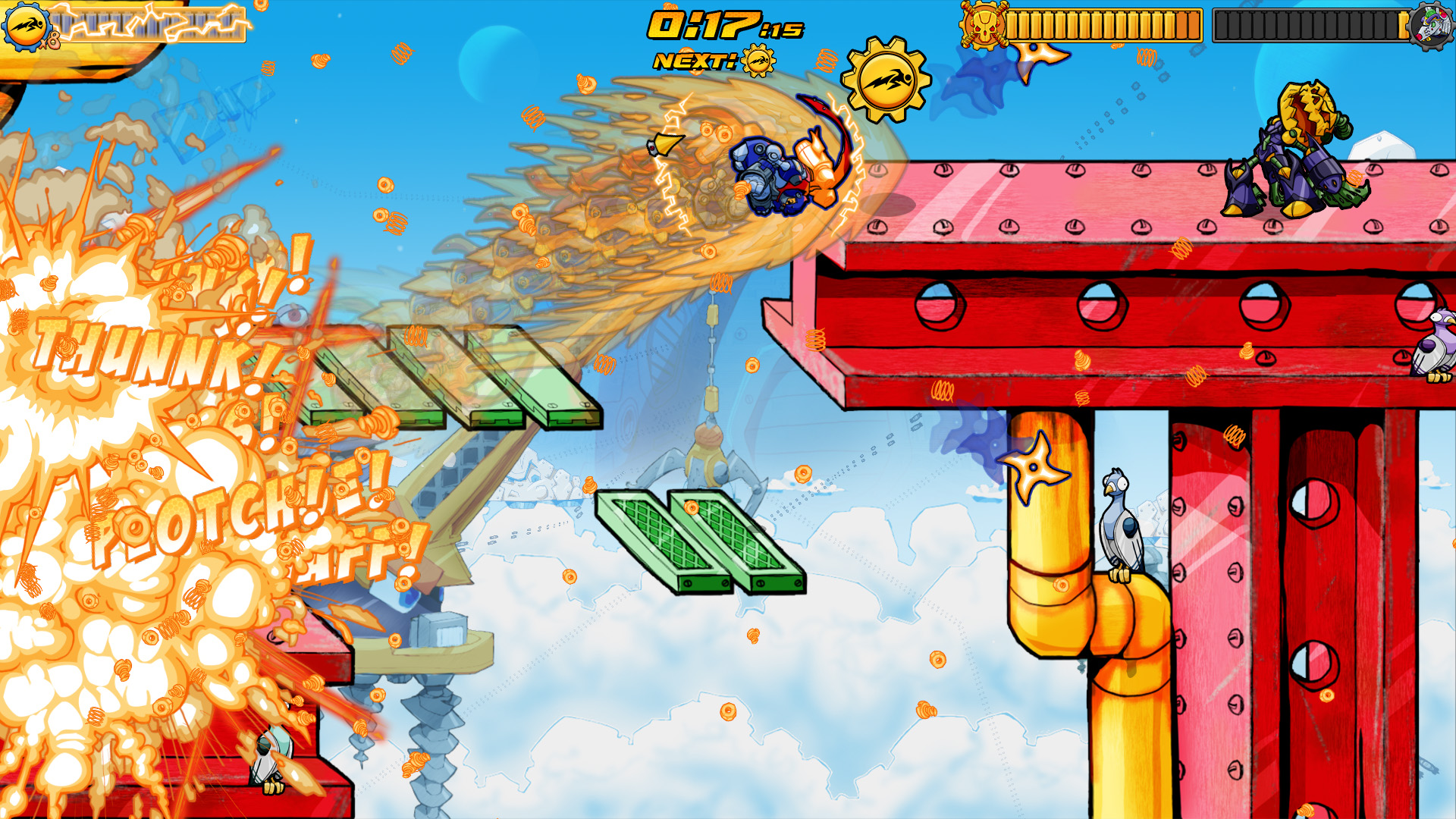
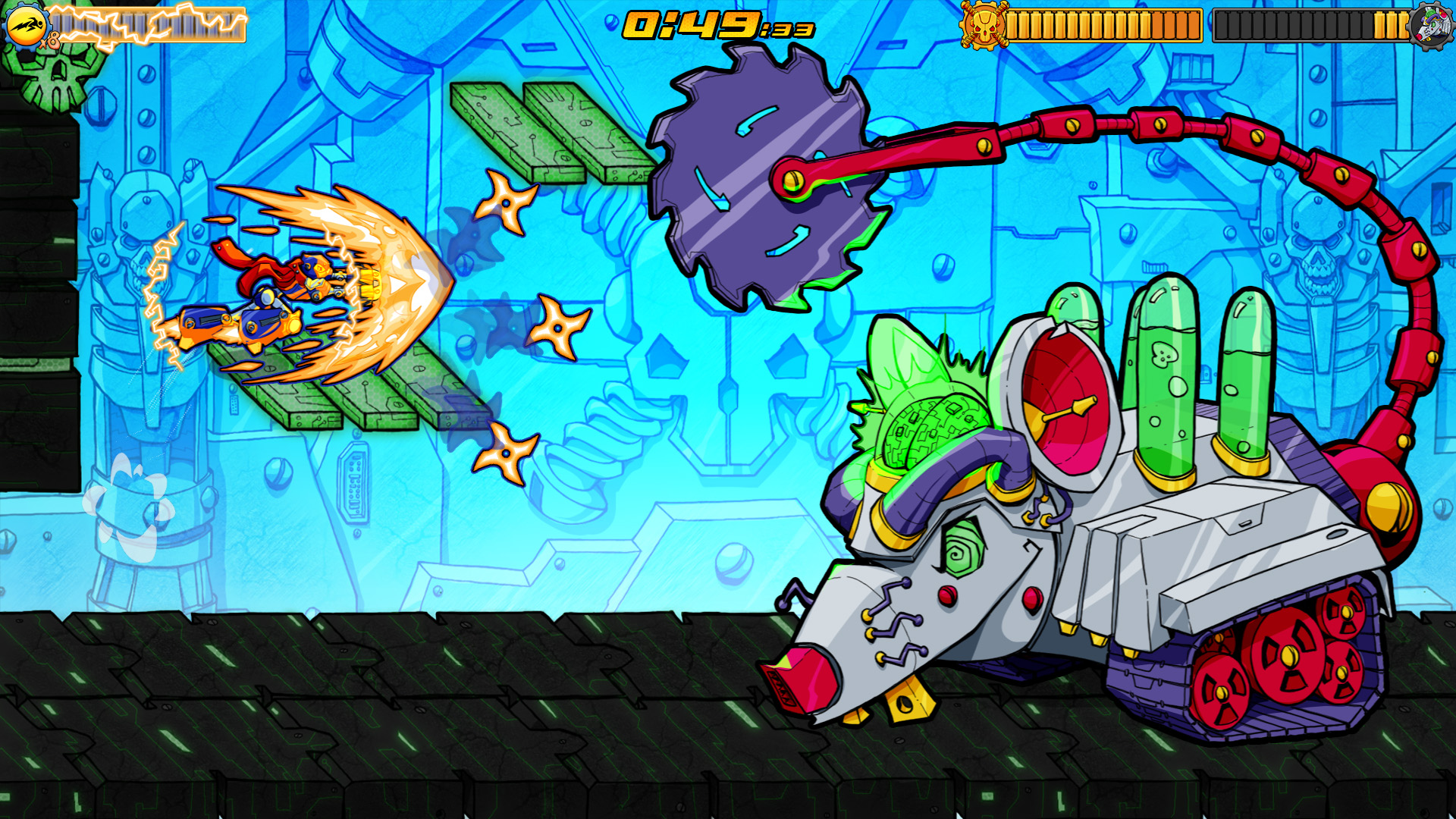
I’ll be honest, I was half expecting Bot Gaiden to be another eastasiasoft special; a short game that acts as fodder for trophy hunters, and while I was half right, I was pleasantly surprised that the sparkly platinum isn’t given up so easily. Bot Gaiden is a frustrating yet fun time and aside from the brutal boss fights, it’s tough in all the right places and makes the player work for progress. The trouble is once you’ve cracked the enemy patterns, the game’s challenge does fall away somewhat and can be beaten within a few hours. It does offer some replayability – SwordSwipe encourages the co-op mode to teach younger gamers how to play these types of games, giving the title some more value, but for solo players there’s nothing else after you’ve rolled the credits.
Rock ‘n’ Roll Will Never Die

| Key Info | |
| Platform | PC – Steam Page |
| Developer | Valtteri Tavast |
| Publisher | Instant Million |
| Positives | + The settings let you change the text speed on screen + Err… |
| Negatives | – Awful frame rate – Tired and dated attempts at humour – Unappealing and uninteresting plot |
| Price | £13.99 |
| Played by | Gaz Jones |
After being pitched the idea of a point and click adventure centred around the theme of rock and roll, it sounded like I was in for a bit of fun and some great backing tracks to my adventure.
Oh, how wrong I was.
The game runs at a snail’s pace, with the frame rate being so bad that you feel like swimming the Atlantic through treacle would take less time. Graphically speaking, the game looks like something dragged straight off of 2008 newgrounds; the models are very simplistic 2D drawings with little to no animation, they simply trudge across the screen like a storyboard for an alternate universe Peppa Pig, it’s all a bit of a mess.
Speaking of messes, the opening scenario sets up the tone for the rest of the game as you find yourself in the men’s room of a grimy bar with the first objective requiring you to block the toilet (gross), and the drug-fueled trip spirals onwards from there. Much like the dingy bar, Rock ‘n’ Roll Will Never Die is filled with grimy jokes and dreary dialogue with no voice acting, and a very short, annoying, grungy guitar track played on a loop over and over in the background.
Sadly, I found myself wanting to do almost anything else but play the game. After playing for a couple of hours I managed to get the band back together, only to find that the apartment we want to practise in is flooded with sewer water – which, of course, I had to unblock by swimming down through it… This is about the point when I called it quits; it had become clear that there was nothing more that I was going to get than another 10-15 hours of unfunny/poorly written toilet humour and slow gameplay.
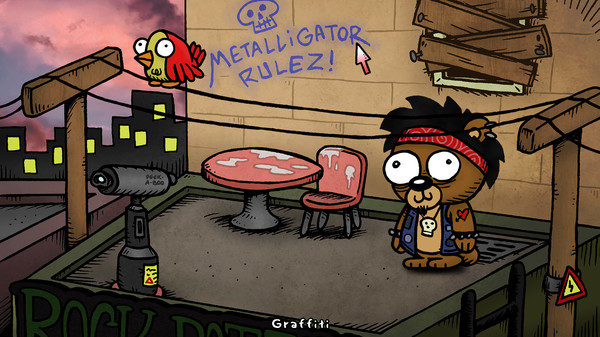
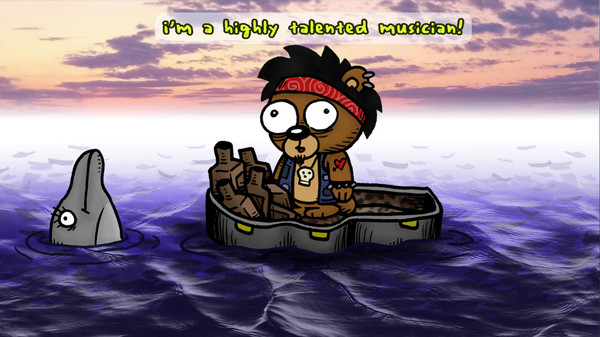
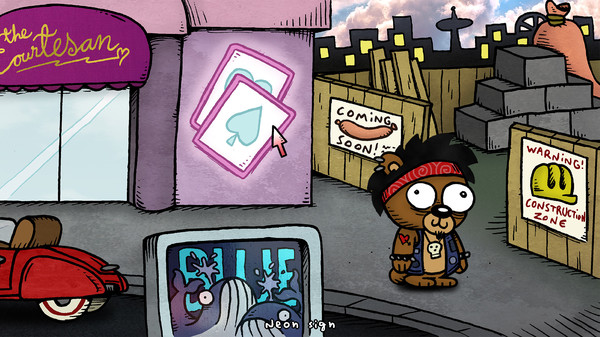
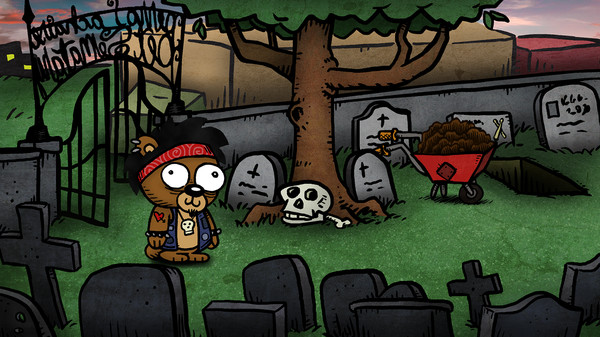
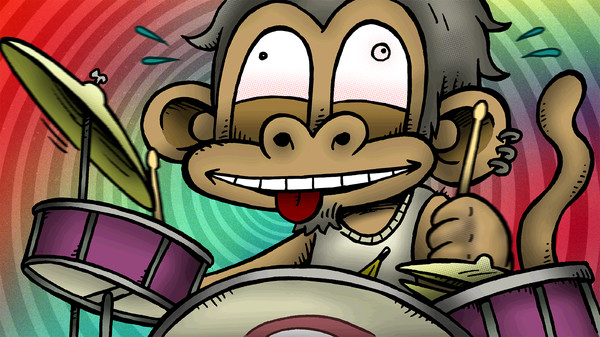
My verdict? Rock ‘n’ Roll Will Never Die is a good example of what not to do when creating a point and click adventure. With frame rate seemingly in the single digits, incredibly slow gameplay and overflowing with crappy humour (in every sense of the word), there is very little to enjoy here. At £13.99, I certainly can’t recommend Rock ‘n’ Roll Will Never Die… perhaps spend that money on a rock ‘n’ roll record instead.
VGamingIndies: Vol 5


We don’t need to tell you that a lot of video games are being released every week and a lot of games simply go under the radar. Indie games in particular are often developed by small teams, usually without a billion-dollar corporation behind them and they don’t have a chance to shine.
VGamingIndies gives us a chance to talk about some of those smaller titles that we’ve played recently. We’re not scoring these games like we would if it was a ‘full review’. An arbitrary number isn’t always the best approach, especially with Indie games. Instead, we’re just laying out what we liked, what we thought didn’t work so well and leaving the choice up to you.
Vol 5 is all about a cat that’s out for murder and a game we can’t believe hasn’t been made already! Click the buttons to jump to the game or carry on reading.
She Wants Me Dead
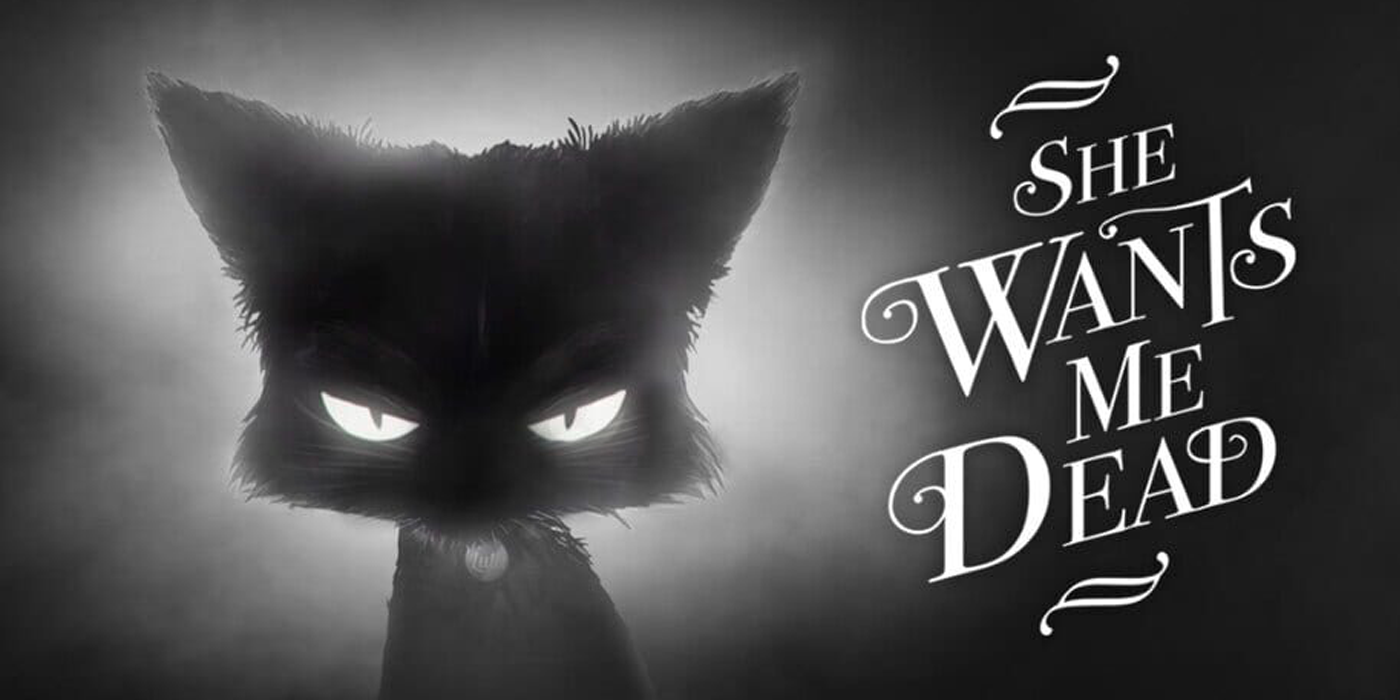
| Key Info | |
| Platform | Nintendo Switch, PS4, Android, iOS, PC Steam Link: https://store.steampowered.com/app/468310/She_Wants_Me_Dead/ |
| Developer | Hello There Games |
| Publisher | Red Deer Games |
| Positives | + Super groovy theme + Challenging level design +Collectables to add (slightly more) longevity |
| Negatives | – Incredibly short – No audio cues makes timing difficult – Incredibly short |
| Price | £5.79 |
| Played by | Drew Sherratt |
I am a self-confessed lover of platform games – precision platform games, to be exact. I worship at the altar of Celeste and Super Meat Boy, so when Red Deer Games pumped out word of their newest release, She Wants Me Dead, I was all over it like a rash! It tells the tale of poor Max, a simple man who catches the ire of his psychotic cat, Lula, by accidentally nudging her out of bed, amongst other such trivial ‘crimes’.
First things first, the all-in-one main theme/level music/trailer song absolutely slaps. It’s super catchy and has a distinct groove that makes it one of my favourite pieces of gaming music this year; impressively, Hello There Games have managed to maintain its effectiveness by diluting the song (stripping out the vocals and then various other layers) the more you die, keeping it from getting overly repetitive. If the game were longer then it would need more meat on the audio-bone, but it works well for a title lasting only an hour for a first playthrough.
You’re charged with steering Max through ten levels strewn with whirring death blades, fireballs, axes and live electrical cables as Lula attempts to exact her revenge. You have five lives to get Max from one end of the level to the other, but you’ll get a couple of those refreshed as you pass through the various checkpoints. You’ll need plenty of lives too, because you’re likely to die a lot. Adding to the difficulty is the lack of audio cues for many of the obstacles which makes judging the timing particularly more difficult than I had imagined.
You’re rewarded with coins for overcoming each level which can be spent on various collectables that you can customise Max with; from new clothing to custom gravestones and respawn points, there’s a tonne of stuff to collect. Victory in each level also offers you a daft photograph of Lula, inspired by the millions of shameful photos we take of our pets every day – I found them all hilarious and thought they made a wonderful reward for beating a level. You’ll also earn a golden version of each picture if you complete a whole level without dying, which is much harder than it sounds!
Speed-runners will have a blast with this one, and She Wants Me Dead’s dedicated Time Attack mode will bring plenty of them to the door, I’m sure.
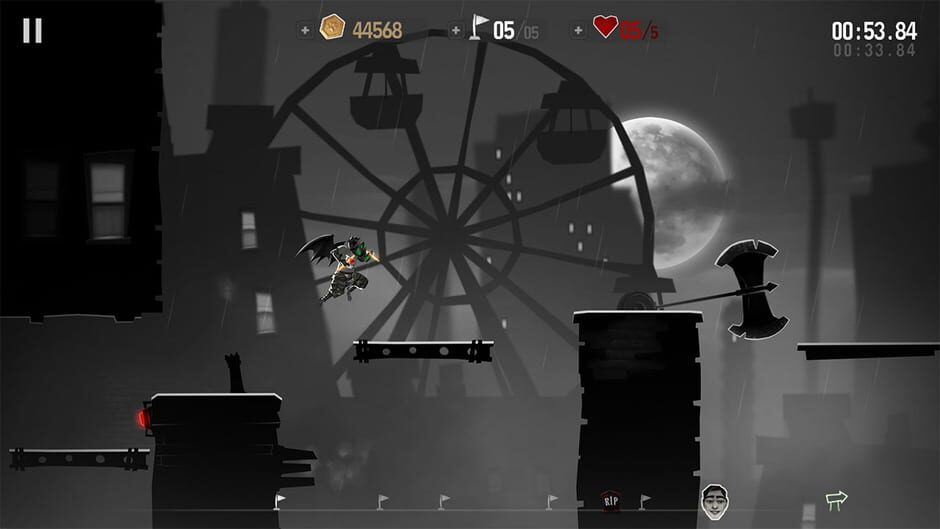


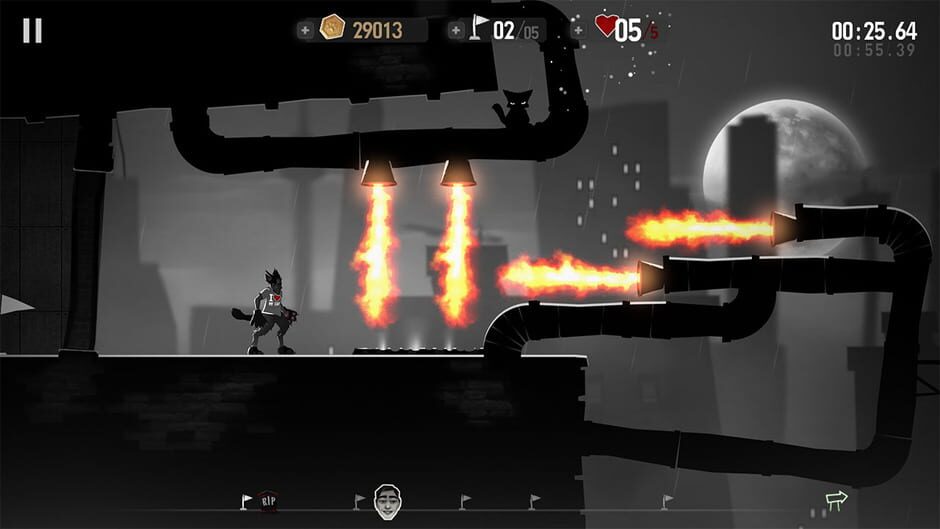
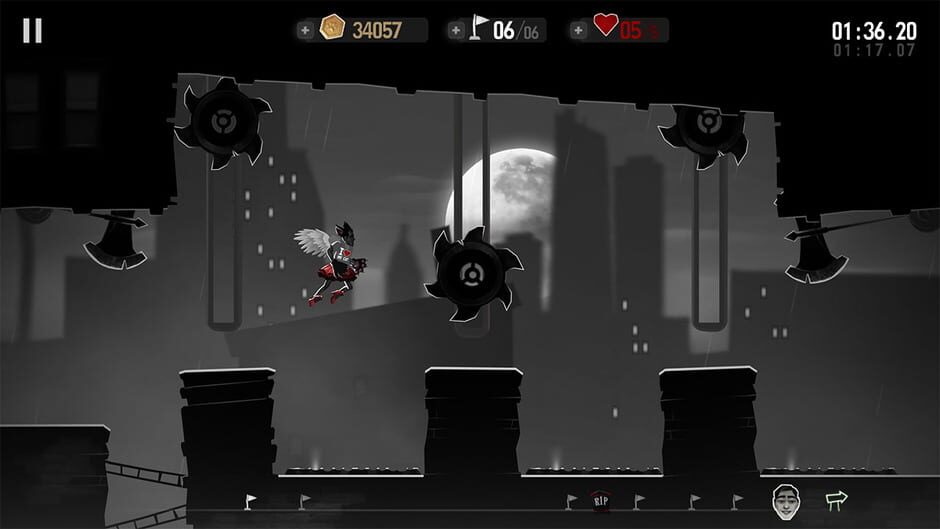
She Wants Me Dead is a concentrated precision platform experience that doesn’t take itself too seriously and wins as a result. My dash through the game was a fun-filled and blood-soaked affair, and despite taking me just an hour, chasing perfection will pose a significantly sterner challenge for those crazy enough to give it a try! With some genuinely tricky patches, the makings of a great soundtrack and swathes of collectable options, this is a game that could (and should!) easily be built upon into a much fuller experience.
Save Room
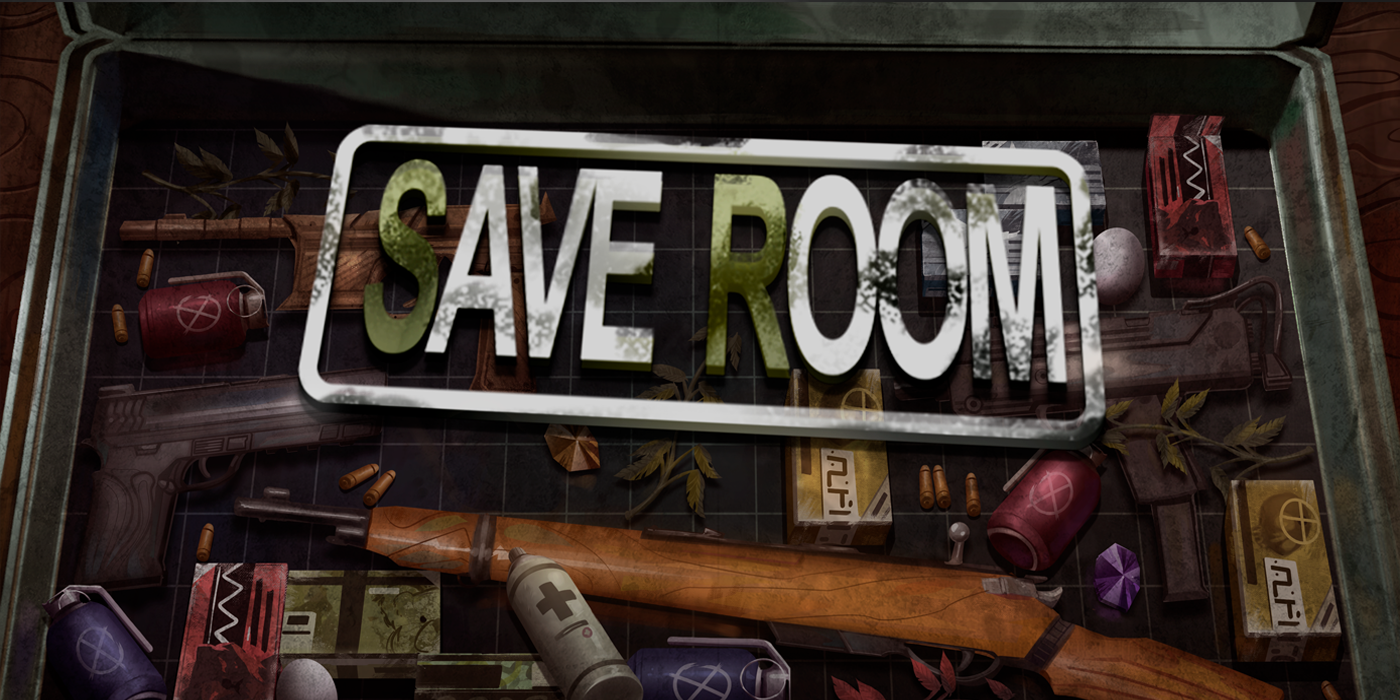
| Key Info | |
| Platform | Nintendo Switch, PS4, PS5, Xbox One, Xbox Series X|S, PC Steam Link: https://store.steampowered.com/app/1955330/Save_Room__Organization_Puzzle/ |
| Developer | Fractal Projects |
| Publisher | Fractal Projects |
| Positives | + Nails the survival horror styling + Super simple to understand + Clever take on an ancient format |
| Negatives | – No touch controls – Limited variation once you learn the tricks – Misses opportunities thematically |
| Price | £4.99 |
| Played by | Drew Sherratt |
Inventory management in games might be the bane of every player’s existence, but as a lover of all things survival horror, I fell in love with Save Room the minute I laid eyes on it. The concept is incredibly simple – fit all of the items given to you into the randomly shaped inventory you’re provided in order to continue, then rinse and repeat times forty levels.
What is, at its core, a simple ‘fit the shapes into the box’ puzzle game, Save Room manages to make this toddler’s game format fun by absolutely nailing the survival horror styling. You’re given weapons of various sizes -from pistols to rocket launchers- to fit into your inventory, along with ammunition and other Resident Evil staples like medicinal herbs.
There’s a few tricks to managing your load that will come naturally to survival horror veterans, but they still make for a fun time when you see them employed in a stand-alone game. Whether it’s combining herbs or stacking ammo, you’ll need every trick in the book to reach the end, though it won’t take you an especially long time, such is the simplicity of the gameplay. (I finished all 40 levels in under two hours, which included only a couple of head-scratching moments).
A noticeable oversight for the Nintendo Switch version would seem to be the lack of touch controls in handheld mode, the implementation of which would surely open up Save Room to the mobile market down the line. Additionally, only being able to rotate items with the ‘R’ button, and not being able to use ‘L’ to go the other way, seems rather silly too.
While I appreciate that Save Room was always designed to be a simple affair, I feel like it could, thematically, be so much more. With the introduction of simple scenarios, where a small script talks the player through the route they have to take, what enemies they might encounter and even what puzzle items they need to take with them, a ranking system could be introduced that could add a layer of complexity and replayability far beyond what is currently offered. I’m not griping, because what we’re offered is strangely enjoyable, but I do find myself lamenting the missed opportunity at something more grand.
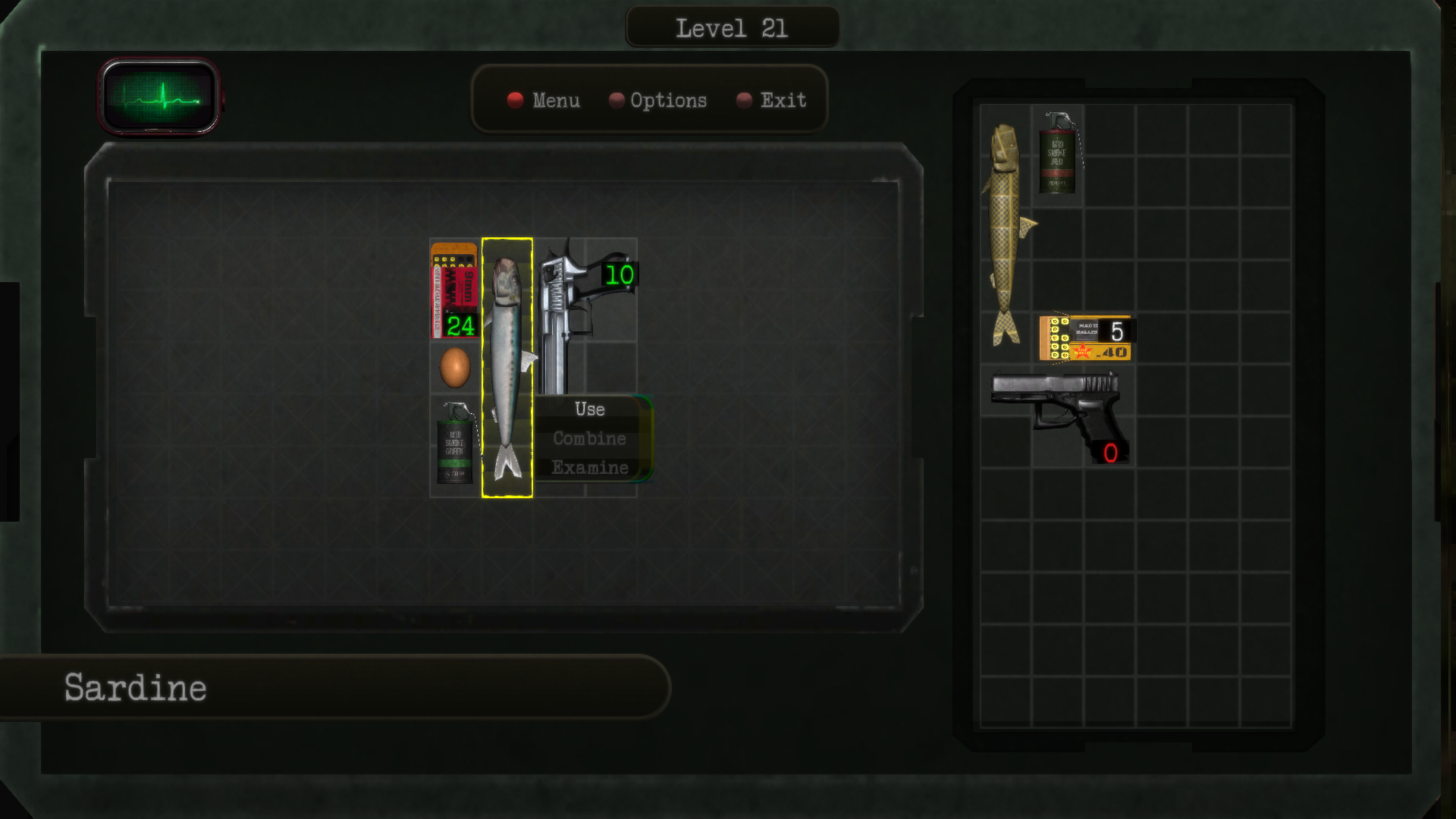
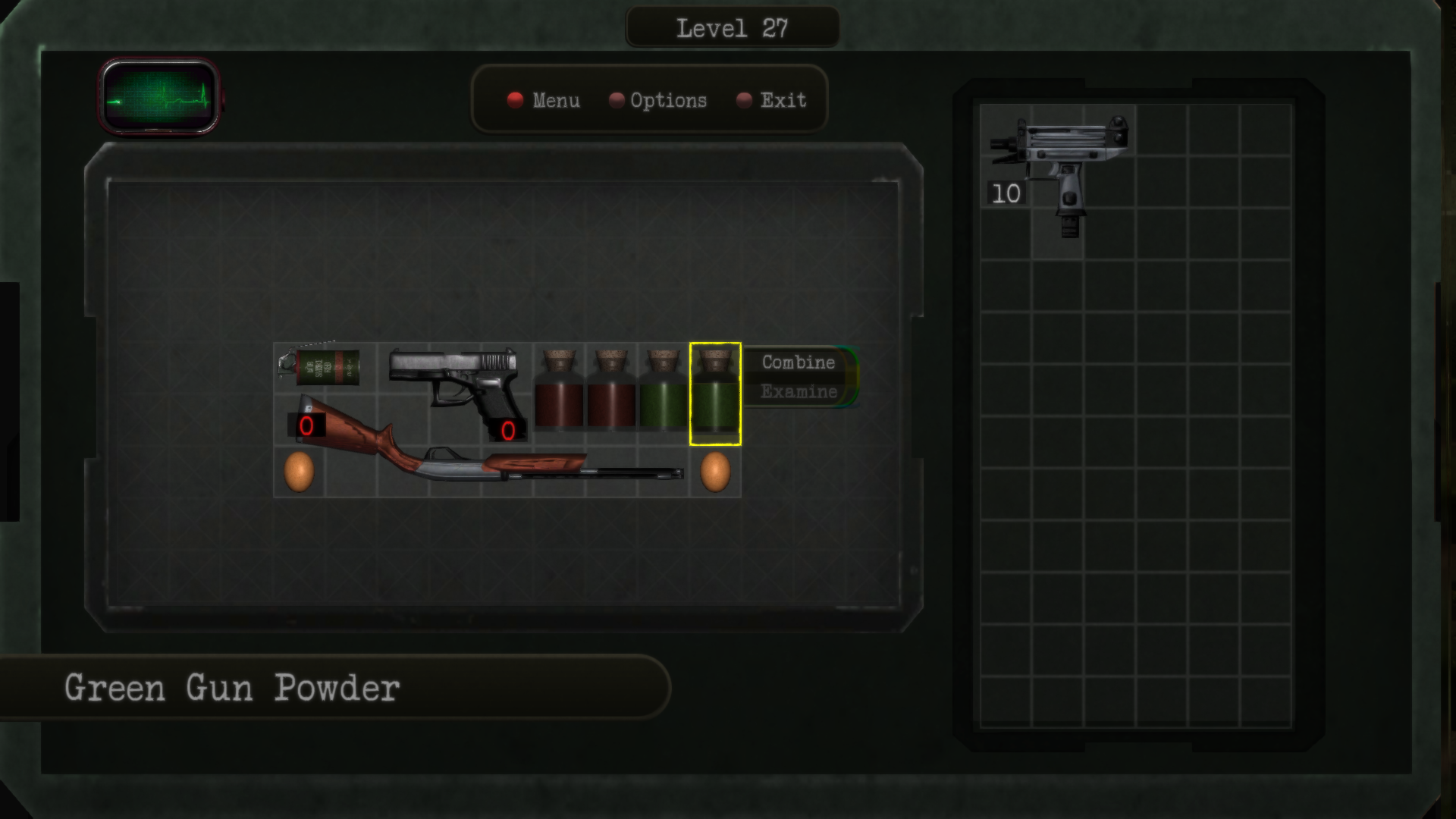
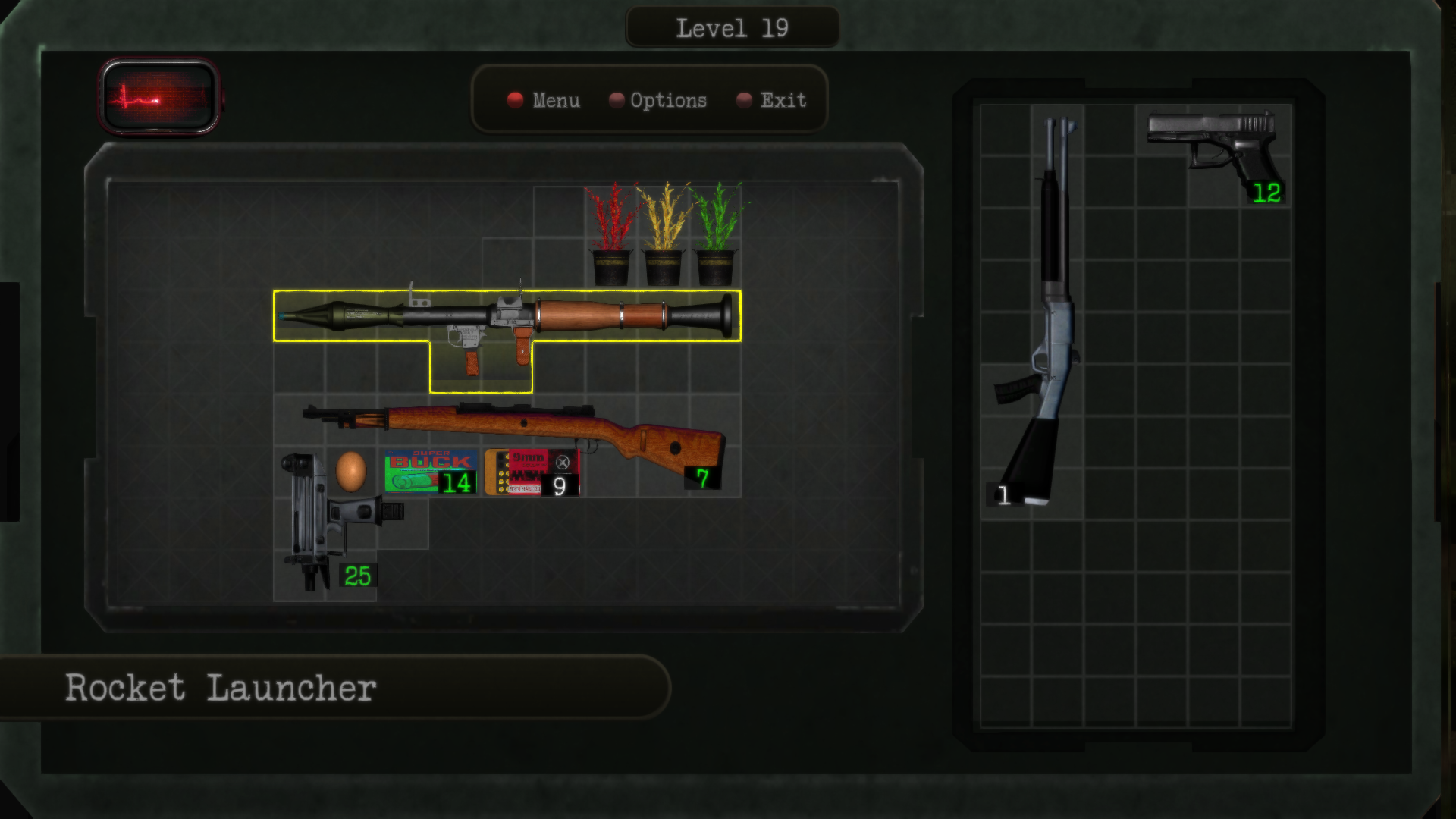

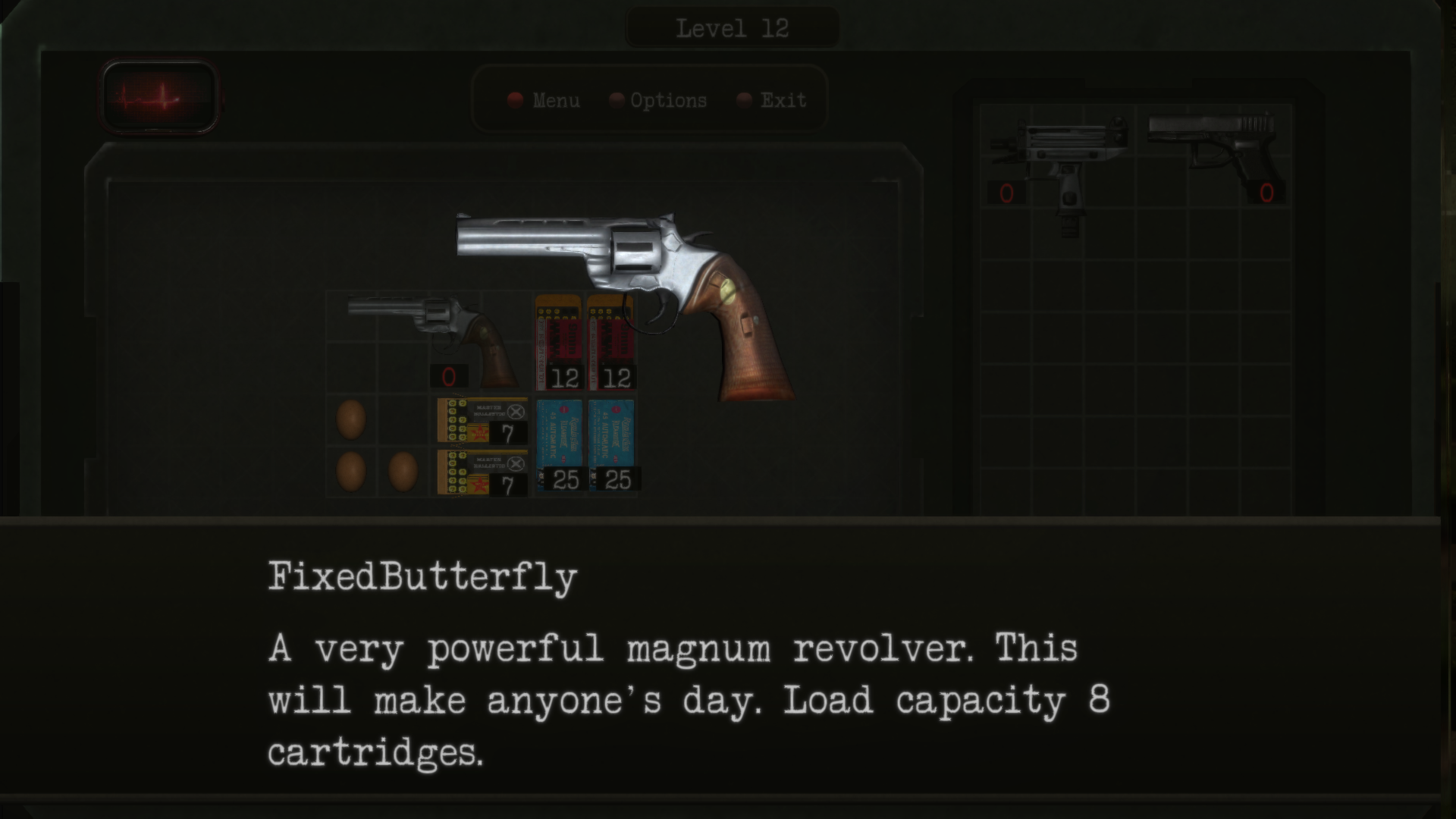
Save Room cleverly takes one of the oldest games in existence and makes it relevant as a stand-alone idea again, albeit only briefly. While the actual inventory management in a survival horror game is a massive pain in the backside, Save Room capitalises on the satisfaction you feel when you finally squeeze in everything you need and it’s legitimately good fun while it lasts. Fractal Projects nail the theme by adding in some ammo-management and health tricks that we’ve all used over the years, but perhaps missed the opportunity to use scenarios to add some depth (or even plot) to the otherwise simple gameplay.
VGamingIndies: Vol 4
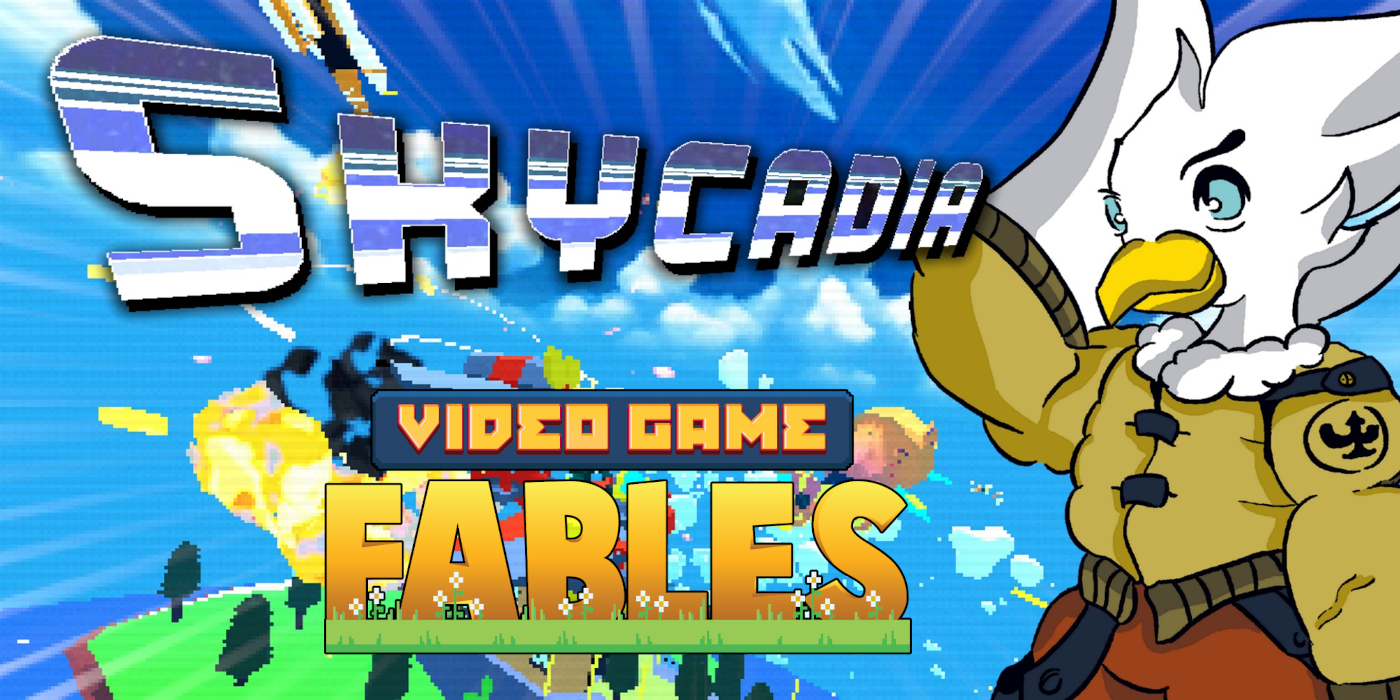

We don’t need to tell you that there are a lot of video games being released every week and a lot of games simply go under the radar. Indie games in particular are often developed by small teams, usually without a billion dollar corporation behind them and they don’t have a chance to shine.
VGamingIndies gives us a chance to talk about some of those smaller titles that we’ve played recently. We’re not scoring these games like we would if it was a ‘full review’. An arbitrary number isn’t always the best approach, especially with Indie games. Instead, we’re just laying out what we liked, what we thought didn’t work so well and leaving the choice up to you.
For Volume 4 in our series, we look at the arcade shooter Skycadia and Paper Mario-like RPG Video Game Fables. Click the buttons to jump to the game or carry on reading.
Skycadia

| Key Info | |
| Platform | Nintendo Switch, PC, Xbox |
| Developer | Studio Nisse |
| Publisher | Studio Nisse |
| Positives | + Fun, compact dogfighter + Janky, but charming visuals + Varied enemy types |
| Negatives | – Not much to do after main missions – AI doesn’t pose any challenge |
| Price | £17.99 |
| Played by | Joe Whitfield |
With Nintendo busy with other franchises, it’s been a tough time for Star Fox fans. The last full game we had to entertain ourselves with was back on the Wii U, and despite Platinum Games’ best efforts it wasn’t all that enjoyable (mainly because of the control setup). As the years have rolled by, there have been dogfighting games to step up to the plate; The Falconeer was a shining light, as was the incredibly good Panzer Dragoon remake.
In a genre that I feel deserves a bigger resurgence, we have Skycadia, a 3D retro- inspired shooter from Studio Nisse, which also happens to be the first game from the solo developer. The game has you assuming control over a white feathered eagle whose mission is to shoot down as many pirate scumbags as you can find to reclaim stolen booty.
Skycadia is broken up into short and snappy missions, which takes as much time to set up as the opening line of this paragraph and it gets me from loading the game to blasting pirates in next to no time. The ‘just point me in the direction of things I have to shoot’ set-up is brilliant and perfect for those people looking for a no-frills arcade shooter.
Jumping into the action Skycadia offers waves of mindless enemies that range from single occupancy fighter jets that zip round the map, to large and imposing units that seem to be bullet sponges. The AI is a little dumb and can be taken out easily, but the main draw here are the controls. Aerial shooters can be hit and miss, but when it comes to controlling the tiny plane Skycadia gets everything right; turns are tight enough to evade enemies and the guns are balanced enough that shooting enemies doesn’t feel frustrating.
I’ll be honest here, when I first saw the trailer the visuals didn’t really sell it to me. The game takes inspiration from late N64/early Dreamcast-era titles, so everything is jaggy and rough around the edges, but once the controller was in my hands, the game felt alive. The colours are bright and pop out of the screen, and as explosions start to go off there’s a certain charm that took me back to playing arcade machines at the local bowling alley. I couldn’t help but be enamoured with the overall presentation.
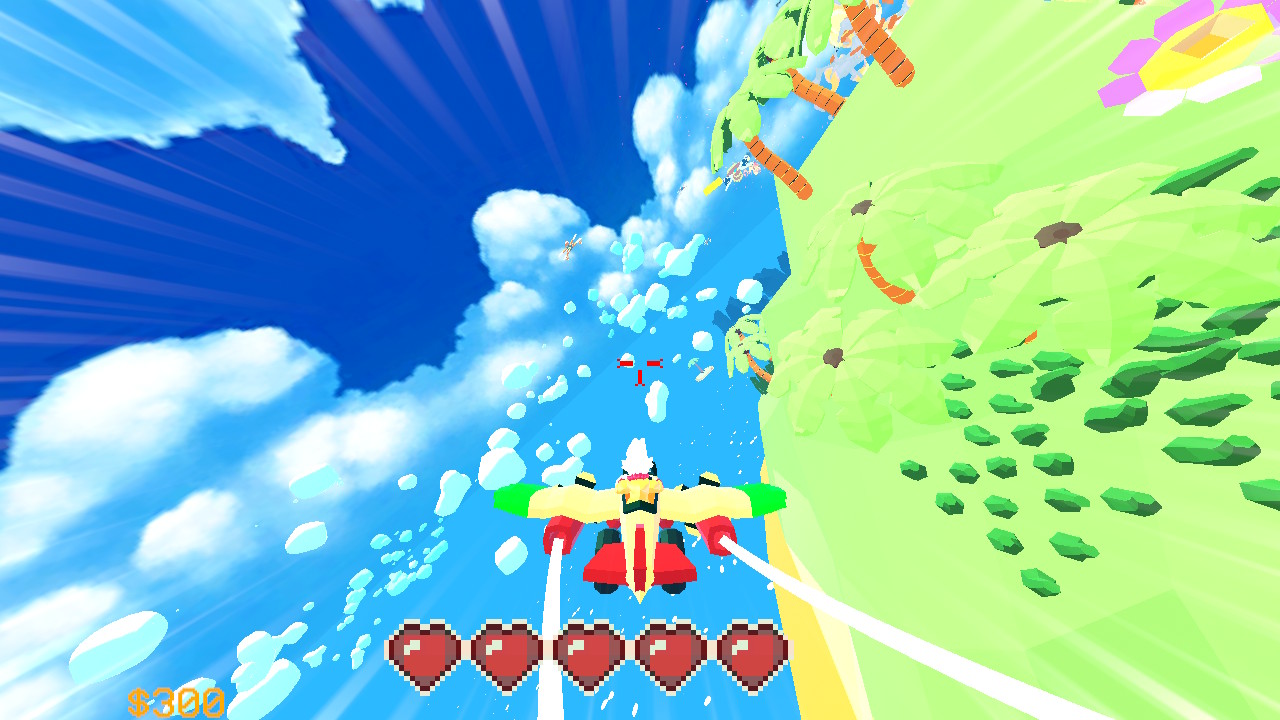
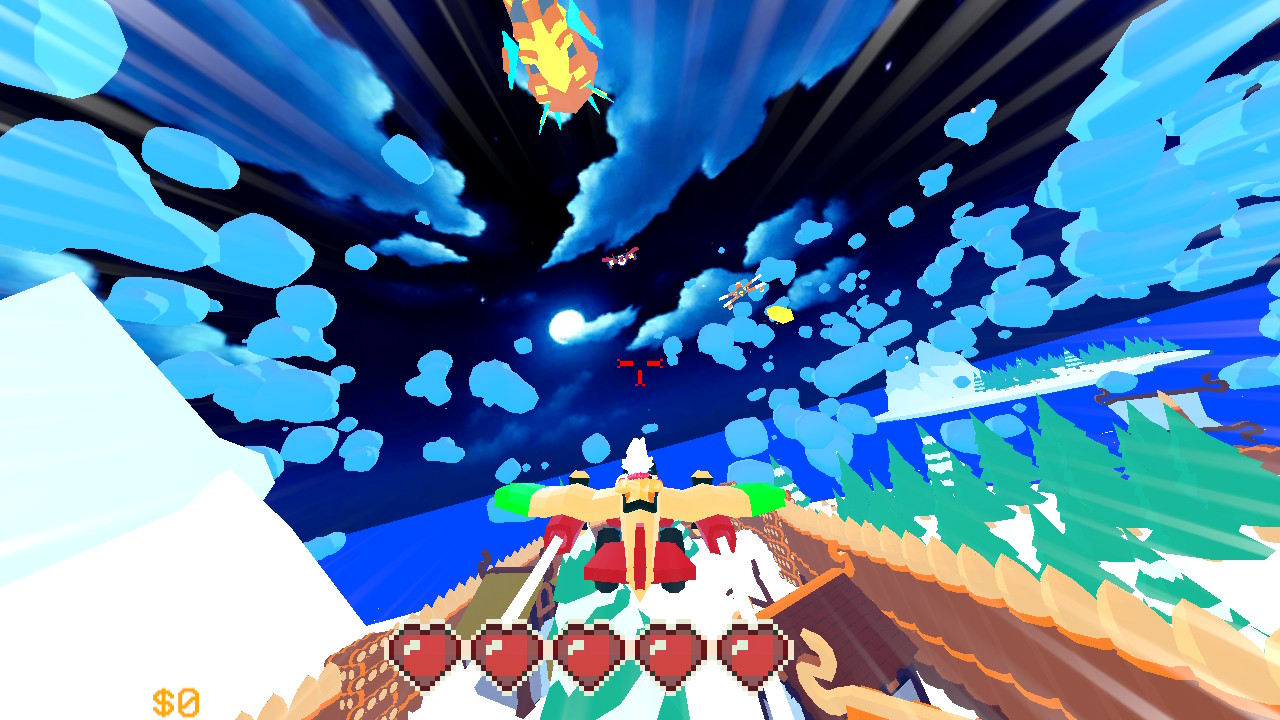
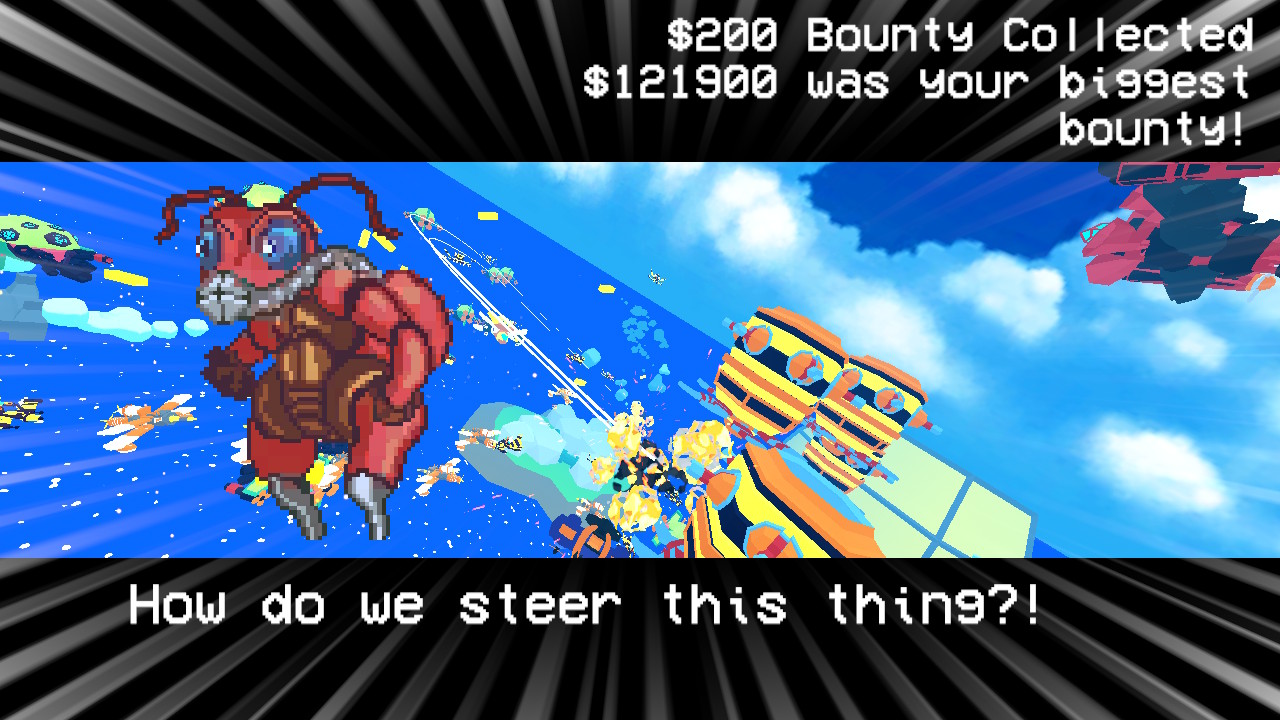
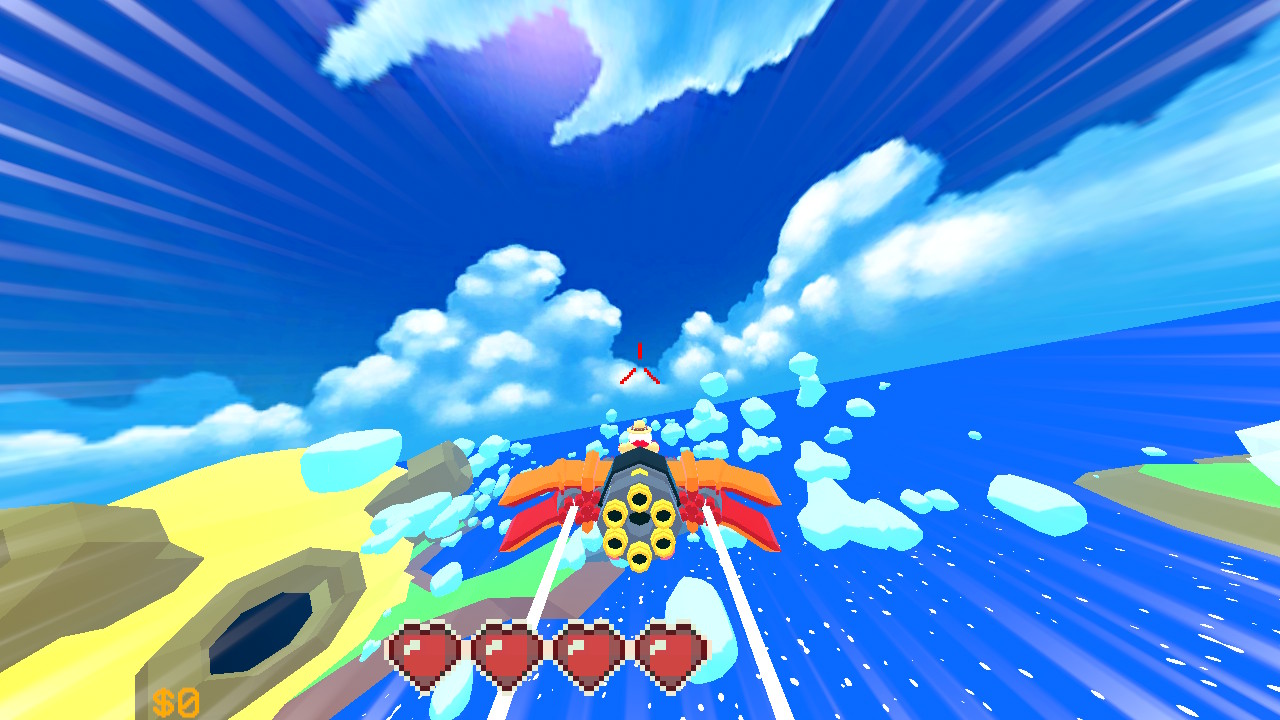
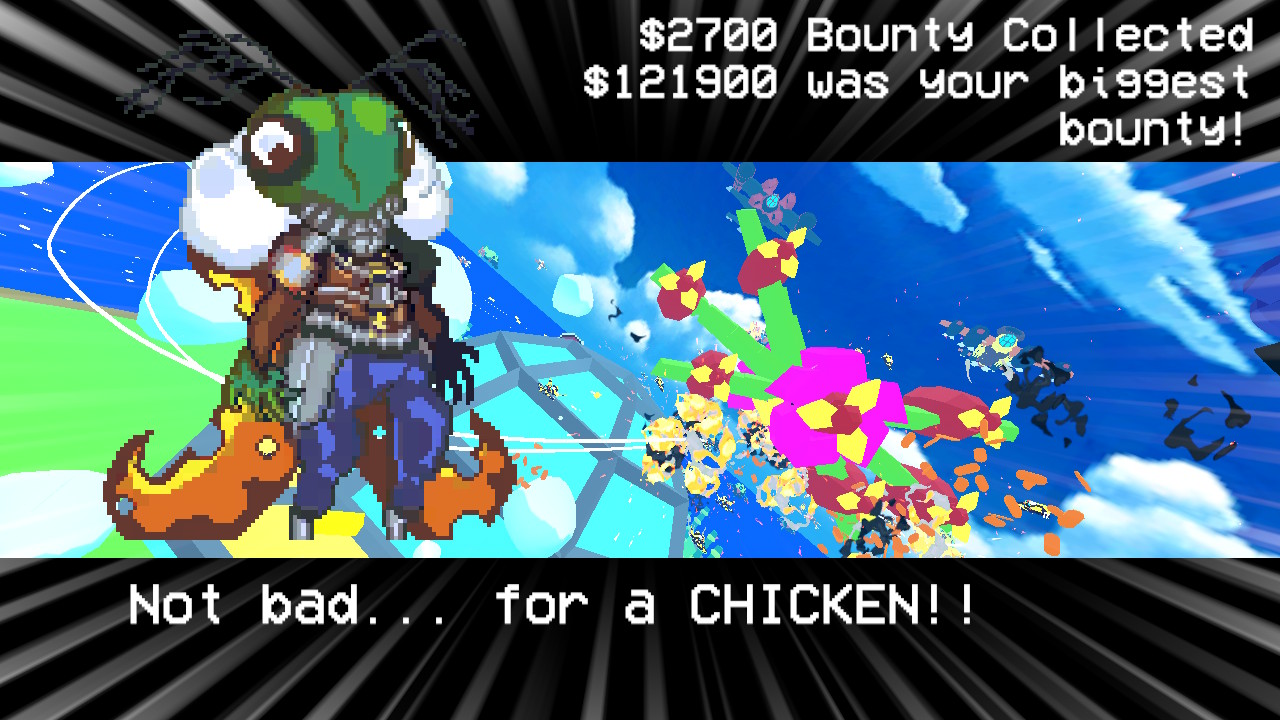
Despite the healthy amount of levels to tackle, the game is over a little too quickly. That’s more to do with me having no patience, but Skycadia is best enjoyed in a casual way and the pick up and go nature of the Switch perfectly compliments the game. Once the levels are clear you can certainly head back to replay them to try and top your score – something that hasn’t gotten old yet. The AI isn’t the smartest and in the busier levels can cause issues, but the control setup is an absolute dream – you’re able outmanoeuvre pretty much anyone in the sky. Skycadia certainly scratches that Star Fox-shaped hole and is a nice game to keep coming back to.
Video Game Fables
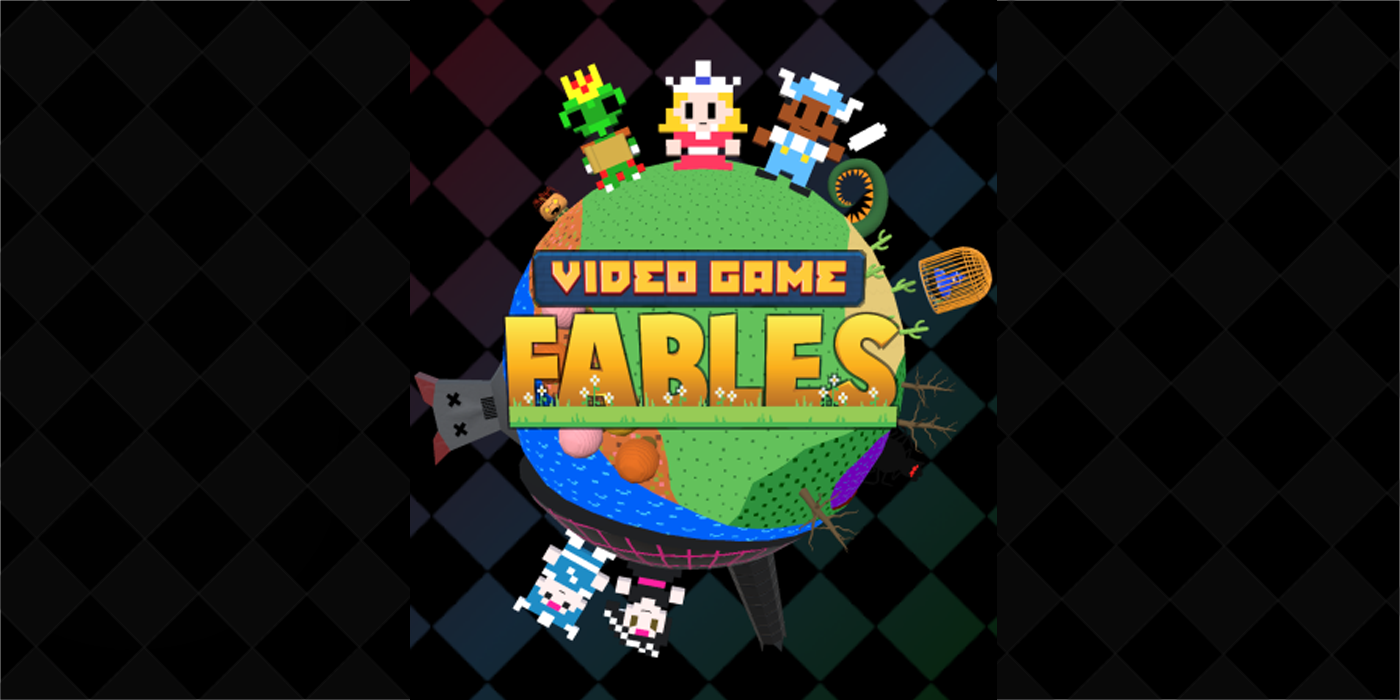
| Key Info | |
| Platform | PC |
| Developer | Momiji Studios |
| Publisher | Momiji Studios |
| Positives | + Playful characters + Effective twist on standard turn-based battling + Tongue-in-cheek storyline |
| Negatives | – Visual styling is rather hodge-podge – Play style is on the slow side – Gets a little samey |
| Price | £15.49 |
| Played by | Drew Sherratt |
In a landscape exploding with action and stealth titles over the past few years, I like that there’s still space for the humble turn-based RPG in 2022. The latest such title to land in the VGN offices is Video Game Fables, by solo developer Matt Sharp of Momiji Studios.
Video Game Fables is a playful little RPG that toys with the idea of characters in games existing even whilst the console is turned off and no players are paying attention. Set inside the world of an RPG that hasn’t seen a player in donkey’s years, you’re introduced to a quirky cast of characters who set off on an adventure while poking fun at some videogame tropes along the way.
The set up to the story isn’t especially clear from the get-go, but the game leans into the idea more and more as you progress. You’re introduced to your party members pretty quickly, and there’s some comedic styling as the three playfully jibes with one another and the NPCs you run into along the way. I was a particular fan of NPC-turned-party member, Nate, who is a bit of a fan boy for the more well-known cast members in the world, and who can rattle off odd facts about seemingly everybody you meet. The script is fun, if not a little hammy, but there are some funny moments amidst the slapstick.
The game’s visuals aim for a retro feel, with the characters given a 2.5D Paper Mario-inspired look with a pixel art style for some added throwback energy. I think this could have been a homerun look if it had been used consistently, but sadly, the styling is a bit all over the place. There’s a hodge-podge mix of true 2D, 2.5D and 3D elements, along with pixel art and real world textures that makes for an inconsistent and pretty unattractive experience.
The battle mechanics are much more consistent though, and there’s some interesting tweaks to the general turn-based formula that mix things up a little. Like Final Fantasy X, you can see the order in which each combatant will take their turn, but in Video Game Fables can choose to delay when your actions take place to get the maximum benefits out of your stat boosts. There are some fun boss fights that play with the formula too, and despite some overly keen HP totals, these fights stand out as the best in the game.
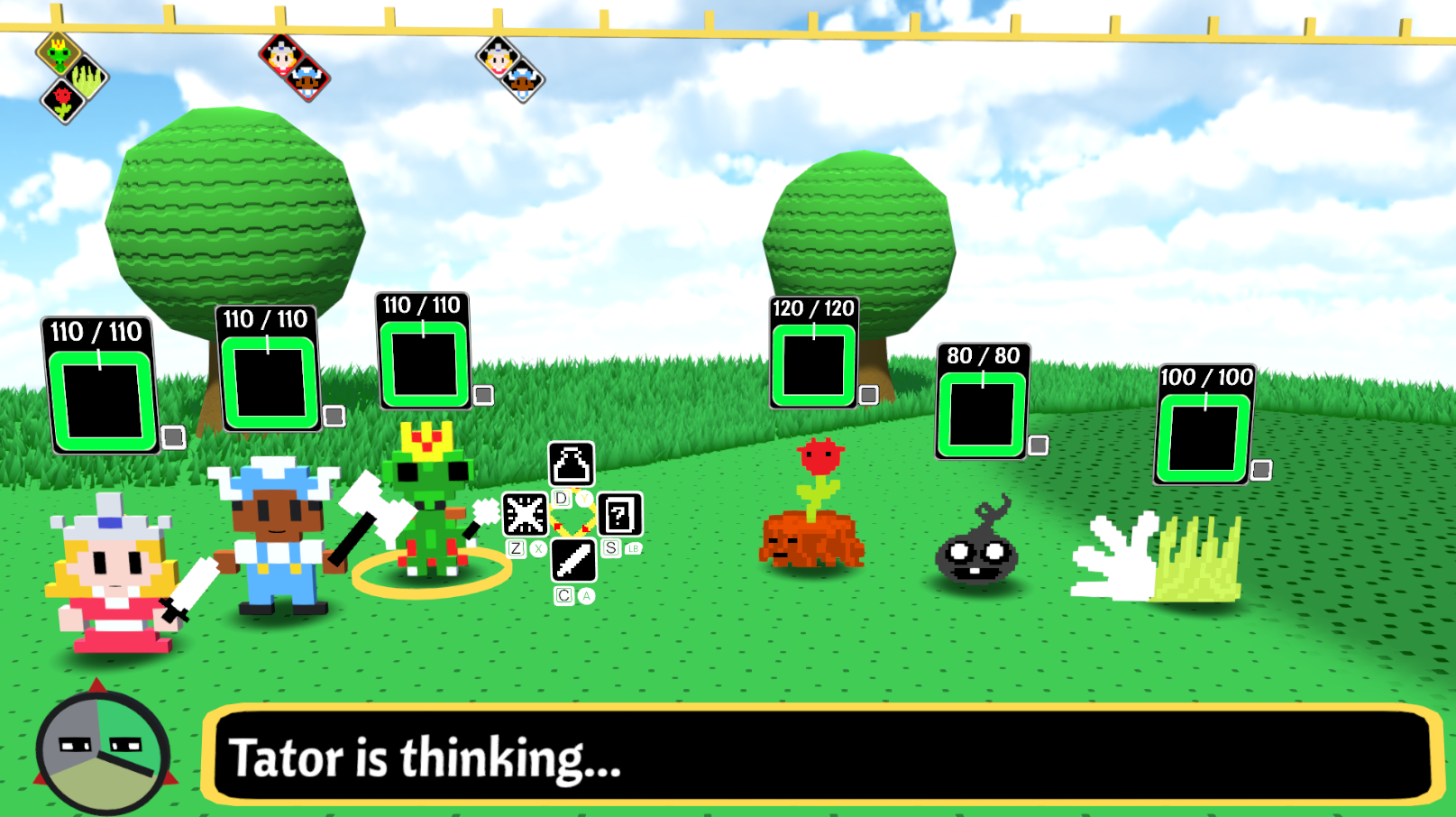
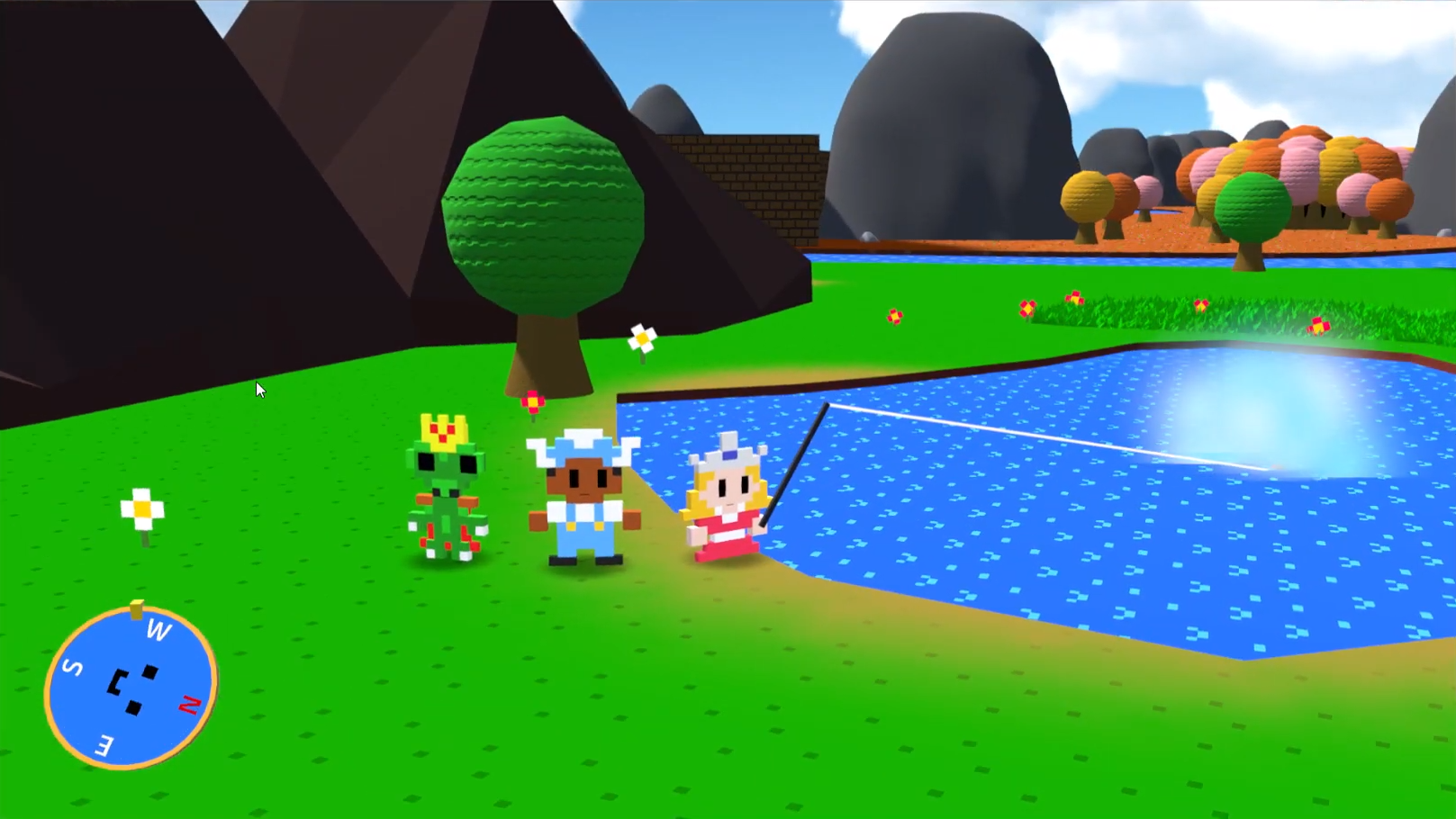
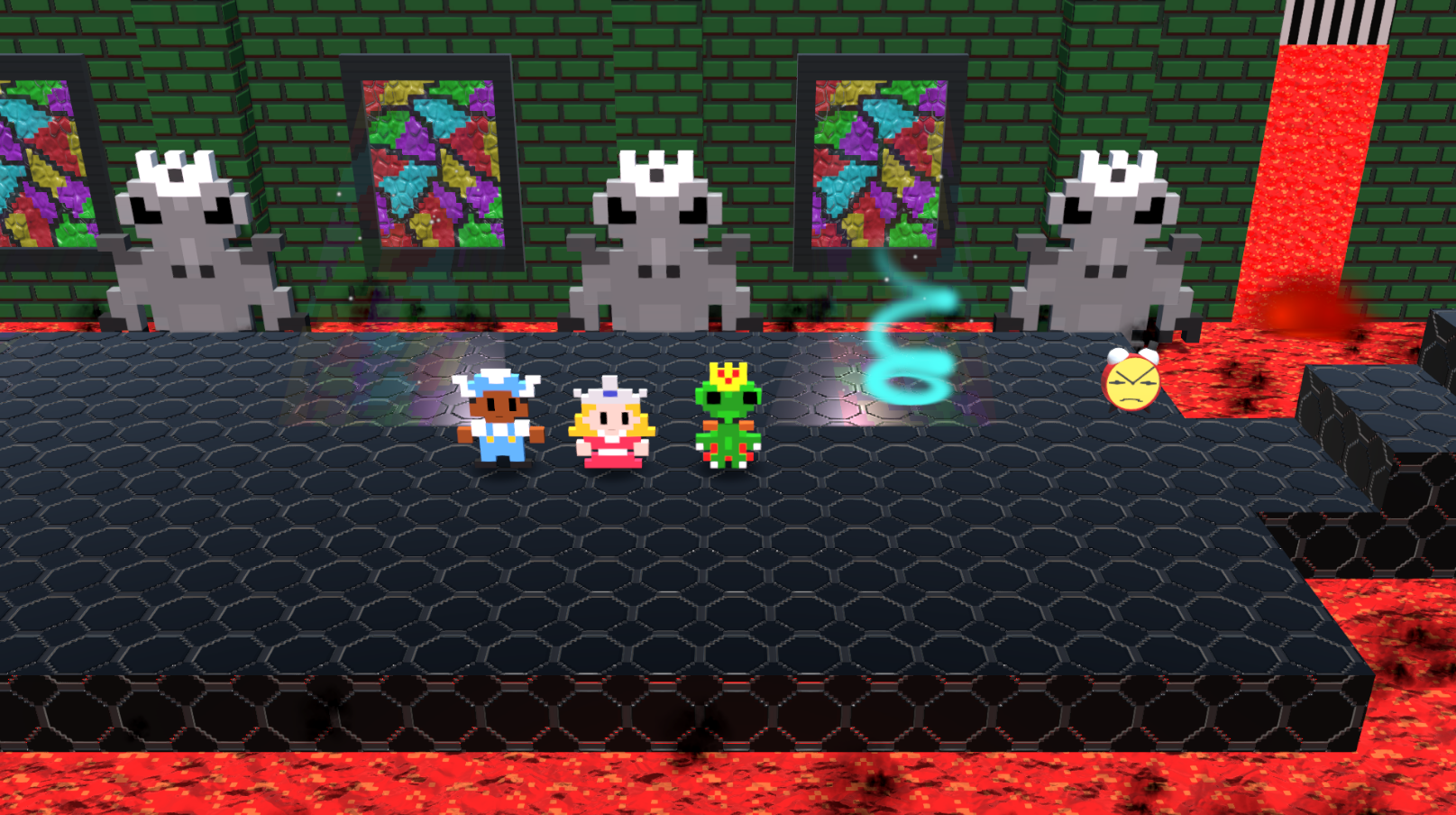

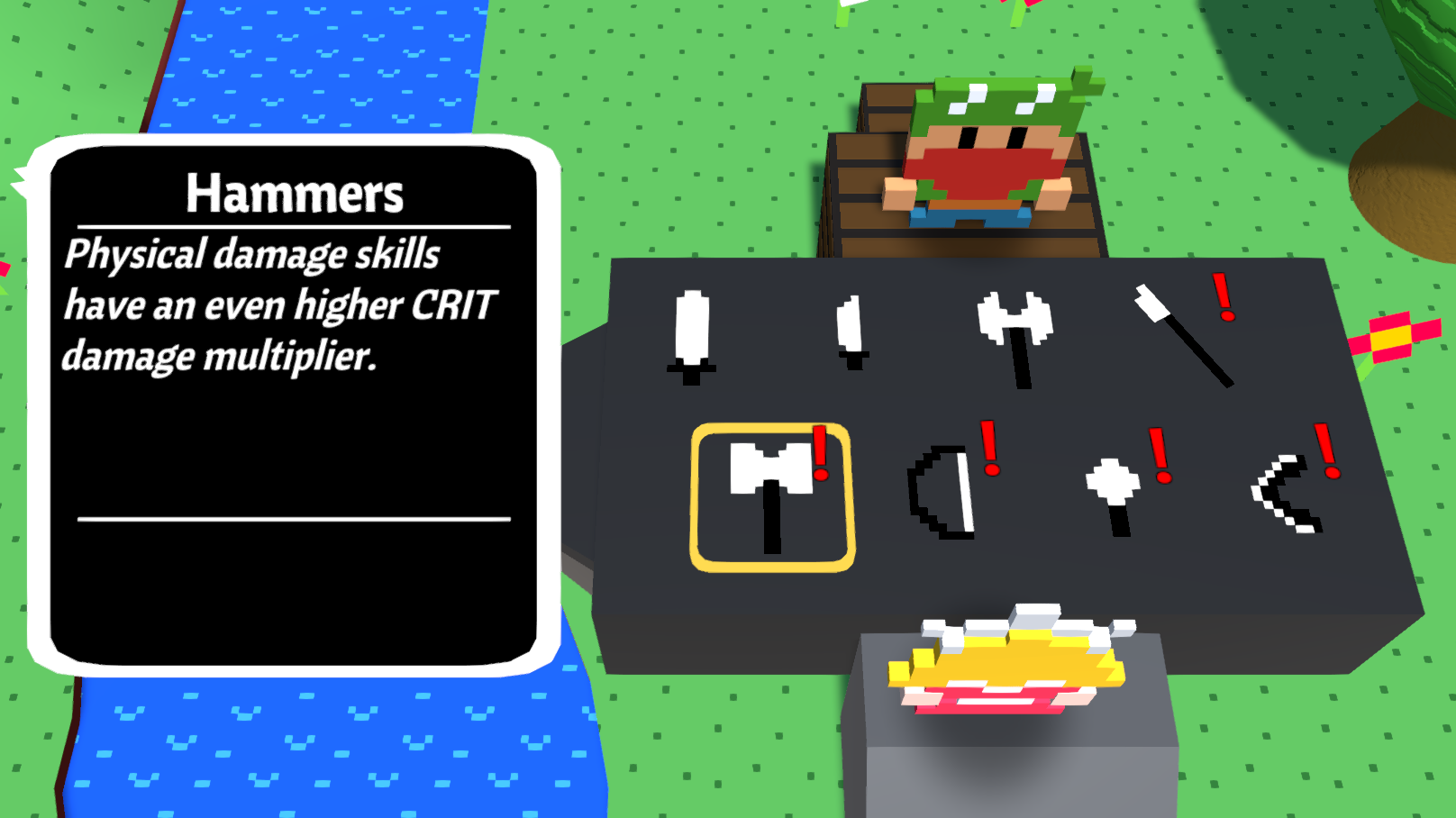
Video Game Fables is a lighthearted romp through an old-school RPG world that doesn’t take itself too seriously. There’s some quirky characters and a tongue-in-cheek plot underpinning some simple, but solid, battle mechanics. Retro RPG purists and fans of fourth wall breaking comedy will enjoy this one if they’re able to look past the scattershot visual design and sluggish pace.


